How to get around Indonesia – tips for smooth island-hopping

Dec 6, 2023 • 7 min read
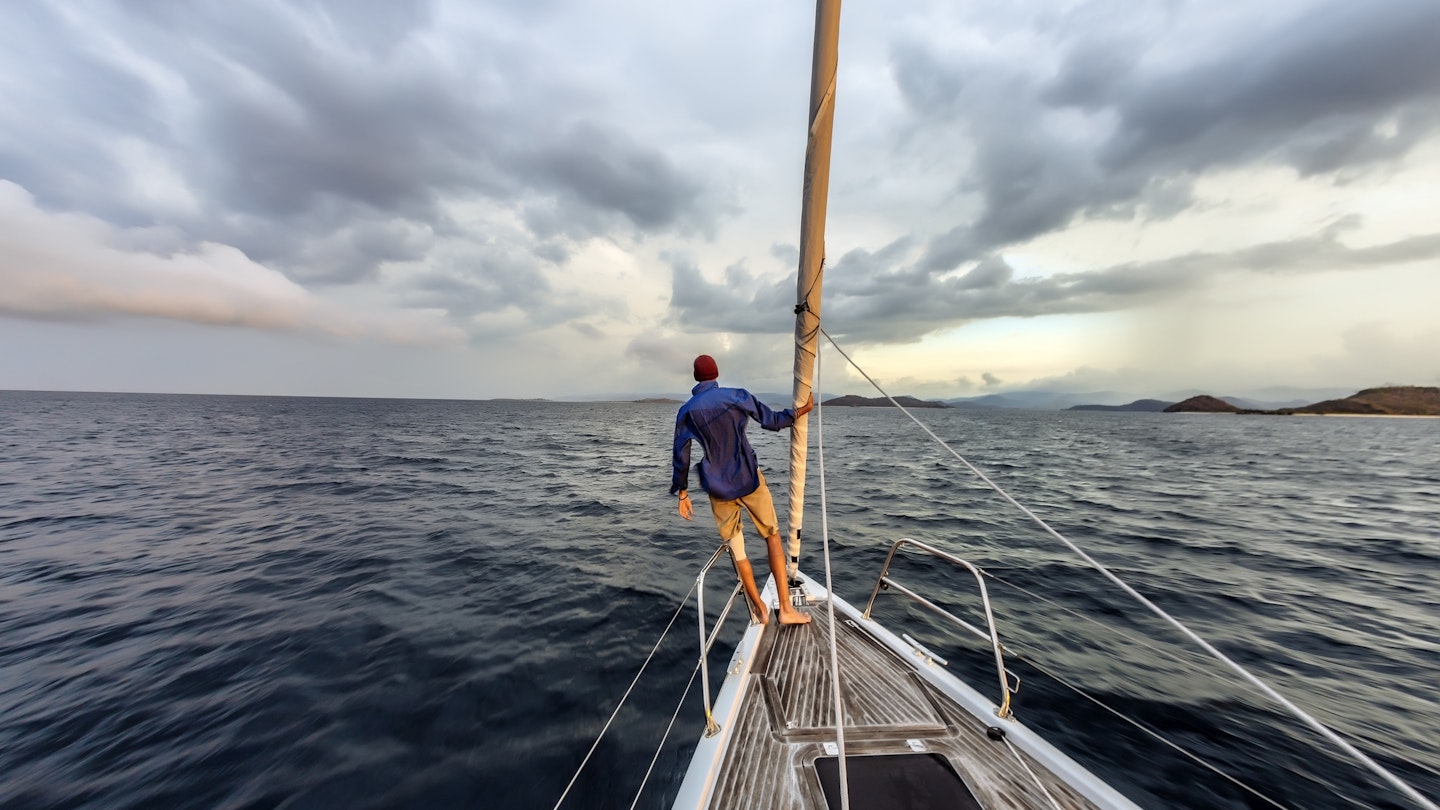
With these tips on how to get around Indonesia, you'll reach the region's most stunning locations © Konstantin Trubavin / GettyImages
With tens of thousands of islands scattered some 5000km (3100mi) from east to west, Indonesia looks like anything but a single country. Vast seas, impenetrable jungles, rugged mountains and rough roads require extra patience for those who want to explore this fascinating archipelago.
But the good news is, traveling has been easier in recent years. Airplanes have replaced boats and highways have reached remote areas. But you can always choose some other slower – yet evocative – traditional ways to get around. Here is what you need to know to navigate Indonesia with ease.

Fly to reach the far-flung islands
As low-cost carriers usher in flying, almost everyone now flies between and within islands. Budget-conscious travelers usually fly Citilink , Lion Air , and Sriwijaya Air , but typically those who value punctuality and reliability opt for the national airline Garuda Indonesia. Airfare prices vary greatly, depending on the distance, frequency, and airline standards. From Jakarta , it can be as low as US$35 to Bali , but a whopping US$350 to Papua one-way.
The government has recently pushed the construction of new airports in hard-to-reach tourist destinations such as Labuan Bajo (gateway to the Komodo Islands ), Silangit (to Lake Toba ), and Toraja. Days of grueling journeys are over; you can now reach your dream destinations in hours from Jakarta. Most flights to Maluku or Papua transit in Makassar , the aviation hub for eastern Indonesia.

Take a boat for a genuine island experience
The primary sea transport operator – government-owned Pelni – connects hundreds of coastal cities all over Indonesia. It would be wise to book early to reserve seats. Tickets from Jakarta to Papua are as low as US$70, but it is an arduous seven-day journey. You have been warned.
If you fancy shorter, more reliable boat trips, your best bets are the ferry crossings between islands. The classic island-hopping route is to travel overland through Java, then cross to Bali, Lombok , and all the way eastward to the Komodo Islands.
Riverboats used to be the main transport in heavily-forested Kalimantan , but they were quickly replaced by cars with the emergence of new roads. Nevertheless, you can still take a four to six-day boat tour package along the Mahakam River to visit traditional Dayak villages deep in the jungle.
Trains are a pleasant way to enjoy the rural scenery
Trains may be the most comfortable and reliable way to travel overland across Java, where most of Indonesia’s railways are located. The actual irresistible highlight is the unrivaled scenery of mystical Javanese volcanos and lush rice paddies visible from your train window.
Train tickets can be booked even a month in advance through the KAI website. The Executive Class has reclining seats and freezing air-conditioning that makes you forget that you are in a tropical country (remember to bring jackets). The Economy Class seats are non-reclining and can be very crowded.
You can also explore some parts of Sumatra , including Aceh and North Sumatra , by rail. The Trans-Sulawesi railway project has kicked off around Makassar as well.

Rent a vehicle to explore off-the-beaten-track destinations
The public transport network in Indonesia is considerably limited, even in the most developed Java and Bali. Having your own vehicle will give you more freedom to explore remote areas.
Renting a car is sweat-free: all you need is a passport and an international driving license, and remember that Indonesians drive on the left. Car rental starts from US$40 a day. Be prepared for varying road conditions, from potholes to heavy traffic jams. It can be much better to hire a local driver.
In Bali and Lombok, renting a moped may be the easiest way to explore the islands. Don’t forget to wear a helmet, even if you just sit on the back of a motorcycle.
Buses are affordable and convenient
Buses are still the main land transport in Indonesia as they’re cheap and readily available at almost any time. Advance booking is generally unnecessary, except during the Eid holidays when millions of Indonesians flock to their hometowns.
Among the numerous bus operators across Indonesia, the government-owned DAMRI promises a vast network and reliable service. You can book tickets from their website or through its apps.
The economy buses are the cheapest, but they're slow; expect frequent stops as passengers get picked up along the way. Some touristic areas like Yogyakarta and Toraja have executive bus services with comfortable reclining seats similar to that of business class flights.

Beat Jakarta’s traffic jams by using public transport
Jakarta is notorious as one of the world’s most congested cities, but its extensive (albeit not fully integrated) mass transport system helps to reduce the pain of getting around.
The Transjakarta buses run in dedicated tracks, avoiding frustrating traffic jams. With so many corridors, routes can be confusing, but you can use Trafi apps to help you navigate. Most tourists stick to Corridor 1, as it traverses Jakarta’s main attractions such as Kota Tua, Monumen Nasional , Museum Nasional , and Roundabout Hotel Indonesia .
The newly built MRT Jakarta is the most modern mode of transport in Jakarta today, but its short track distance is yet the concern of most foreign visitors. The same goes for LRT Jakarta .
Be mindful that public transport in Jakarta runs on a cashless payment system. You can get a transport card at the MRT stations or some Transjakarta bus stops. Top-up can be done at MRT stations or any Alfamart convenience stores all over Jakarta.
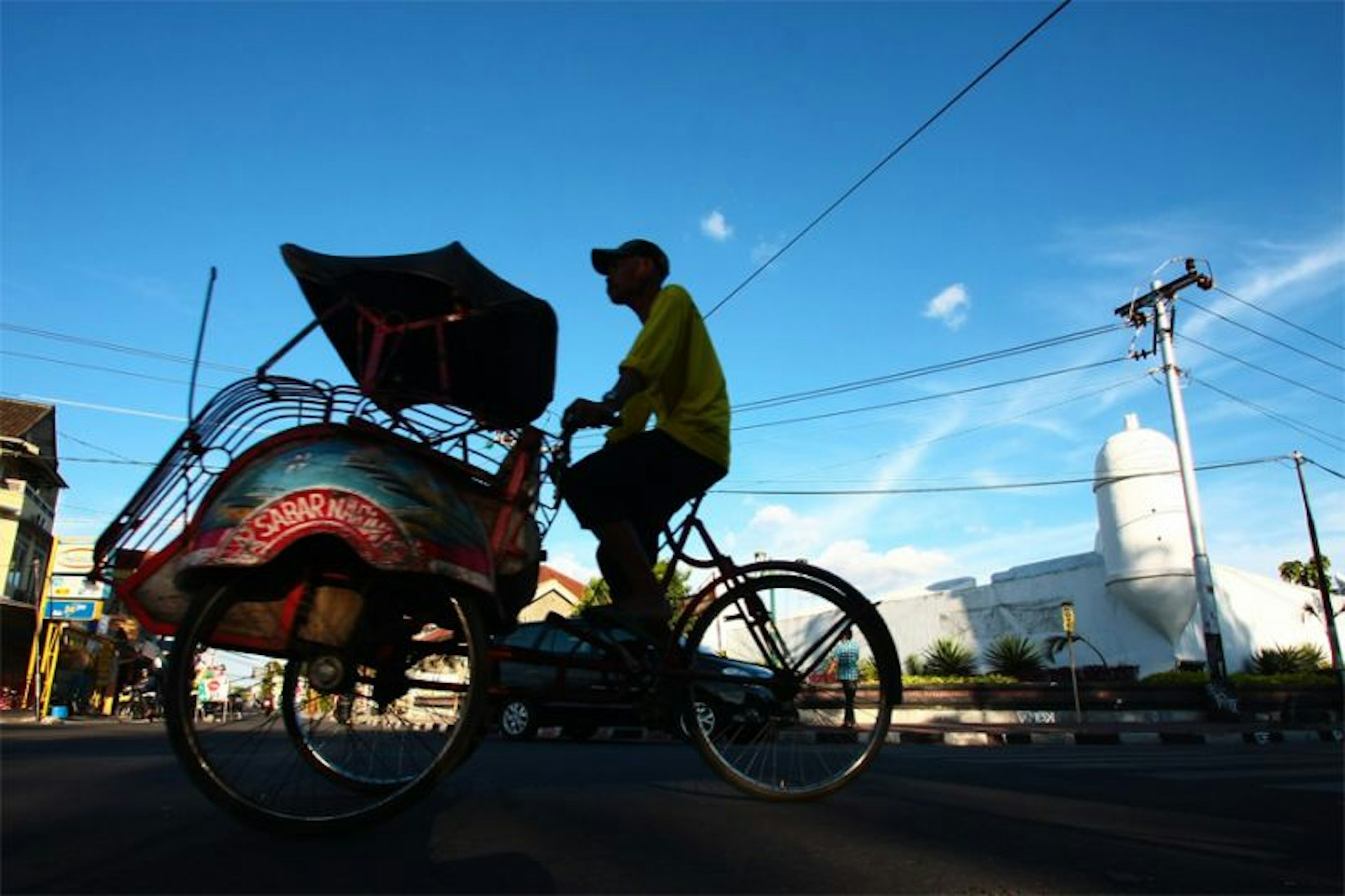
For a touch of nostalgia, hail a becak
The traditional manual tricycle rickshaw, becak , used to rule Indonesian streets, but as it has been banned on the main roads of many cities, it’s now almost just a memory. But becaks have not entirely disappeared. You can still find them in some tourist destinations in Jakarta and Yogyakarta for visitors who want to experience a bit of Indonesia’s past.
Becak also has evolved into motorized tricycles – the bajaj in Jakarta or the bentor ( becak -motor) in Sumatra and Sulawesi . It still provides locals with affordable and practical short-distance transport. If you want to learn the history of becak , the best place to start is the Indonesian Becak Museum in Bali.
Ridesharing apps make life easier
As Indonesians have embraced digital technology, ridesharing apps have become an everyday lifestyle in urban areas. The biggest, Indonesian-owned Gojek was initially created to make ordering motorbike-taxi ( ojek ) convenient. It then grew into a super-app, where you can order anything from taxis, cars, food deliveries to groceries.
The app is bilingual; there’s an automatic chat translation feature to help you communicate with non-English speaking drivers. Gojek is in more than 160 cities across Indonesia, even in remote Papua. No matter where you are, getting around is as easy as tapping your fingers on a smartphone screen.
Accessible travel in Indonesia
Indonesia can be quite challenging for people with disabilities. The potholed and uneven sidewalks are quite a hassle, and street vendors often block the special lanes for blind pedestrians. However, Jakarta's main streets of Thamrin and Sudirman and most modern malls are designed with accessibility in mind.
Transjakarta bus is not recommended for those with mobility issues since most bus stops involve climbing an overpass via stairs, and you literally have to jump into the bus. However, MRT stations, including the Railink airport trains in Jakarta and Medan, are accessible in a wheelchair.
Despite being the most popular international tourist destination, Bali is not yet wheelchair friendly. You can check specialist tourist operators, such as Bali Access Travel , and don’t forget to visit Lonely Planet’s Accessible Travel page to download the complete guide for accessible travel.

Why I love getting around Indonesia by boat
Many people end their travels in Indonesia without even taking a single boat trip. Such a shame as water dominates almost 80% of Indonesia’s total area, after all. Boat trips may be slow, but they open an opportunity to dive into the spirit of Indonesia as an archipelagic nation.
A sailing trip from Labuan Bajo to Komodo on a traditional pinisi sailboat would be magical, combined with some short snorkeling stops as you wallow in the company of an impressive squadron of manta rays. I believe no Indonesian trip is truly complete without experiencing the embrace of its vast ocean.
This article was first published Mar 25, 2022 and updated Dec 6, 2023.
Explore related stories
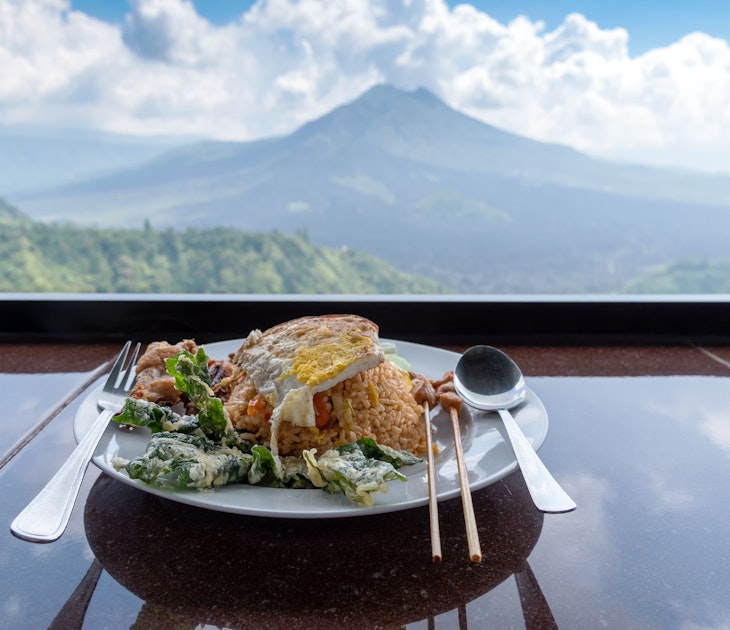
Tips & Advice
Apr 29, 2024 • 6 min read
Explore Indonesia’s diverse culinary landscape across the world's largest island nation, from satay to the globally renowned beef rendang.
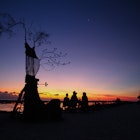
Apr 22, 2024 • 6 min read
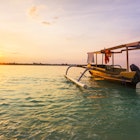
Apr 21, 2024 • 6 min read

Apr 20, 2024 • 5 min read
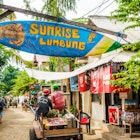
Apr 18, 2024 • 5 min read
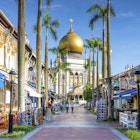
Apr 16, 2024 • 12 min read

Mar 8, 2024 • 10 min read
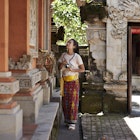
Jan 18, 2024 • 8 min read
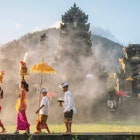
Jan 17, 2024 • 6 min read

15 Most Beautiful Indonesian Islands To Visit (+ Travel Tips)
By: Author Angela Price
Posted on Last updated: April 15, 2024

The beautiful Indonesian islands in Southeast Asia have drawn travellers to their shores for decades.
With over 17 000 islands in the Indonesian archipelago, there is plenty to see, but it can be confusing which island to choose when planning a trip to Indonesia.
The must-see main islands of Indonesia, like Bali, Gili Air and Java, offer visitors a cosmopolitan vibe, with many digital nomads living out their days in trendy cafes and on sandy beaches.
But head off the beaten track to places like the Banda islands, and you will find an authentic taste of colonial Indonesian alongside incredible natural features.
Whichever one of the Indonesian islands you choose, you will have the holiday of a lifetime.
This travel guide may contain affiliate links – For more information, please read my disclaimer and privacy policy.
Do you need to arrange travel insurance, car hire or accommodation? Please check out my resources page to help you plan your trip.
Table of Contents
How to choose the right Indonesian Island
All travellers are looking for something different to experience, and a trip to the Indonesian islands offers visitors some very diverse experiences.
Expect to find incredible diving, bucket-list wildlife experiences and beach party vibes.
Or, for those looking to get away from it all, some of the Indonesian islands found off the beaten track will be untouched by mass tourism and retain their authenticity.
I have compiled this list of the best Indonesian islands to visit with the help of fellow travel writers who have experienced each one themselves.
Map of 15 Best Places to Visit in Indonesia
I bet you’ve already seen thousands of pictures of Bali on Instagram and in travel magazines – I know I did! The whole island seemed like paradise based on the photos, so naturally, it was at the top of my bucket list for a long time.
We spent two weeks in Bali on our first visit to the island, which has been one of my favourite travel experiences ever since.
We visited the island at the end of October, technically the start of the rainy season, but we got very lucky as we had perfect weather.
If you’re visiting Bali for the first time, I recommend going between April and September.
Although Bali seems like a teeny-tiny island on the map, it’s pretty big. We stayed in different parts of the island for a few days to discover individual areas.
The most popular way of getting around in Bali is to rent a scooter; however, the traffic is pretty overwhelming, and I wouldn’t recommend it if you don’t have any prior experience.
We hired a private driver instead, so we didn’t have to worry about transportation; it was the best choice!
Favourite destinations in Bali
We started the trip in Canggu, home to some of Bali’s best cafes and restaurants. Then we spent a few days on the nearby Nusa Islands before moving to the cultural heart of Bali, Ubud.
For fabulous restaurants, I loved the Kynd Community in Seminyak (vegan), Lazy Cats Cafe in Ubud, and The Avocado Factory in Canggu.
This location was hands down my favourite part of the island, and it’s a great base to visit some of the best temples, waterfalls, and rice terraces in Bali.
We also took a day trip to East Bali from Ubud, where we visited the famous Pura Lempuyang Temple and climbed on top of Mount Batur.
For the last few days, we moved to Munduk in northern Bali. This part of the island is unique as it has a slightly different climate and is characterized by lush green mountains and misty lakes.
As you can see, Bali is diverse, and you can do anything from lying on the beach, surfing, and visiting waterfalls to volcano trekking, temple hunting , and so much more. It’s truly a paradise on Earth!
Insider Top Tip:
I loved Munduk Moding Plantation in the north, they have an epic infinity pool and the whole property is beautiful.

Nusa Penida
Nusa Penida, situated near Bali, is hands down my favourite island in Indonesia. I have visited twice and will return on my next visit to this part of the world; that’s how much I love Nusa.
I initially visited this Indonesian island to see the famous viewpoints of Kelingking Beach, Broken Beach and Angel Billabong , but Nusa Penida turned out to be so much more!
The best way to visit the island is to hire a scooter and go around to see all its epic spots – and there are quite a few!
Some must-see places include Diamond Beach, visiting Rumah Pohon Tree House at sunrise to fully appreciate its jaw-dropping scenery and swimming in Tembeling natural pool, a little off-beaten track.
My favourite activity was a boat tour and swimming with manta rays.
The first time I travelled to Nusa Penida was in June, and the weather was perfect – blue skies and 30 degrees Celsius; the second was at the end of the rainy season in March, and I had a few cloudy days with some rain.
One of the best places to stay in Nusa Penida is the area of Crystal Bay, and I stayed in La Roja Bungalows , an excellent hotel with hostel options.
I visited Penida island from Bali along with Nusa Lembongan and Nusa Ceningan, two smaller islands nearby.
Nusa Penida is relatively small, but you need at least two days to explore most of its epic places. There is an excellent ferry service between the islands.
Make sure you go to Penida Colada Beach Bar, which is super cute and has fantastic vegetarian food and if you own a drone, visit Teletubbies Hills!

I visited the Indonesian island of Lombok to experience the beautiful white sand beaches, attend a yoga retreat and enjoy the slower pace of life on a less-developed island.
It also offered an interesting cultural contrast with the Hindu tradition of Bali, as most locals on Lombok are from the predominantly Muslim Sasak cultural group.
My trip to Indonesia took place in September, and the weather was consistently dry, warm and sunny.
The island of Lombok is similar to Bali in physical size and population.
Besides enjoying Lombok’s best white sand beaches , visitors can try surfing, snorkelling, cooking and yoga classes, waterfall hikes, climbing and trekking around the active volcano of Mount Rinjani or visit a textile and weaving cultural village experience.
A highlight for me was an evening at Ashtari, which featured a restaurant, lounge, and a covered outdoor yoga studio overlooking the ocean.
I visited this part of Indonesia on an island-hopping tour of Bali, Lombok and the Gili islands , and arrived from Gili Trawangan via a private-hire speed boat and returned to Bali on a public ferry.
I hired a private minibus to travel around the island of Lombok, but rental motorbikes are also popular.
My accommodation in Lombok was in the seaside village of Kuta Lombok at the Kuta Baru Hotel, which had a large outdoor pool area and offered wifi and daily breakfast.
A great beach I visited was Selong Belanak, which was ideal for learning to surf. We often saw herds of water buffalo walking along the beach!

One of my favourite islands in Indonesia is Java. It is located between Bali and Sumatra and is a real travel highlight of the country. We chose Java because of the impressive volcanoes, mountains and cultural sites to explore. We travelled to Java in April, and the weather was excellent: not too hot and hardly any rain.
Thanks to the excellent location, we arrived comfortably by ferry from the neighbouring island of Bali, with Java being the last stop on our island tour. As I said, the island is extensive; however, you can travel everywhere by bus or minibus. There are good connections to the capital by train.
Java is one of the largest Indonesian islands, with over 130 million inhabitants. 60% of the Indonesian population lives here. Thanks to the size of Java, we could experience some incredible sights.
Prambanan, the largest Hindu temple complex in the country, was an impressive landmark and a UNESCO World Heritage Site.
I also particularly loved the Buddhist temple complex Borobudur. In addition, there are also numerous impressive natural wonders, such as the volcano Bromo and the sulfur volcano Ijen, where we did unforgettable hikes.
As an accommodation tip, we can recommend the Nextdoor Homestay in Yogyakarta . The lovely garden has a small pool, beanbags and a cosy atmosphere.
Head to Yogyakarta, which has made a name for itself as a cultural capital for its Indonesian street art and as a centre for yoga retreats.

When I visited Indonesia, one thing I wanted to do was an Orangutan trek .
The obvious place everyone mentions is Borneo; however, what put me off, was that most of the tours were over-invested, making them more expensive. After speaking with other travellers and researching, I decided on Sumatra island instead.
Sumatra is the largest island entirely within Indonesian territory; you could easily dedicate a whole trip to Indonesia on this island alone. However, my focus was on seeing orangutans in the wild . One of the best places to see them is near Bukit Lawang in the island’s north.
I travelled throughout Sumatra during July and August. Although it was warm and sunny most of the time, there were also daily downpours; I was in the rainforest, after all, so it did rain a lot; however, even during the nights, it was not cold.
The town of Bukit Lawang is a bit of a challenge to reach; this is also why Orangutan tours here are much quieter than on Borneo island.
How to get to Bukit Lawang
The nearest airport is in the city of Medan, which is 86km away, and from there, it’s over 4 hours by taxi to get to Bukit Lawang, the roads are slow and bumpy, but it’s a great insight into local life as you pass through many small towns. You could get a public bus from Medan; however, this does require a whole day of travel to make the connections.
Once in Bukit Lawang, you’ll find a small cluster of houses and accommodations straddling the Bahorok River, which runs through the centre. It’s in the heart of the jungle and nearby palm plantations. Bukit Lawang is the gateway to see Orangutans because it’s a stone’s throw from UNESCO-listed Gunung Leuser National Park.
Although Bukit Lawang has some basic shops and facilities, take everything you need for the jungle.
Waterproofs, bug repellants and clothes that are quick-drying and cover your arms and legs will protect you from mosquitos, flies and leeches.
In some parts of the jungle trek, you will have to wade through shallow rivers, so take shoes that can get wet and swimwear to bathe in the rivers at the camps.

Sulawesi is one of the biggest Indonesian islands and an excellent choice for travellers who want to get off the beaten path. It has everything, from stunning beaches and lush jungles to incredible culture and food.
Visiting the island has been an incredible experience for me; away from it all, I discovered a few places where the culture is truly unique.
There are some ferry routes to the island, but your best option is to fly to Manado or Makassar. The weather is pretty consistent year-round (hot and humid).
The island is massive, so consider transportation time when planning your Sulawesi itinerary ; you will lose a day when going from one place to another. You can more or less easily travel via public transportation although renting a car can be a more comfortable way of travelling.
Must-see locations on Sulawesi
If you want a lovely beach and great diving, head to Bira, a laid-back town with a quiet atmosphere. For unique cultural experiences, take a boat tour on Lake Tempe and visit a traditional floating village. Make sure to visit Tana Toraja , where people have unique burial traditions you won’t see anywhere else on earth.
In Bira Beach, I stayed at Salassa Guesthouse. The place was basic but conveniently located; the owners were friendly and helpful, serving delicious food.
To get more off-the-beaten path, head to Lore Lindu National Park, where you can trek to see many endemic bird species and centuries-old megaliths.
Lastly, please spend a few days on the Togian Islands, relaxing at the beach and swimming with jellyfish (don’t worry, they are harmless).
Make sure to try Pisang Ijo and Mi Titi, some of my favourite Indonesian dishes from Sulawesi.

Togian Islands
The Togian Islands are some of the most remote off-the-beaten-path islands that make up the country of Indonesia and comprise an archipelago of 56 tiny islands in the Gulf of Tomini, close to the island of Sulawesi.
The islands are dreamy, with crystal-clear water, powder-white beaches and tropical jungles. The untouched coral reefs and clean water create fantastic conditions for diving.
My mission to explore the best dive sites in Asia and my curiosity to visit an authentic ‘sea gypsy’ settlement took me here. I went to this tropical island paradise in late May, during the dry season that stretches from March to December, which is also a good time for diving.
The highlights of scuba diving from Kadidiri were the spectacular untouched reefs and diving on the wreck of a B24 Bomber plane that crash-landed during WWII, now covered in marine life.
The Bajo settlement, Pulao Papan, is an unreal cultural experience. Here we could see how these ocean-dwelling “sea gypsies” of Indonesia and Malaysia have lived a nomadic lifestyle on the water for centuries. We stayed in their village raised above the water on poles and joined them spearfishing wearing wooden goggles and traditional equipment.
Incredibly, these unique islands remain off the main tourist trail; however, travelling to the Togian Islands is not easy and takes two days by ferry and speedboat. I stayed on the small island of Kadidiri at Black Marlin dive resort, an excellent place to stay with lovely accommodations, a restaurant and a dive centre.
Swim in the jellyfish lake, Mariona lake, where the unique jellies have lost their poisonous sting. This activity is something that can only be done in a handful of places in the world.

Karimunjawa
Karimunjawa is the biggest island in the Karimun Jawa archipelago consisting of 27 islands, some of which are part of a marine reserve.
I travelled to Karimunjawa in early October, when the weather was pleasantly warm, with a few rain showers.
I visited the Indonesian islands as a part of a guided tour and stayed on the island for three days, and one of them was completely rainy; on the other two, there were rain showers for a few minutes, and that’s it.
My guide hadn’t been to Karimunjawa before, but he thought these secluded Indonesian islands would be interesting as they are less touristy and more authentic than others in the region.
Karimunjawa is great if you want to go snorkelling ; this was my favourite part of the stay. It was a full-day trip visiting several nearby islands, seeing corals and the sea life, having fresh fish for lunch, and viewing a sunset from a swing on an uninhabited island.
From my experience, Karimunjawa is great for snorkelling or just exploring a small island for a few days. There are some lovely white sand beaches, a few cute hotels, and just one small town where you can find a scooter rental, a small market, and a few cafes.
I went to Karimunjawa from Jepara on Java island by ferry and returned on a speedboat. I highly recommend the speedboat if your budget allows it.
Karimun Lumbung is a cute accommodation in private huts that you should consider for your stay.

I spent three weeks on Gili Air in Indonesia as part of my 2-year backpacking trip and chose this island because it seemed like a great place to create a relaxing home base for a longer-term stay.
It has a mix of everything that travellers may be looking for: sandy beaches, snorkelling and diving, nightlife, and great restaurants and hotels for a low price. It also offers a gym, cooking classes, a shopping street, and a yoga and meditation studio.
I arrived on Gili Air, directly from Bali, during the rainy season in January. Although it rained often, it would come only in short bursts leaving plenty of time to enjoy the sunshine and otherwise hot and humid island weather.
Travellers can easily reach Gili Air from the other Gili Islands in Indonesia and nearby Lombok and Bali. Plenty of speed boats and larger ferries run services multiple times per day between these islands.
At only 5 square kilometres, Gili Air is one of the smallest islands I’ve visited. You’re never more than 30 minutes away from anything on foot or 10 minutes away by bicycle.
Chill out on Gili Air
My favourite activity on Gili Air was hanging out at the many beachside cafes, bars, and restaurants.
Many have bean bags or cabanas, decorative lights, live music, and plenty of cheap food and drinks, making it easy for travellers to spend all day living the best island life.
While on the island, I stayed at Bel Air Resort , which has beautiful rooms at mid-range prices. Each room has a private courtyard and outdoor shower. The resort has a large pool and a restaurant where guests can enjoy a complimentary breakfast with ocean views every morning.
The waters around Gili Air are relatively shallow, making it easy to go snorkelling on your own to see marine wildlife. Although I didn’t see any sea turtles, a few of them have been seen just off the coast!

Belitung Island
The main reason we visited Belitung Island was the boat tours. Belitung is surrounded by many tiny islands and granite rock formations, making it a paradise for island-hopping boat tours!
In July, we travelled to Belitung, the middle of Indonesia’s dry season, but we still ran into a few rainy days. The island seems to be slightly rainier than average for Indonesia, but thankfully we had planned some buffer days for this, and most of the weather on our trip was great.
The island of Belitung is located off the east coast of Sumatra and almost as big as Bali (about 4,800 square kilometres), so it’s a decent size, but it’s still pretty easy to navigate. The main town area is Tanjung Pandan, which has plenty of hotels, restaurants, and an airport with flights from the Indonesian capital, Jakarta or Kuala Lumpur in Malaysia.
There are many good things to see and do on Belitung island by driving around, but our favourite activity was probably Indonesian island hopping. You can explore the island by car or scooter, and there’s very little traffic on the roads outside of town. We usually avoid renting motorbikes, but the lack of traffic made this island perfect for scooters!
I stayed at MaxOneHotels Belstar , which was friendly and affordable.
Insider Top Tip:
We enjoyed Lengkuas island and the sunsets at Tanjung Tinggi beach. These are two of the most photogenic beaches on the island.

Banda Islands
The Banda Islands in Maluku province is a tiny archipelago that is quite difficult to reach, but it’s my favourite island in Indonesia.
I came to the Bandas searching for incredible snorkelling and seeing the historical legacy of Indonesia’s colonial era. The Bandas indeed delivered! These islands have some of the best snorkelling on earth, and the Spice Islands of fame are peppered with colonial forts, mansions, churches and history from the VOC period.
The weather in Banda is different from the rest of the Indonesian island. While June to September is dry and sunny elsewhere, the Bandas experience the height of the rainy season. I came in July, and it was WET! It rained daily and came down in heavy torrential downpours that lasted a few hours before clearing up.
There are a few guesthouses and warungs, and that’s about it. No cars are on the island; you can walk around it in a few hours. It truly is a quiet and off-the-beaten-path experience.
The snorkelling in the Banda islands is out of this world and the best I’ve ever experienced. If you are looking for big fish such as Napoleons or Baracuda, Keraka island is the place to be. For the best coral and sheer amount and variety of fish, get a boat to take you out to the lava flow on the side of the volcano. Climbing to the top of the volcano gives you a sweeping view of the entire island group.
I reached the Bandas by the twice-monthly ferry from Ambon and continued on to the Kei Islands afterwards.
Vita Guesthouse in Bandaneira is a great place to stay, and their nutmeg jam pancakes are fantastic!

Flores Island might not be on the tourist radar when it comes to travel in Indonesia, and yet, this hidden gem offers a different side compared to popular tourism mainstays like Bali or Lombok.
Most tourists come to Flores because of its proximity to Komodo National Park, home to mysterious Komodo dragons, pristine pink beaches and smouldering volcanoes that mass tourism hasn’t reached.
But that’s not everything that there is to this part of Indonesia.
The good news is that Flores is a big island, and you could spend weeks here getting off the beaten track. However, most tourists only come for a few days to visit Komodo National Park before flying back to Bali or Jakarta.
Visiting the dragons on Komodo Island
Visiting Komodo National Park is possible only with an organized tour with a guide who knows how to spot Komodo dragons and behave around them without jeopardizing everybody’s safety. Komodo dragons reach up to 10 feet (or 3 meters) and can easily eat a full-size deer.
Another famous attraction of the Komodo National Park is the famous pink beach. The pink colour originates from the pigment created by the coral reefs and creates a stunning natural effect. Many tours offer snorkelling equipment to see the stunning corals within 10 feet of the beach.
If you want to escape the crowds, consider visiting the incredible tri-coloured lakes of acid volcanic water in Kelimutu.
I visited Flores in September and had an incredible time with hot and sunny weather and the temperature staying in the 80s most of the time.
Since the island is relatively undeveloped, your best bet is to visit some of the most popular places with an organized tour from Labuan Bajo, the island’s capital.
I stayed at SeaEsta Komodo Hostel and Hotel and highly recommend it to all travellers!

Let’s talk about a lesser-known Indonesian island destination, West Timor, located on the western half of the island of Timor in the East Nusa Tenggara province. Although easily accessible, West Timor is not on the regular tourist path.
I flew into Indonesia from overseas and changed to a domestic flight in Jakarta.
Within Indonesia, you can fly to Timor from Sumba, Flores, Java and Bali.
There are also ferries from Flores and Sumba you can catch to Timor.
Of course, there are beautiful beaches, but I went to see the other unique natural wonders of West Timor .
Some free natural wonders in and near the capital Kupang include an underground lake (Goa Kristal or Crystal Cave), waterfalls, river caves, and a mountain.
When heading outside of Kupang, I borrowed my friend’s moped to partake in the adventure that is driving on West Timor roads!
And within Kupang, I walked and used ‘disco buses’, locals with mopeds/motorbikes who offer short rides for a fee. Visitors to Timor can also hire mopeds.
Christmas is an exciting and colourful time in Kupang, but it is the wet season from December to April, so if you are not a fan of the rain better to travel in the months from May to November.
I was lucky enough to have my friend cook Indonesian delights for me. If you don’t have friends in Kupang, head to Cafe Tebing , near Bolok, for great food and views.

West Papua – New Guinea
When it comes to scuba diving, it’s hard to beat Raja Ampat in Indonesia.
Located to the east, off the northwest tip of Bird’s Head Peninsula in West Papua, Raja Ampat offers some of the best scuba diving in the world . With turquoise water, spectacular coral reefs and the chance to see giant Manta Rays, turtles, dolphins, whales, hundreds of fish species, and tiny creatures, such as stunning little nudibranchs, it’s hard to beat.
Above water, Raja Ampat is gorgeous, with a plethora of jungle-covered islands, white sand beaches and tropical birds.
To get there, it’s usually best to fly into West Papua and spend the night in Sorong before joining one of the many liveaboards for a week of boating throughout the islands.
Getting on a boat is practically the only way to enjoy this area, as most of the magic lies within the Raja Ampat archipelago, once used as a route to trade spices.
While it’s undoubtedly a beautiful place to visit for any adventurer, there’s a lot of magic under the water for those willing to strap an oxygen tank to their back. As someone who loves scuba diving, visiting Raja Ampat was a bucket list opportunity.
As a budget traveller, I chose Wicked Diving, a budget liveaboard diving cruise around Indonesia.
It’s a fabulous year-round destination, but for Raja Ampat diving, the best months are from September to April as that’s when larger numbers of Manta Rays can be seen.

When I planned our three-week trip to Indonesia, I couldn’t wait to take my four children and my husband to Borneo to trek orangutans in the wild. It was a dream for me to see these endangered majestic creatures in their natural habitat.
I booked four days at the Rimba Orangutan Ecolodge in Tanjung Punting National Park in Borneo at the end of March. It was hot and muggy but bug-free.
Borneo is Asia’s largest island and the third-largest island in the world. It is divided into Indonesia, Malaysia , and Brunei, with Tanjung Punting located in Indonesia.
Tanjung Punting National Park contains 1,174 square miles of swamplands and rivers which connect to the Java Sea.
It is the world’s most significant and diverse coastal tropical heath and peat swamp forest. In addition to orangutans, it has remarkable wildlife, including nine primate species, hundreds of birds, snakes, and crocodiles.
How to Get to Tanjung Punting National Park
It isn’t far from Bali, but getting there is not easy as there aren’t any direct flights to Pangkalan Bun airport in Borneo.
Instead, you will have to take two flights totalling 2 ½ hours. If you are flying from another island like us (we flew from Ende airport on Flores), we had to take four flights with a required stay in Bali for the night because of the timing of each of the flights. Each flight was only 1-2 hours long, but they added up.
Once you land in Pangkalan Bun, it is a 30-minute drive to the port and then another 2 ½ hours on a Klotok, a type of floating houseboat, to reach Rimba Lodge , located at the boundary of Tanjung Punting National Park.
We paid a flat rate per person for our accommodation, food, all transportation, and daily tours. The lodge cannot sell alcohol, but you can bring your own.
Our experiences were simply extraordinary. We boated along the river and saw wildlife all around us. We hiked into the jungle, saw dozens of orangutans, and learned about nature, trees, and their life-saving medicinal benefits.
Make sure you bring proper enclosed walking shoes for jungle trips.

In conclusion, Indonesia has diverse cultures, languages, and religions. The country’s natural beauty, delicious cuisine, and friendly people make it an ideal destination for travellers worldwide. Whatever your budget, Indonesia remains a vibrant and dynamic place worth visiting and exploring further.
A popular way to see the Indonesian islands is by cruising on a luxurious vessel , which enables you to enjoy the most rewarding coastal cruise itineraries in the world.
Please Pin for Future Travel to the Indonesian Islands

I would like to receive occasional updates and new travel posts.
Notify me of follow-up comments by email.
Pamela Mukherjee
Sunday 3rd of April 2022
Woow much needed article. I loved the way you described it in detail. Indonesia is in my bucket list for so long. Thanks for the post. Saving it
Puloma Bhattacharya
Saturday 2nd of April 2022
Indonesia is a must visit destination for everyone. The archipelago boasts of some stunning beaches, rice fields, forests and volcanoes. The street art of Yogyakarta is truly inspiring. The islands of Bali, Java and Sumatra as are home to some beautiful heritage sites.
WhereAngieWanders
Yes, the islands are very diverse in what they offer a traveller. I'm looking forward to heading back to explore them in the future.
We haven't yet been to Indonesia or the islands there but I have seen so many amazing photos that I just know we have to go there. I am wondering how much time will we need to visit all these places! Seeing the orangutans in wild would definitely be a dream come true to me!
I think you could visit a few of them by island hopping (similar to Greece) maybe over a couple of weeks. I too would love to see the orangutans.
Indonesia has so much too offer. I always hear about Bali and the Gili islands but it is great that you are showing way beyond this. Komodo and Borneo have been on my list for a while but you have given me even more.
Maria Veloso
Thursday 31st of March 2022
Indonesia is undeniably well-known for its numerous and diverse islands. These beaches are all breathtaking! My top two choices, however, are Nusa Penida and Belitung Island. The orangutan trek also piqued my interest; it's pretty cool.

- Virginia Beach
- History & facts
- Famous people
- Famous landmarks
- AI interviews
- Science & Nature
- Tech & Business
Discover something new everyday
- Famous places
- Food & Drinks
- Tech & Business
The Ultimate Indonesia Travel Guide: 15 Essential Tips for Your First Trip
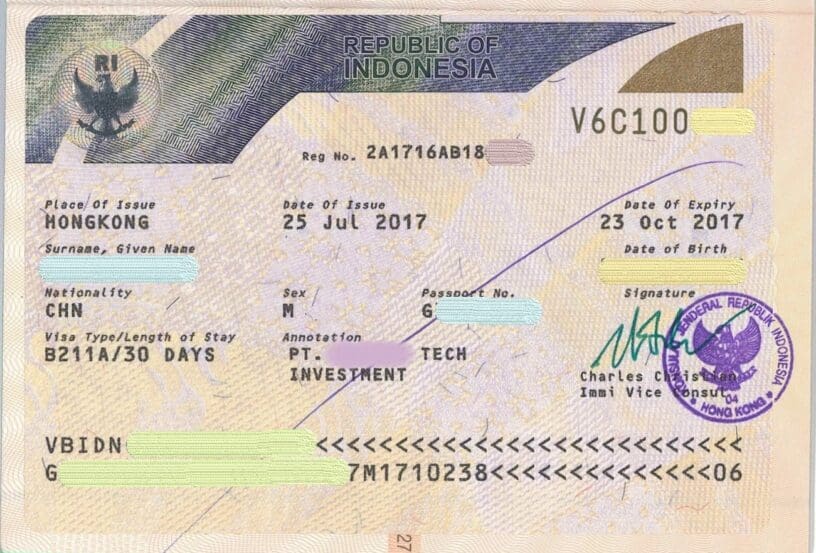
ButcherC , CC BY-SA 4.0 , via Wikimedia Commons
Read Next →

Don’t miss out on planning your next adventure with our exclusive travel guide and tips!

Let us help you on your next trip! Check our travel guide and tips

1. Plan When to Go
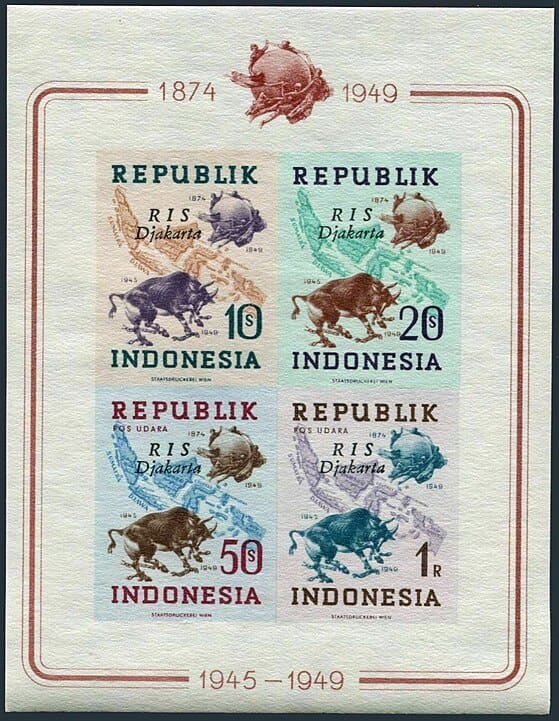
Post of Indonesia , Public domain, via Wikimedia Commons
2. Make Sure You Make a Budget
3. understand the visa rules.
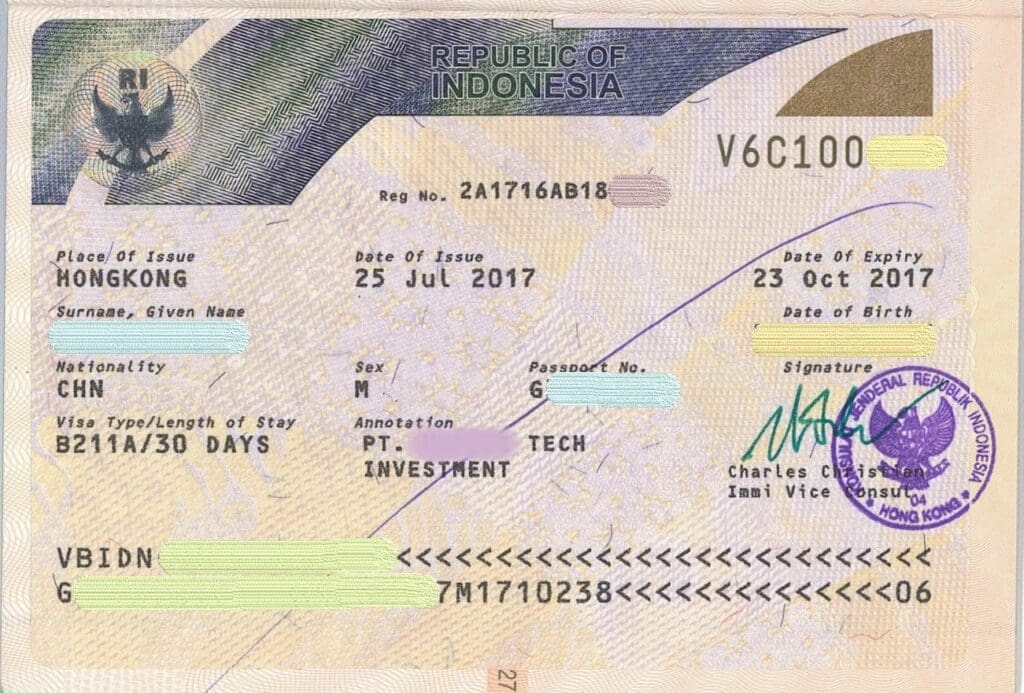
4. Plan for the Local Festivals
5. get good insurance, 6. practice good food safety.

Photo by Anh Nguyen on Unsplash
7. Guard Against Theft
8. take care when drinking alcohol.

Photo by Wil Stewart on Unsplash
9. Make Sure You Pack Mindfully
10. exploring beyond bali.
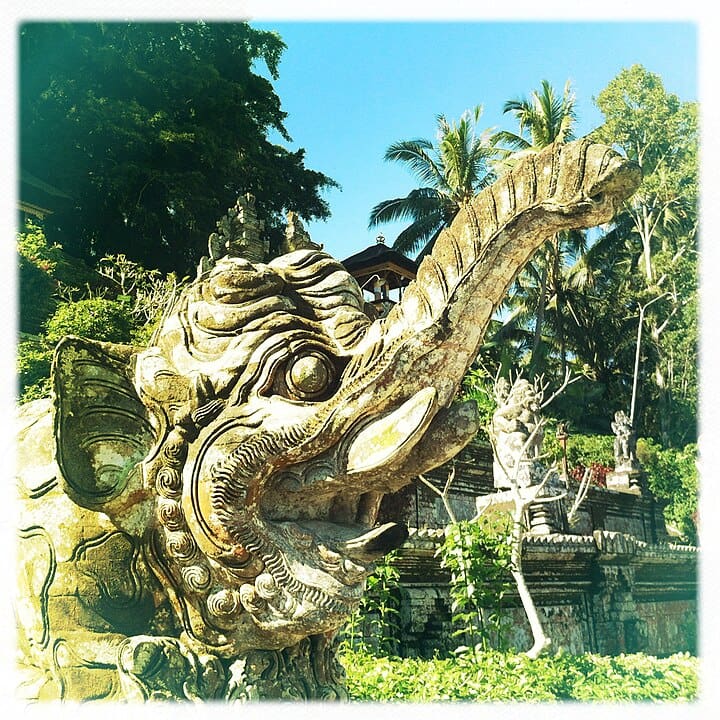
Barry Silver , CC BY 2.0 , via Wikimedia Commons
11. Local Transport Options
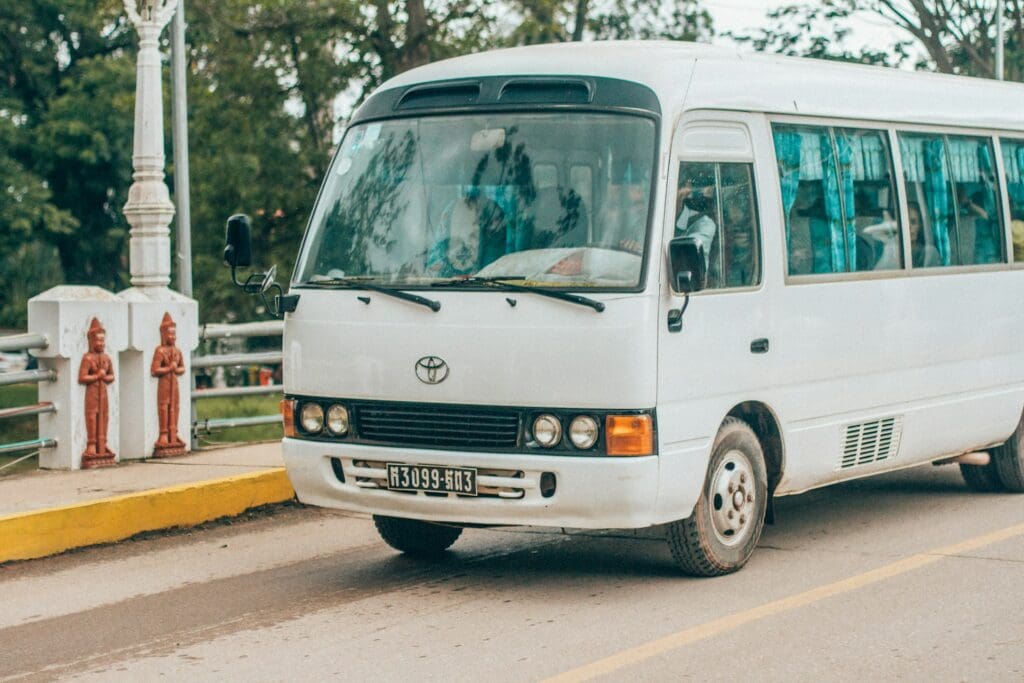
Photo by Humphrey Muleba on Unsplash
12. Know About Accommodation in Indonesia
13. know all about the indonesian currency.
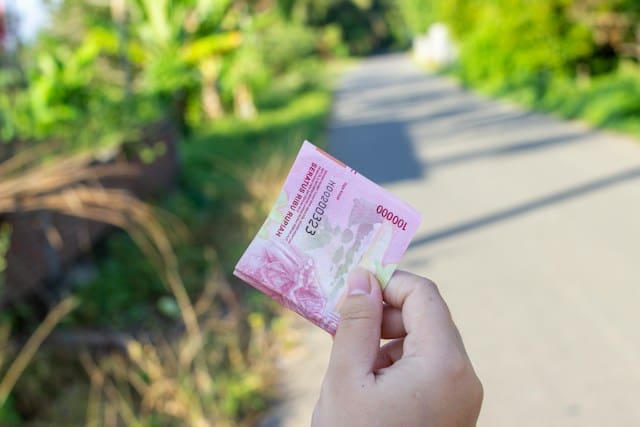
14. Download Offline Maps
15. drink bottled water only.

Photo by Sergiu Baica on Unsplash
Planning a trip to Paris ? Get ready !
These are Amazon’s best-selling travel products that you may need for coming to Paris.
- The best travel book : Rick Steves – Paris 2023 – Learn more here
- Fodor’s Paris 2024 – Learn more here
Travel Gear
- Venture Pal Lightweight Backpack – Learn more here
- Samsonite Winfield 2 28″ Luggage – Learn more here
- Swig Savvy’s Stainless Steel Insulated Water Bottle – Learn more here
Check Amazon’s best-seller list for the most popular travel accessories. We sometimes read this list just to find out what new travel products people are buying.
Gloria N. has been a movie enthusiast since her early years and has a particular interest in horror, action, and drama films. Her father played a significant role in cultivating her love for movies, as he would spend hours watching them whenever he had free time. In addition to her passion for films, Gloria enjoys travelling and reading. When she is unable to physically explore a new place, she expresses her love for it through writing and reading. Gloria's writing mostly focuses on Black actors, famous people, architects, and history-related articles.
Hello & Welcome

Popular Articles

Top 20 Streets to See in Paris

Paris in two days

Top 15 Things to do Around the Eiffel Tower

The Best Way to Visit Paris Museums

Top 15 Fashion Stores in Le Marais
Visit europe with discover walks.
- Paris walking tours
- Montmartre walking tour
- Lisbon walking tours
- Prague walking tours
- Barcelona walking tours
- Private tours in Europe
- Privacy policy
© 2024 Charing Cross Corporation
How To Travel Between Indonesian Islands

With a whopping 17,508 islands, Indonesia is an amazing place to go island-hopping. The world’s largest archipelago comprises five major islands and about 30 smaller groups, featuring dense rainforests, active volcanoes, interesting wildlife , and white sandy beaches. The islands are connected by a network of ferries, boats, and air travel routes. If you’re wondering how to travel between Indonesian islands, look no further than this article, where we’ll break down all you need to know about getting around this vast and diverse archipelago.
With its shimmering beaches and cerulean seas, Bali is undoubtedly the superstar of the Indonesian islands. But there’s so much to discover beyond Bali’s shores – perhaps you’ll hit up the surf in Lombok, explore the sprawling modern capital of Jakarta or catch a Komodo dragon in the flesh on Komodo Island . Luckily, with good transport links between different islands, it’s easy to fit all these exciting places into one trip.
If you’re keen to discover all that Indonesia offers, read on to find out all you need to know about travel when island-hopping in Indonesia.
Table of Contents
Getting around by ferry

Ferries are the number one transport method for travel between Indonesian islands. The different destinations are serviced by a vast network of ferries. What these ferries look like varies depending on the type of journey you’re embarking on – smaller distances are usually covered by simple wooden boats, while you can expect 700-passenger ferries fit with cabins for overnight stays when traveling longer distances between islands. Public ferries run regularly between neighboring islands, such as between Sumatra and Java, Java and Bali, and Bali and Lombok. In more visited areas you’ll find tourist boat services, and combined long-distance bus and boat options.
While some smaller, informal ferry options can have dubious safety standards , the most reputable and reliable boats are those run by Pelni. This is a state-owned and -operated shipping company, with routes that travel across all of Indonesia, stopping at different ports along the way to allow you to jump off where you fancy.
The boats tend to carry up to 5,000 passengers and have six classes of accommodation onboard, which range from simple bench-style seating to private cabins complete with a double bed, washroom, air-conditioning and large luggage lockers for a more comfortable overnight journey. It’s always advisable to reserve in advance when traveling on Pelni ferries, particularly if you’re traveling during holiday times or religious periods such as Ramadan. If the ferries are all booked up, you could find yourself sleeping in corridors, stairwells or on the deck! Check up-to-date route information and buy tickets, available two or three days before departure, at the local Pelni office. If ferries are overbooked.
Other types of ferries, such as gangplanks, are often narrow and rickety, making them less suitable for people with reduced mobility, who may have trouble boarding. If you rent a car, there is also the option of traveling on a car ferry between many of the different islands.
Traveling by air

Air travel is another popular way to travel between Indonesian islands. This is a much quicker option than going by sea if you’re looking to cover longer distances, saving you time if you want to fit a number of islands into a shorter trip.
Travelers arriving in Indonesia from North America or Europe tend to land at major international airports in Jakarta or Bali. From here, there’s the option to travel to different islands by plane. Garuda Indonesia is a state-operated airline, offering many domestic flights within Indonesia as well as international routes. It is generally considered the most reputable of airports, however, the country’s major cities and remote island locales are also well connected via domestic air service from other carriers including Lion Air and AirAsia.
You can buy tickets online, and you’ll also find ticket offices at many airports for purchasing your airfare in person. When flying the budget airlines in particular, it’s a smart idea to call ahead and reconfirm your reservation before departure, as it’s not uncommon for passengers to get bumped. Arriving a full two hours ahead of time at airports for domestic and international flights is another good way to protect yourself.
Renting a car

Car rental is another way to travel between Indonesian islands. Driving gives travelers the freedom of getting across the country at their own pace, without having to wait around for buses or at airports. However, the roads in many Indonesian islands can get very congested, so it’s not recommended to rent a car if you’re an inexperienced driver.
Drivers must always carry an international driving license and vehicle registration documents. It’s important to note that foreign drivers can often become targets of random ‘spot checks’, where police pull over cars and request to see documents. If you are unable to provide the correct documentation, you will often be asked to pay a bribe to avoid being served with a much larger traffic infraction fine.
In Bali, Java, Sumatra, and many other spots in Indonesia, cars can be rented for around $10 per day — or even less if you barter, or opt to rent for several weeks at a time. It’s always important to check whether rental companies allow you to travel between different islands. It’s common for rental companies to prohibit this type of travel, even where there are car ferries.
Getting about by bus

Buses are an inexpensive and relatively easy way to travel between Indonesian islands. However, they are slow, cramped, and have varying degrees of safety standards. Tourist shuttle buses tend to be much more expensive than local services but come complete with air-conditioning for a much more comfortable experience. Many operators offer bus and ferry packages that take the stress and uncertainty out of getting between islands.
Tickets are sold a day or more in advance from the point of departure or bus company offices; buy them as early as possible where services are infrequent.
How to get between Bali and Lombok
There are a number of options for traveling between Bali and Lombok. The cheapest and easiest way to travel between the two islands is by ferry, costing around $4 dollars one way. The trip takes between 5 and 6 hours, with ferries leaving every hour. The journey is very scenic, with lovely ocean views.
You can also fly between Bali and Lombok. The flights are extraordinarily cheap as air travel goes, costing around $20 for the 30-40 minute flights. However, the hassle of airport wait times, as well as the cost of organizing transport to and from the airport makes this a less convenient option.
You can also get between Bali and Lombok by speedboat, which costs around $30-40 per person and usually takes just over an hour.
How to get from Jakarta to Bali
Flying is generally considered the best option for getting between Jakarta and Bali. The flight time between the two destinations is usually around 1 hour and 50 minutes, not accounting for the wait times at the airport and travel to and from the airport. It usually costs around $60-$100 per person.
There’s also the option to travel from Jakarta to Bali by bus. Buses leave from the Pulo Gebang bus station in East Jakarta. Pahala Kencana, Kramat Djati Jakarta, Lorena and Safari Dharma Raya are among the bus companies that offer a Jakarta-Bali route. Priced at around $35 per person, this is a cheaper option. However, the journey usually takes more than 25 hours, making it a fairly arduous experience.
How to get between Lombok and Java
There’s really only one recommended route between Lombok and Java – by air. The flight between the two islands takes just under 4 hours, with costs starting from $60.
How to get to Komodo Island
If you’re keen to see the famous Komodo dragon while in Indonesia, you’re probably wondering about the best routes to get to Komodo Island . The best option for doing so is flying from Bali. Both Indonesian Air Transport (IAT) and Trans Nusa Airlines (TGN) offer daily flights from Bali to Labuan Bajo, with a flight time of under 2 hours They tend to cost around $60. From the airport, you will have to get a ferry to the actual national park. These depart once daily, and the journey takes 2h 30m.
There is also the option of taking a ferry from Bali to Labuan Bajo. This is a cheaper option than flying, but it takes far longer – around 36 hours to be precise. This trip can also be treacherous, due to the shallow and rocky waters between the islands. It’s definitely not for the faint of heart!
For more than 11 years, Joe has worked as a freelance travel writer. His writing and explorations have brought him to various locations, including the colonial towns of Mexico, the bustling chowks of Mumbai, and the majestic Southern Alps of New Zealand. When he's not crafting his next epic blog post on the top Greek islands or French ski resorts, he can often be found engaging in his top two hobbies of surfing and hiking.
Related posts
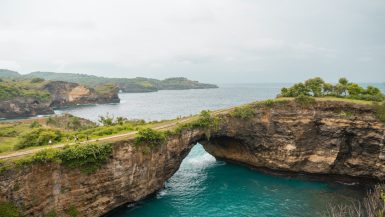
2 Days in Nusa Penida: The Ultimate Nusa Penida Itinerary
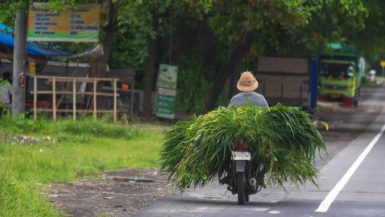
Bali to Jakarta by Land: Who Needs Planes?

Top 7 Healthy Food Places & Cafes in Canggu
Indonesia Travel Guide: The Ultimate Itinerary to Bali, Java & Flores
Indonesia, an immense country existing out of 17.000+ islands. A 3-week Indonesia route shows you the stunning diversity of this country. Waterfalls , volcanoes, stunning beaches, architecture, cultures, and delicious food. Feel welcomed by the open-minded Indonesian people. These are the highlights you should see on a 3-week Indonesia trip.
A 3-week Indonesia Travel Guide
This 3-week itinerary through Indonesia is a day-by-day route taking you to the highlights of East Java , Bali , and Flores. Feel free to add more days if you have the time, and note that each day includes a link to a detailed article about that location.
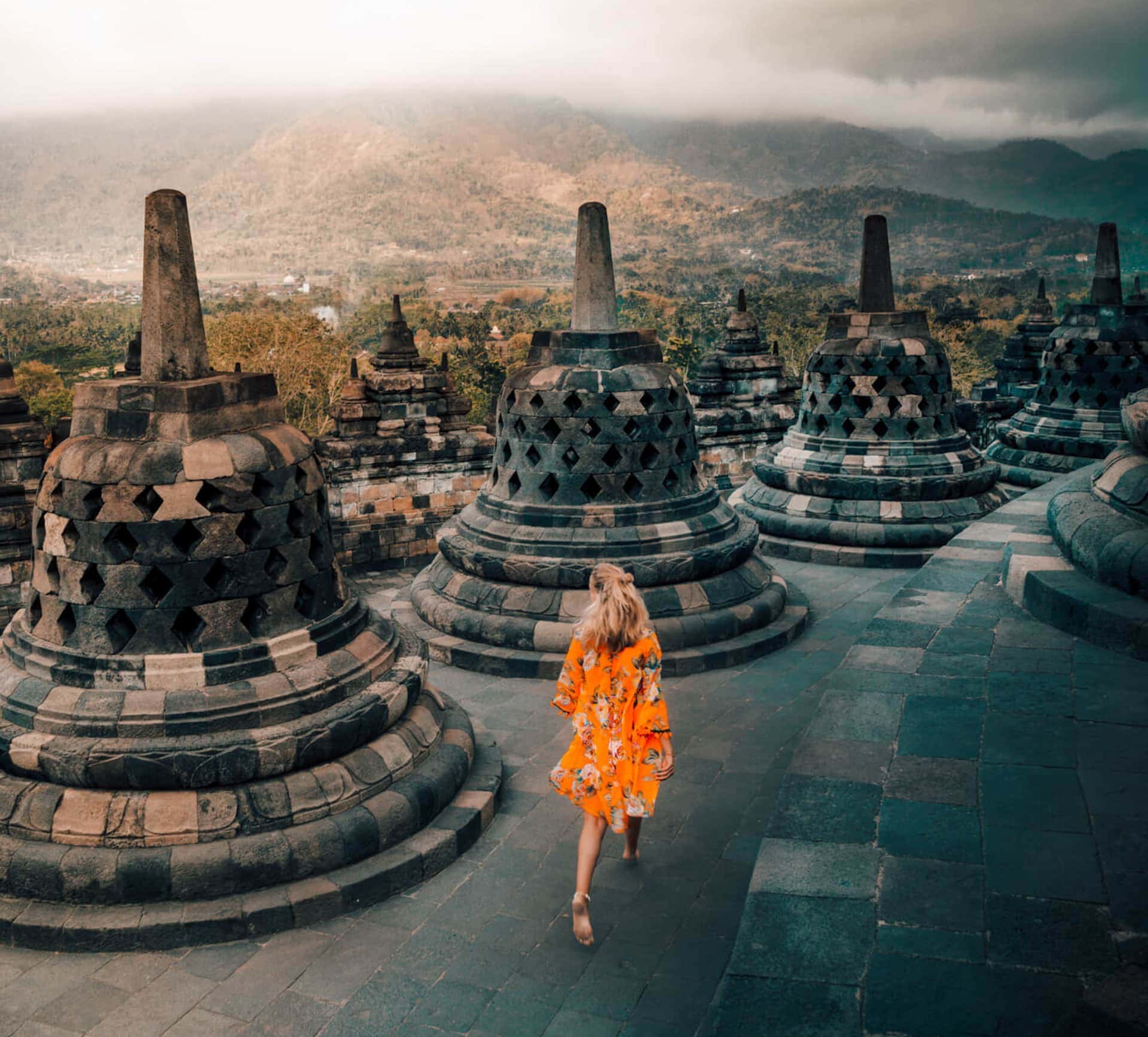
Day 1 – 2: Yogyakarta, Java
The hippest city of Java, Yogyakarta, is a great start to your route through Indonesia. Visit Indonesia’s largest Hindu complex, Prambanan, the underground mosque, and Borobudur. Yogyakarta has an international airport and is connected to many transit airports like Kuala Lumpur and Singapore . Discover all the best things to do in Yogyakarta here .
Where to Stay in Yogyakarta
The guesthouses and hotels in Yogyakarta are available in all kinds of price ranges. Hostels go anywhere from 5 USD – 30 USD per night. Where guesthouses and hotels in Yogyakarta will start from 12 USD a night, including breakfast.
Hotels in Yogyakarta 😴
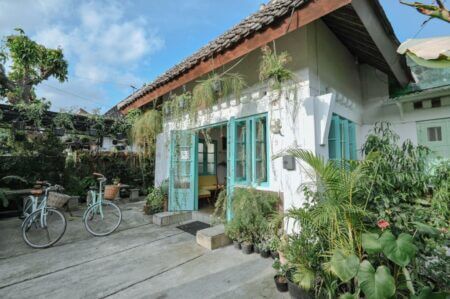
Day 3: Train to Malang
Take the early morning express train from Yogyakarta to Malang. It is an 8-hour comfortable train ride that takes you on a scenic route along with small villages & vast rice fields. The express train to Malang is the best way to travel between these cities.
More about: Train from Yogyakarta to Malang

Day 4 – 5: Malang, Java
The higher located city of Malang has a much more comfortable climate. Malang is one of the more surprising locations on your Indonesia route due to its beautiful waterfalls like Coban Putri, Coban Rondo, and Tumpak Sewu , green tea plantations, and the rainbow city Jodipan in Malang , which is a former slum area painted to attract visitors.
About Malang: Things to do in Malang
Where to Stay in Malang
Malang offers hotels and guesthouses in any kind of price category. But the only place we really can recommend to everyone is Griyo Sultan Agung Guest House. The train station is a 3-minute walk away, and the colored village is just 5 minutes.
Hotels in Malang 😴
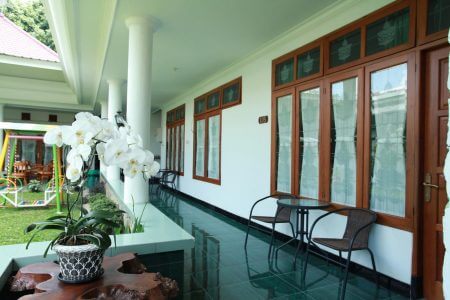
Day 6: Bromo, Java
Start day 6 with an incredible sunrise over the active Bromo Volcano . Now, don’t forget to bring something warm because it will be freezing cold before sunrise. Luckily, this is the only cold place on your Indonesia route.
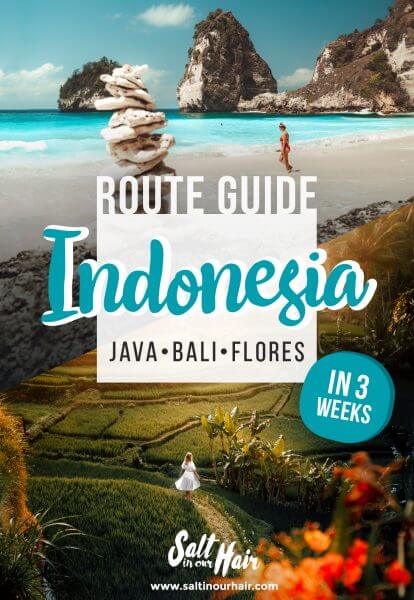
To get there, you could either leave Malang in the afternoon of day 5 and stay in Bromo village or get out back at midnight on day 6 and drive from Malang. Bromo hotel recommendation: Pagupon Hotel
Must Read: Bromo and IJen tour
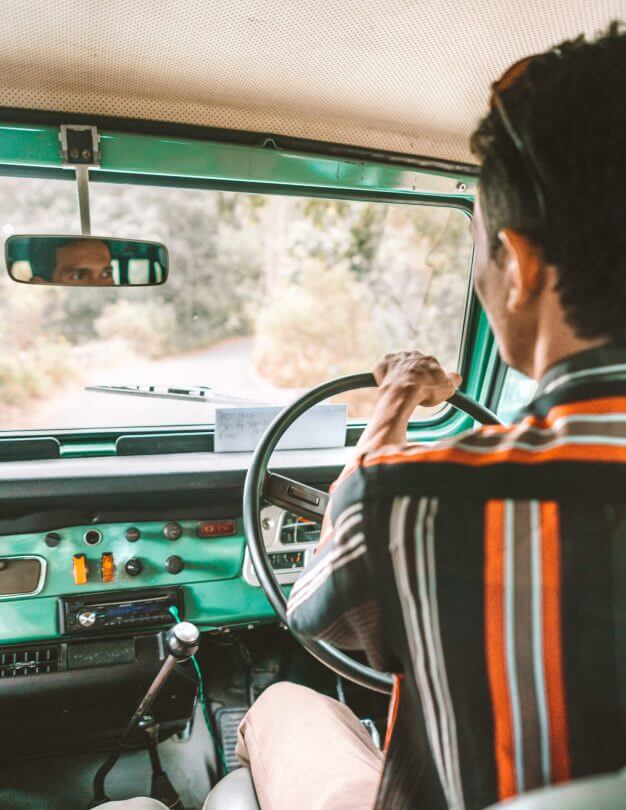
Day 7: Ijen Crater, Java
Visit the Ijen crater in the middle of the night to see the ‘blue fire’ and the sunrise over the aqua blue crater lake. The hike to the top is pretty steep, which makes it quite challenging; however, the view on the crater makes it up to you!
Read more about: Ijen Crater tour
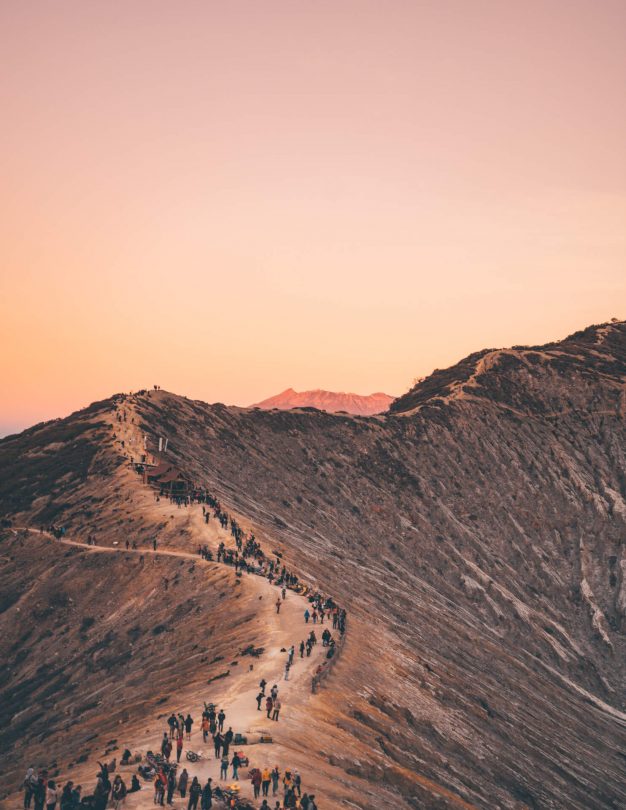
It’s time to follow your Indonesia route to the island of gods; Bali! From the Ijen crater, it is 30 minutes to the harbor where the ferry is waiting for you. Once in Bali, it takes 3 hours to reach Canggu.
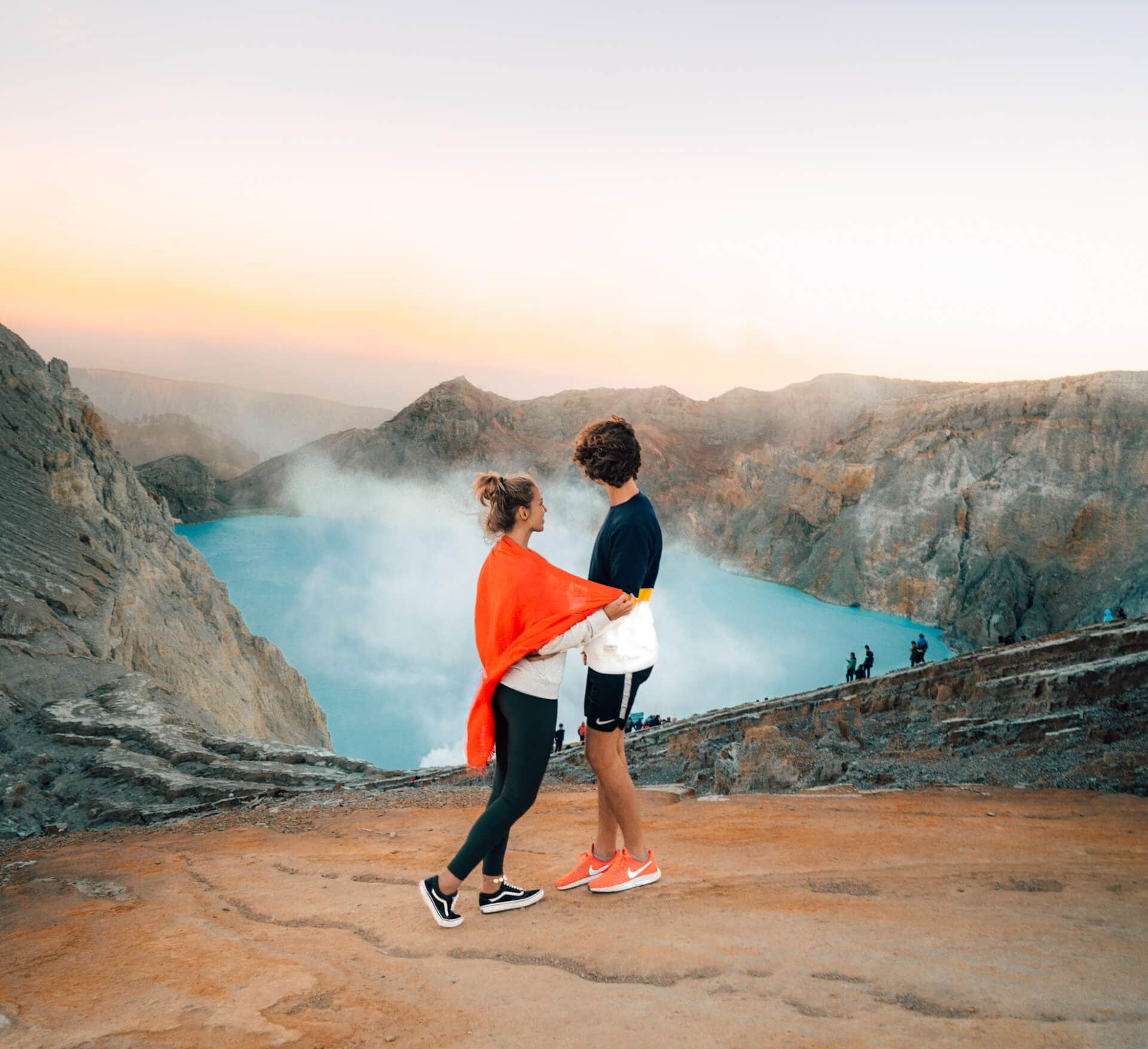
Day 8 – 10: Seminyak or Canggu
Seminyak and Canggu are two fantastic towns popular for its surfing, beach clubs, and an incredible choice of restaurants. Take a day to relax and recover because you just did two sunrise mornings on Java. The beach, a coconut, delicious food, and the nearby rice fields will make sure you recover well.
Read: Things to do in Seminyak or Canggu Guide
Where to Stay in Canggu and Seminyak
For Canggu, the most central places are Batu Bolong and Berawa, where there are loads of great cafes, restaurants, and beach clubs close by, as well as great surf spots.
Hotels in Canggu 😴

In Seminyak, stay around Jalan Kayu Aya, also known as ‘Eat Street’, for its great variety of restaurants. This street is also just a 10-minute walk from the beach.
Hotels in Seminyak 😴

Day 11 – 14: Ubud, Bali
Next up is the art village Ubud. The area is popular because of the surrounding rice fields, waterfalls, yoga retreats, and Ubud Art Market. Both Tegalalang rice fields and the Monkey Forest in Ubud are things you have to see on your Bali Route .
See: Best Things To Do in Ubud, Bali
Where to Stay in Ubud
Stay in the center of Ubud, where you are close to all the main tourist spots, shops, and restaurants. If you are looking for something a little more rural, there are some great accommodation options close to the rice terraces.
Hotels in Ubud 😴

Day 15 – 16: Nusa Penida, Bali
Incredible white sandy beaches and 200-meter high cliff drops; Nusa Penida is one of the most stunning places on your route through Indonesia. Visit the T-Rex head Kelingking and hike down to one of Bali’s most beautiful beaches: Diamond Beach . Nusa Penida is stunning!

Arrange a taxi + boat transfer from Ubud. It takes about two to three hours to reach Penida Island. On your last night, make your way back to Kuta, Bali, and spend the night near the airport. Book a return flight from Bali to Labuan Bajo tomorrow you are heading to Komodo National Park .
Read: Nusa Penida Trip
Where to Stay on Nusa Penida
The accommodations on Nusa Penida vary from homestays and guesthouses to beautiful bungalows. You can stay anywhere on the island as it only takes an hour to cross from one side to the other.
Hotels in Nusa Penida 😴

Day 17: Labuan Bajo, Flores
Labuan Bajo is a little port town on Flores island. It is the entrance to UNESCO labeled Komodo National Park , home of the Komodo Dragon. Labuan Bajo itself has not much to offer so use it as a stopover before you head on a boat into the park. The flight to Labuan Bajo from Bali only takes 45 minutes.
Things to do Komodo Islands
Where to Stay in Labuan Bajo
There are lots of things to do in Labuan Bajo, so aim to spend at least one night here if you can. It’s a small town, and you are able to walk around in 30 minutes, which means most accommodation options will locate you close to all the main bars and cafes. Alternatively, choose one of the relaxing beach resorts which are a bit further out of the center.
Hotels in Labuan Bajo 😴

Day 18 – 20: Komodo Islands, the highlight of your route through Indonesia
Close-off your 3 weeks in Indonesia with the best part; a 3-day boat trip in Komodo National Park. The park is world-famous for diving and snorkeling where you can expect to see manta rays, sea turtles, dolphins, small sharks, and millions of colorful fish. The hiking paths are mind-blowing and don’t forget about the pink beaches, yes pink!
Komodo Islands trip
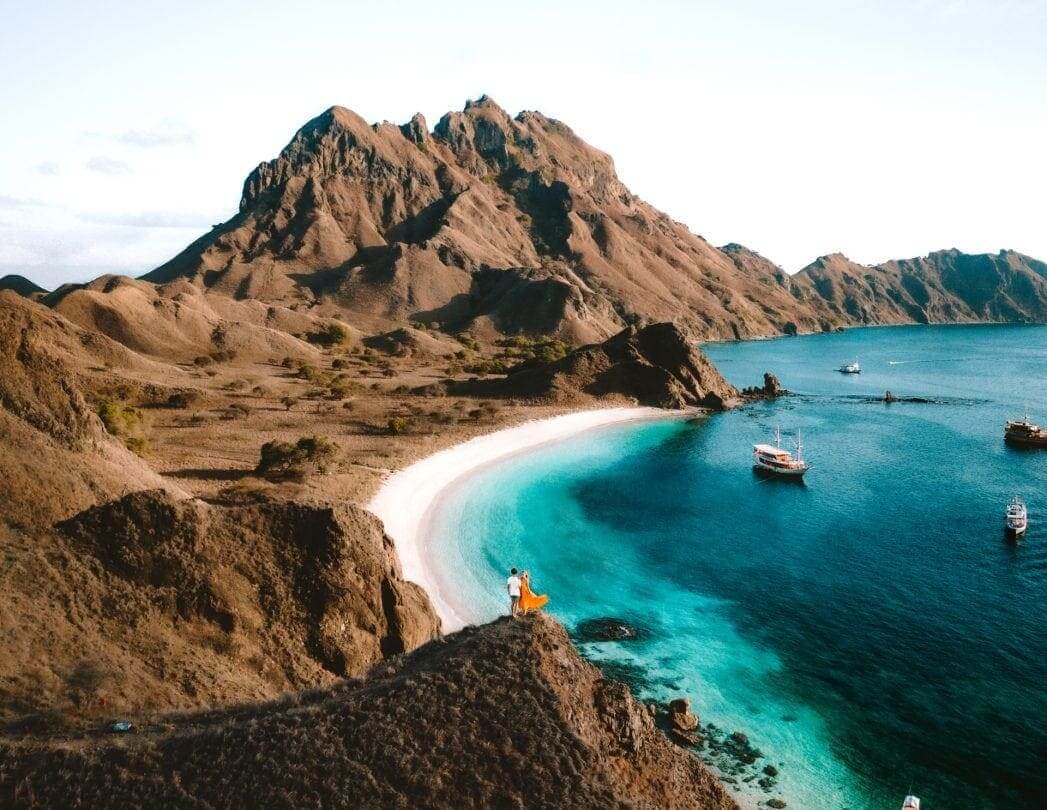
Day 21: Back to Bali – Fly out
Fly back to Bali and spend your last day along the Bali coastline. We recommend you to spend this time either in Canggu or Uluwatu .
Canggu hotel recommendation: Calmtree Bungalows
Getting around Indonesia
The islands in this Indonesia Route, Bali, Java, and Komodo National Park, are all well connected. Travel easily with a backpack or suitcase via trains, planes, or car. In populated areas, you can also use transport services like Go-Jek.
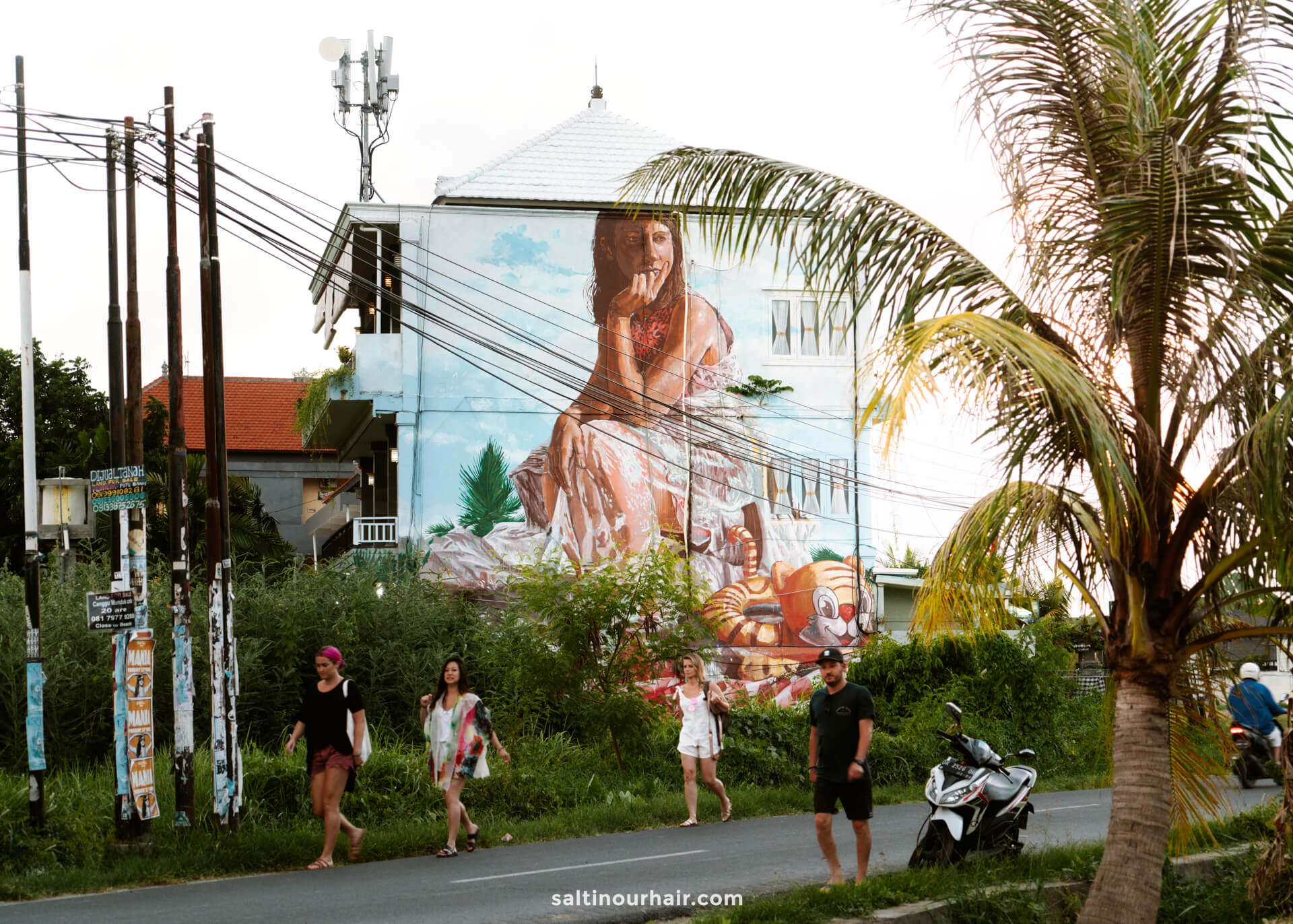
You can easily arrange transport from your current location in Indonesia. However, we recommend booking your flights in advance.
Java & Bali Transport
Contact our friend Yande below if you are looking for car transport and make sure to tell him you found him through our Salt in our Hair.
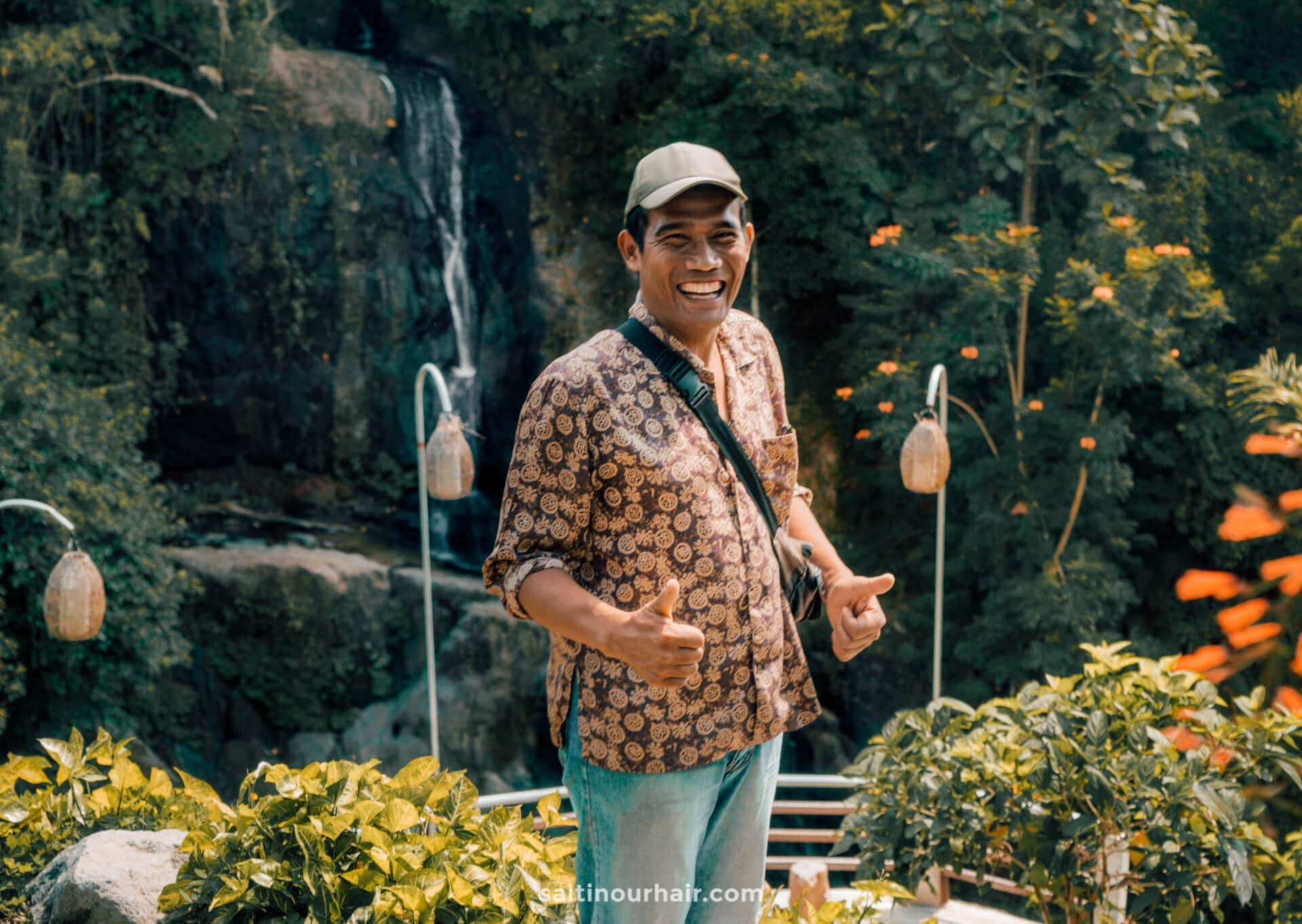
When to visit Indonesia
May until October are the best months to visit Indonesia. There is a year-round temperature of 28°C, and although the wet season is between October & April, it can feel a lot warmer. The wet season is not as bad as it sounds. It is a daily heavy and short rainfall, some days cloudy but some days beautiful weather.
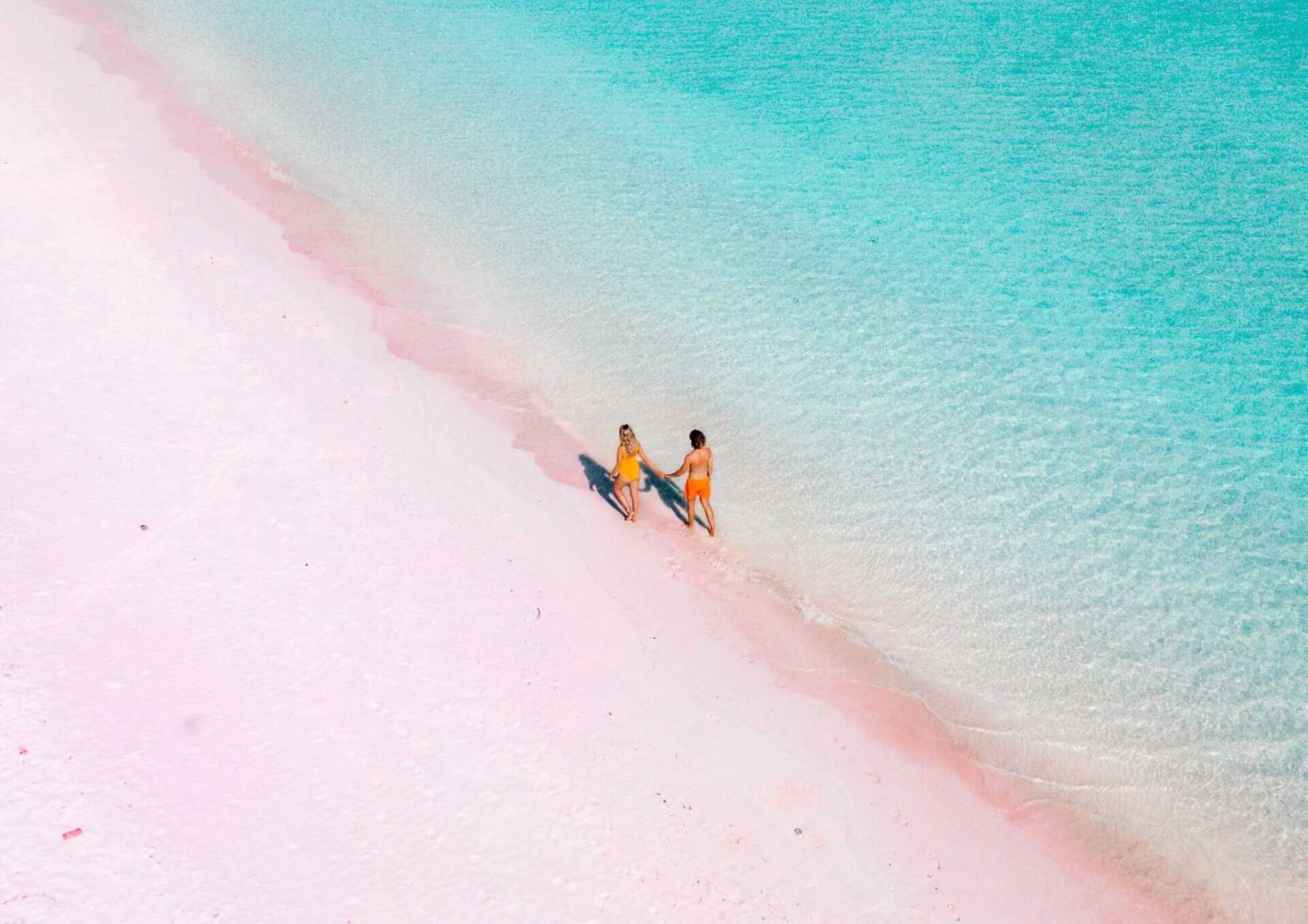
How much does Indonesia cost?
Your budget for a 3-week Indonesia route depends on where you stay and eat. A stay at a guesthouse ranges from 6 – 35 USD a night, depending on the popularity of your location. This is similar for eating; Indonesian food ranges from 1 – 3 USD per meal, whereas Western food can go anywhere from 3 – 15 USD per meal.
Costs of Traveling in Indonesia
Travel on a budget in Indonesia, from $220 − $290 USD weekly per person, mid-range $400 − $590 USD, and high-end from $570 − $850 USD. However, costs depend on factors like accommodation, transportation, and activities. We did not include flights. Check flight prices here
- Hotels: $30 − $100 USD Check available hotels
- Hostels: $10 − $30 USD Check available hostels
- Transport: $10 − $15 USD Book public transport
- Food: $10 − $15 USD
- Travel Insurance: $2 − $6 USD Get Travel Insurance
By purchasing through our links, you support us at no additional cost. Thank you for your support. ♥️
- Find Hotels via Booking.com
- Find a Rental Car via Rentalcars.com
- Find Flights to Indonesia via Skyscanner
- Get a Travel Insurance via Heymondo
- Book Tours & Attractions via GetYourGuide
- Book a Bus/Train/Transfer via 12Go
Komodo Islands: How to Tour in Komodo National Park
Jodipan: colorful rainbow village in malang, java, 13 things to do in komodo, flores.
Looking for more travel information? Plan a chat with us for personalised travel advice or get an answer from the Salt in our Hair Travel Community on Facebook.
This is a great blog post, thanks for putting it together!
We are planning to go to Indonesia between 1st and 18th of June, where we want to visit Malang, Yogyakarta, Ubud, Gilli Air and The Komodo Island. This will be a an active holiday, where we will be moving every few days.
Can I ask you what is the best travel route between Malang -> Ubud ->Gilli Air -> Komodo -> Back to Bali Airport?
I have been researching this and all the travel options seem very complicated, especially between the islands.
Any thoughts are welcomed!
Thanks in advance!
Hi Bogdan! So exciting you’re planning to travel Indonesia. In terms of the best route, the one you have set out works very well. From Malang you can decide whether you want to see Mt. Bromo and/or the Ijen Crater and then hop on a train/bus + ferry (or travel with a a private driver ) to get to Bali. From Ubud, you can travel to Amed or Padangbai to boat to Gili Air. The Gili islands, as well as Lombok both offer tours throughout the Komodo Islands, which typically end in Labuan Bajo. From there, you can easily fly back to Bali. Hope that helps!
Your email address will not be published. Required fields are marked *
Notify me when new comments are added.

Archipelago Adventures: An In-depth Travel Guide to Indonesia
Leaving from...
Going to...
Discover Destinations When to travel How to get around Visa Food Other tips
Discover Indonesia
Indonesia is on a lot of people’s bucket lists purely to visit Bali. Of course, Bali is incredible. It wouldn’t be this popular if it wasn’t.
But there are so many other extraordinary places in Indonesia that are still unexplored and untouched. It’s the world’s largest archipelago with more than 17,000 islands , of which 7,000 are uninhabited, so the opportunity for exploration is endless.
Indonesia offers a tapestry of diverse cultures, traditions, landscapes, wildlife, and history. Each island possesses its own unique identity, shaped over time, promising you an entirely fresh experience at every destination.
We’ve created this ultimate guide to Indonesia to share with you everything that this unique country has to offer.
Is Indonesia worth visiting?

Indonesia’s diversity is astonishing, offering everything from pristine white sand beaches to rice fields as far as the eye can see, to 127 active volcanoes . It’s a biodiversity hotspot, home to over 17% of the world’s wildlife and boasting a staggering 300,000 species.
Prepare to encounter some of the planet’s most extraordinary creatures , including Komodo dragons, tigers, orangutans, rhinoceroses, dolphins, and manta rays.
And all of this sits alongside the rich history and culture of the country which can be seen in the countless temples, religious, and historical sites.
As if that wasn’t enough to already convince you to visit Indonesia, it’s the ideal place to learn to surf, live life as a digital nomad or eat your way through delicious cuisine.
Is Indonesia safe?
Indonesia is one of the safest Southeast Asian countries to travel and the people of Indonesia are extremely friendly and will go out of their way to offer a helping hand.
That being said, like with pretty much every country in the world, petty theft and pickpocketing do occur, so make sure to keep an eye on your belongings.
Best destinations in Indonesia

Top 3 places to visit in Indonesia
To provide some extra help with planning your trip, we’ve collated our top three favourite destinations in Indonesia:
Bali — the island paradise everyone wants to visit

Known as “ The Land of Gods ”, Bali is one of the most beautiful places on Earth. The stunning beaches are the perfect place to take in colourful sunsets, watch local surfers and soak up the sun. The lush jungles of Ubud will leave you in awe and the chilled vibes of Canggu will make you feel at home .
It’s a place where you can witness manta rays leaping from the water, climb a volcano for sunrise and then end your day eating amazing food in the local warung. And of course, as you’ve probably seen from Instagram, Bali is now home to extravagant villas and luxurious beach clubs.
But if that’s not your vibe, it’s still not hard to find your happy place on this magical island.
Visit our page about travelling from Yogyakarta to Bali to find your best travel options.
Flores — home to the last dragons

Ready for a more adventurous trip? Make your way to Flores and take a boat tour to Komodo National Park to enjoy the pristine beaches, superb hiking, and unforgettable diving and snorkelling.
Within this park, you’ll find Komodo Island, also referred to as the “Home of the Last Dragons”. The island is home to over 4,000 Komodo Dragons , the largest lizards on the planet with some growing up to 3 metres long.
To travel here, check out our page on how to travel from Bali to Komodo .
Yogyakarta — bursting with rich culture, history and art

Yogyakarta can be found on Indonesia’s most populous island, Java. It’s one of Indonesia’s cultural hearts being home to the huge, magnificent temples of Borobudur and Prambanan Temple , built in the 8th and 9th centuries. Borobudur is the largest Buddhist temple in the world and one of the most remarkable structures you’ll ever witness.
The city itself is filled with history, culture and religious sites unlike anywhere else. Yogyakarta boasts a vibrant vibe created by the friendly locals, unique art and a lively music scene.
Taking the day train from Jakarta to Yogyakarta will present some of the country’s most amazing rice terraces, small villages, and local life. Find out how to get from Jakarta to Yogyakarta .
Bonus: the Gili Islands

We know it says top 3, but we couldn’t go without mentioning the Gili Islands. These three little islands off the coast of Lombok, all offer gorgeous beaches and warm, blue waters. Gili Trawangan, the largest of the three islands, is the most visited with a busy nightlife , and countless restaurants and bars.
Gili Air is a little smaller with a much more mellow vib e. Gili Meno, the smallest of the islands offers a strong local character. You won’t find as many tourists or amenities, but it’s the perfect place to escape it all. See our route from Bali to the Gili Islands for more info.
When is the best time to travel to Indonesia?
Indonesia has just two seasons, wet and dry. The tropical temperatures average 28°C during the day, throughout the year. The dry season is from May to October and the wet season begins in November/Decembe r and ends in March/April .
While you can visit this country year-round, between the months of May and October , you will find the best weather. If you choose to visit Indonesia during January and February, be prepared for the wet season and expect cloudy days and several hours a day of rain. If you don’t mind putting your plans on hold for a couple of hours each day, it’s still a decent time to visit.
How to get around in Indonesia
Indonesia is located in Southeast Asia between the Indian and Pacific Oceans and spans 1,904,569 square kilometres. While some of the larger islands are easily travelled by bus, car or train, the majority of travel throughout Indonesia is by boat or ferry.
Here are the best ways to get around Indonesia:

Indonesia is a nation made up of islands, so boats are an essential way to hop between the islands. There are two main types of boats that you’ll be using for inter-island travel; fast boats and ferries.
Fast boats are used mainly by tourists. As the name suggests, they are faster than ferries and are usually similar to speedboats. They also tend to be more expensive than the ferry. Some popular journeys that you’ll find fast boats running between are Bali to the Gili islands and Bali to Lombok .
Ferries are much larger boats that tend to go a lot slower and are most commonly used if someone is travelling with a vehicle. Most of the popular routes also have a ferry option, which is also normally cheaper than taking a fast boat. The ferries vary in comfort level, ranging from basic to more luxurious options.
Many of the fast boats can be booked online in advance via Bookaway .
Train travel is only available in Java and Sumatra . On the island of Java, train travel is one of the most popular forms of transport as it offers excellent scenery, comfort, and reliability.
To learn everything you need to know about train travel, check out our guide for travelling by train in Indonesia .
By bus
Unlike most countries, bus travel isn’t the most popular way of getting around . Buses are available in Java between major destinations, but the train is often the more comfortable and faster option.
There are also buses in Bali and Lombok, which are a cheap way of getting around the island, although they’re not always the easiest to navigate. You can check out bus routes and book tickets online via 12Go.Asia .
If you are travelling long distances between islands that host airports, flying can be a good option to save time. There are a few budget airlines in Indonesia that offer domestic flights at a low cost. However, many of the islands do not have airports, so you’ll need to take local ferries or boats to reach your next destination.
Also, keep in mind that taking a short-haul flight can be up to 10 times more polluting than taking a more environmentally-friendly option like a ferry.
By taxi

The great thing about Indonesia is that there is nearly always a taxi around when you need it, whether it’s in the form of a car, tuk-tuk or moto taxi. And if there’s not, many popular destinations in Indonesia now support cab-hailing apps like Gojek or Grab.
These apps work similarly to Uber, allowing you to hail bikes and taxis via an app. No haggling and you can pay with card.
By private driver
Hiring a private driver for the day is a popular way for travellers to get around. You can normally hire one online on websites like Bookaway , through your accommodation or from a tour agency. The cost for a day can range between $35-100.
If there are a lot of spots that you want to hit in one day, it can be a cost-efficient, comfortable and easy way to explore.

Another popular way of getting around, especially on islands like Bali and Lombok is to rent your own scooter. They are extremely cheap to rent , costing less than $5 a day or between $30-50 for the month.
Whilst it looks super fun zooming along next to rice paddies, there are some things that you need to consider before hopping on a bike:
- Make sure that you’re a confident driver. There are so many bikes on the road that it’s easy to get into an accident.
- Wear a helmet.
- Have an international driver’s license.
- In places like Bali, there are scooter-driving schools. So if you don’t feel confident enough, maybe check out one of these before hitting the roads.
Entry requirements and visa for Indonesia
Entry into Indonesia has recently been made significantly easier. The government have introduced a visa on arrival that you can apply and pay for beforehand online . This saves you a lot of time having to do the visa when you arrive.
It costs 500,000 IND ($35) for a 30-day visa. You’ll receive the visa as a PDF. Make sure to have this downloaded or take a screenshot so that you’re not relying on the airport Wi-Fi to load it.
If you want to stay longer than 30 days in Indonesia (who doesn’t?) then you can extend the visa for another 30 days for $35.
Make sure that your passport is valid for at least six months after your departure.
Must-try Indonesian food
You may not hear people shouting about Indonesian food as much as Thai or Vietnamese, but Indonesia has some incredible specialities that have also influenced a number of popular dishes throughout Asia. Here are some foods that you shouldn’t leave Indonesia without trying:
- Gado-gado — is an Indonesian salad made up of a variety of vegetables like carrots, potatoes and green beans, often served with tempeh and an egg. Sounds okay so far…but what makes this dish amazing is the peanut sauce that you smoother it all in.
- Nasi goreng/Mie goreng — you will find both nasi goreng and mie goreng in almost every local establishment in Indonesia. ‘Goreng’ stands for fried, whilst ‘nasi’ means rice and ‘mie’ is noodles. Essentially these dishes are fried rice and noodles served with an array of vegetables and usually a fried egg on top.
- Beef rendang — is an Indonesian curry that melts in your mouth. The meat is left to cook for hours in coconut milk and a ton of spices. It’s usually served with white rice.
- Sate — is essentially skewered chunks of meat that taste exceptionally good. It can be anything from chicken, pork, beef, and mutton to fish or seafood. The meat is grilled over charcoal and served with an array of tasty sauces.
Essential travel tips for Indonesia
Here’s a selection of the best tips and pieces of information that may make your trip to Indonesia that bit easier:
Paying with Indonesian Rupiah in Indonesia
The currency used in Indonesia is the Indonesian Rupiah (IDR) . As of June 2023, $1 is equivalent to 15,000 IDR.
More places are starting to accept debit and credit cards, but it’s always good to have cash on you, especially for local spots and markets. Plus, some restaurants still charge around 3% extra when paying by card.
ATMs are easy to find in popular destinations like Bali, Jakarta and Yogyakarta. If you venture out to other islands, it can be a lot harder to find one.
On smaller islands like Gili Islands or Nusa Penida, you’ll often find ATMs around the harbour, but to be on the safe side, always bring enough cash when travelling to smaller islands or the less touristic areas of Indonesia.
Withdrawing money from ATMs is mostly free of charge , but your own bank will likely charge a fee. The maximum withdrawal is mostly between 1,500,000 and 2,500,000 IDR. A few trusted ATMs are Mandiri, BCA, BNI and City Bank.

Permata Bank charges a fixed withdrawal fee of 49,999 IDR if you use a foreign card, so better to avoid this ATM as you can use almost all others without extra charges.
Buying a sim card in Indonesia
While a lot of cafes, restaurants and hotels offer free Wi-Fi, it’s likely that you’re going to want internet whilst out and about. We recommend getting a local sim card. The plans are extremely cheap.
The four main mobile providers in Indonesia are Telkomsel, IM3 Ooredoo (soon Indosat Ooredoo Hutchison), XL Axiata and Smartfren . You’ll be able to buy a sim card from one of these providers at most international airports in Indonesia or at a mobile provider’s store.
You’ll need to make sure that your phone is ‘unlocked’ which means that you can put any sim card in your phone, rather than being locked to a specific provider.
Indonesian language cheat sheet
The language spoken in Indonesia is Indonesian .
It’s always good to know a few essential words before travelling to a place, so here are a few to get you started:
- Hello – Selamat/Halo
- Thank you – Terima kasih
- Please – Tolong
- Sorry – Maaf
- Beer – Bir
The perfect packing list for Indonesia
Indonesia is a hot country all year round, averaging around 28 °C and can get pretty humid!
It’s best to bring loose-fitting, cool clothes and of course, your swimsuit if you’re heading to one of Indonesia’s tropical islands or beaches.
If you’re planning on tackling one of Indonesia’s volcanoes, don’t forget some suitable hiking shoes and a jacket. It can get cold at altitude.
Aside from the essential travel gear, here are some that have become permanent fixtures on our packing list:
- Reusable water bottle – they’re better for the environment and can save you money on water.
- A portable charger – there’s probably going to be a time when your phone’s battery is on red, at a time that you desperately need it.
- An adaptor – Indonesia uses the same plugs as Europe (C&F). A universal travel adaptor is a great buy if you’re travelling between different continents.
Check out our full packing list for Southeast Asia.
Favourite accommodations
Le pirate island – komodo island.
While you can’t stay directly on Komodo Island, you can stay nearby and enjoy the luxury of the outdoor huts at Le Pirate Island. Each hut comes with a private terrace and beds above offering stunning ocean views. There is a restaurant and bar on-site and all huts are beachfront. After exploring Komodo Island, this is the perfect private island to return to enjoy relaxing and taking in the sights.
- Private island
- Beachfront huts
- Restaurant and bar on-site
- Excellent service
Rooms start at $43 per night
Check availability & reviews
Was this post helpful?
Click on a star to rate it!
Average rating 0 / 5. Vote count: 0
No votes so far! Be the first to rate this post.
As you found this post useful...
Follow us on social media!
We are sorry that this post didn't meet your expectations.
Your feedback is very valueable to us
What was missing in this post? (TIP: If you want us to reply to your feedback, you can leave your email in this text box.)

Based in Bali, Maarten’s passion for travel is undeniable. In 2016, he decided to quit his job as a stock analyst and started doing what he always dreamed of: travelling through South East Asia and helping other people plan their trips. When he is not working on Gecko Routes, you’ll find him surfing in the ocean or exploring the best gems of Indonesia.
- Explore more
- Bali to Gili Islands
- Bali to Nusa Penida
- Jakarta to Yogyakarta
- Lombok to Nusa Penida
- Yogyakarta to Bali
- Yogyakarta to Ijen
To enhance your experience on our website, we utilize cookies. By browsing our site, you agree to our cookie use. For details, please read our privacy policy .

How to Get Around Indonesia
Mix and Match These Indonesia Transportation Options
:max_bytes(150000):strip_icc():format(webp)/mike_borobudur-5b6d3ea446e0fb0025fcb683.jpg)
Forget Asia, the country of Indonesia in itself seems like its own separate continent. With up to 18,000 islands and divergent cultures rooted in millennia of history, every hop from one city to another feels like teleporting to a different side of the planet. And with kilometers of open sea separating many tourist stops outside Java Island, getting from point A to point B presents a formidable challenge.
In the list below, we'll try to untangle your transportation options to make your Indonesia itinerary an enjoyable one.
Indonesia Air Transportation: Fast & Surprisingly Inexpensive
Airlines have taken over from ships as Indonesia's most popular means of domestic transport: budget airlines and their rock-bottom fares have removed the last major argument against flying (the high prices), allowing popular low-cost carriers like Citilink , LionAir and AirAsia Indonesia to compete directly with ferries for the backpacker-budget set.
And if you've got some more leeway in your wallet, Indonesian flag-carrier Garuda Indonesia obliges you with the “world's best economy class”, with silverware, an awesome food menu, and onboard entertainment even for cattle class.
A recent upgrade effort has transformed Indonesia's airports, down to the smaller airports like those in Banyuwangi and Labuanbajo. Now, the flying experience in Indonesia doesn't feel so rickety.
Popular airports: International travelers can fly into one of Indonesia's top three international airports to get to the rest of the island nation. These are Soekarno Hatta Airport in Jakarta (IATA: CGK, ICAO: WIII); Juanda International Airport in Surabaya, East Java (IATA: SUB, ICAO: WARR), and Ngurah Rai International Airport in Bali (IATA: DPS, ICAO: WADD).
The Bali airport also serves as Indonesia's main hub for flights east of Bali (from Lombok to as far away as Papua). The majority of flights to Labuanbajo, for instance, depart from Bali.
Visa on arrival to Indonesia is available at these airports, as well as a number of other regional airports serving international flights from Singapore's Changi International Airport and Kuala Lumpur, Malaysia 's KLIA: the airports at Bandung , Yogyakarta and Makassar among them.
Indonesia's Trains: Riding the Java Express
If you fancy an Indonesia itinerary that focuses on the island of Java, you can travel through the island's main highlights solely by riding Java's extensive railway network.
Take Gambir Train Station near the Monas in Central Jakarta as your starting point (the comfortable Executive/Eksekutif class express trains leave from here; the less said about “Business” class, the better), taking on Java in stages. From Gambir you can ride straight to nearby Bandung (three hours), or Yogyakarta (a scenic six-to-eight hour ride that ranks among the most popular train trips on the menu).
At Yogyakarta you can change trains to head to either Malang (a popular jump-off point to Mount Bromo ) or Surabaya, from which another change of train takes you all the way to Banyuwangi , a short ferry hop from Bali!
If you want a single ticket that covers the trip from Surabaya all the way to Bali, book the overnight train that departs from Surabaya Gubeng Station with Denpasar as your endpoint. The trip combines travel by rail to Banyuwangi with a bus and RORO ferry ride across the strait to Bali, terminating at the island capital Denpasar ( Bali's main transportation hub ).
Booking a train trip: The government rail line's website offers booking services, though English speakers will find the Indonesian-only interface difficult to navigate. Alternatively, you can visit Tiket.com's English-language train booking site , allowing you to book your train ticket online with only a small surcharge paid extra.
Traveling Indonesia by Bus: Wheels Across Islands
Cheaper than (most) airline flights and offering more departure times than the train, the bus remains Indonesia's most popular land transport option.
Many top tourist attractions can only be reached by bus from their respective travel hubs: to get to Mount Bromo, for instance, you'll need to take a bus either from Surabaya or Malang. To get to Tana Toraja, you'll need to ride a bus from Makassar.
Roll-on/Roll-off (RORO) ferries on both ends of Java Island ensure you can board a bus in Jakarta and get off on another island altogether, either at Sumatra to the west or Bali to the east. In Jakarta, Pulo Gadung and Kampung Rambutan bus terminals service routes from the capital to the rest of Java and as far away as Lombok . Travelers to and from Sumatra Island will likely use either Rawamangun or Kali Deres bus terminals instead.
Booking a bus trip: where you once could only book a bus trip at the station itself on the day of your departure, a few online outlets now allow you to book your trip wherever you have an Internet connection.
The Indonesia-based booking site Bosbis and the Malaysian brand Easybook cover bus trips throughout Indonesia, but will only book as far as a week in advance.
Bus travelers can choose from three classes: the non-airconditioned economy, and the air-conditioned executive and VIP/Luxury classes. We suggest you pay the tiny bit extra for VIP class's reclining seats, WiFi and onboard toilet; you'll thank us for it later!
Indonesia Ferry Transportation: Slow if by Sea
Long before the postwar era brought multilane highways and airports, Indonesian cities were connected mainly by passenger boats. Penny-pinching travelers still resort to booking cheap seats at Indonesia's government-run shipping line Pelni , whose routes tie together hundreds of seaside cities and towns across Indonesia's vast archipelago.
Economy class on Pelni is bereft of every luxury; you'll be crowded together on a single deck with thousands of other travelers and locals. Cabin classes offer better accommodations and food and offer a more pleasant experience overall.
Trips are scheduled far apart and go very slowly; you'll take days crossing the long distance from port to port, and if you miss a trip you'll have to wait a week for the next scheduled departure. The onboard food, too, does a disservice to the amazing Indonesian cuisine you'll find on land.
From Bali, scheduled ferry lines like Bali Ferry and Perama Tours take you from Bali to points further east, from the Gili Islands to as far as Labuanbajo (the gateway to the Komodo dragon experience).
3 Weeks in Indonesia: A Fully Loaded Itinerary
6 Banyuwangi, Indonesia Experiences You'll Love
The Top 15 Things to Do in Indonesia
Getting Around Sumatra, Indonesia: Guide to Public Transportation
What $100 Can Get You in Southeast Asia
The 15 Best Hiking Destinations in Asia
8 Days in Indonesia: A Travel Itinerary From Jakarta to Bali
Bali Guide: Planning Your Trip
Mount Bromo
How to Travel from Los Angeles to Denver by Train, Bus, Car, and Plane
How to Ride a Taxi in Bali, Indonesia
How to Travel From Cancun to Cozumel by Bus, Car, Ferry, and Plane
Indonesia Holidays & Festivals
How to Travel From Toronto to New York City by Train, Bus, Car, and Plane
Top 6 Destinations in Indonesia
How to Travel From Montreal to Quebec City by Train, Bus, Car, and Plane
- Bali Attractions
- Flores Attractions
- Java Attractions
- Lombok & Gili Attractions
- Komodo & Lesser Sunda Islands Attractions
- Alor Archipelago Attractions
- Solor Archipelago Attractions
- Kalimantan (Borneo) Attractions
- Maluku Islands Attractions
- Sumatra Attractions
- Sumbawa Attractions
- Sumba Attractions
- Sulawesi Attractions
- West Papua Attractions
- West Timor Attractions
- Need to Know
- Travel Insurance
- Language Guide
- Facts About Indonesia
- Inspiration
- Tips & Hints
- Indonesia Map
Indonesia Travel Guide
Introducing indonesia.
» read more
Most travellers never make it past Bali’s laid back resort atmosphere and enchanting Hindu culture, even to explore less visited regions of the island. But if you’re planning a full blown adventure holiday to Indonesia or a just looking to get away from the pool at your resort for a day, we’re about to let you in on some of Indonesia’s best kept secrets.
Based on our personal experience and firsthand accounts from other travellers, we’ve pulled together the ultimate travel guide to Indonesia. Whether you’re an experienced traveller, a first timer, young single, family or retiree, our goal is to get you inspired and provide some practical advice to get off the beaten track and experience the wonder and beauty that is Indonesia.
» read less
- Discover the Lesser Sunda Islands
- Discover Banjarmasin - City of a Thousand Rivers
- Traditional Villages of Bajawa, Flores
- Top 10 Volcano Treks in Indonesia
- Top 10 Wildlife Destinations in Indonesia
Planning Your Trip
The most comprehensive travel guide to indonesia. start here for everything you need to know to get the best out of your trip., destinations.
Comprehensive regional travel guides
Essential Information
Get in, out & around, visa, when to go and much more…
What to See & Do
Ideas & inspiration. Featured attractions, activities and more…
Know your way around
Travel Guides by Region
Start exploring here. detailed guides and travel information right across the indonesian archipelago..
- Lombok & Gili's
- Komodo & Lesser Sunda Islands
- Kalimantan (Borneo)
- Maluku Islands
- Alor Archipelago
- Solor Archipelago
Footer Menu
- Privacy Policy
- Terms and Conditions
- Contributor Guidelines
Our Philosophy
- Jawaharlal Nehru (Indian Prime Minister 1947-64)
E-mail: [email protected]
Website: http://www.roamindonesia.com
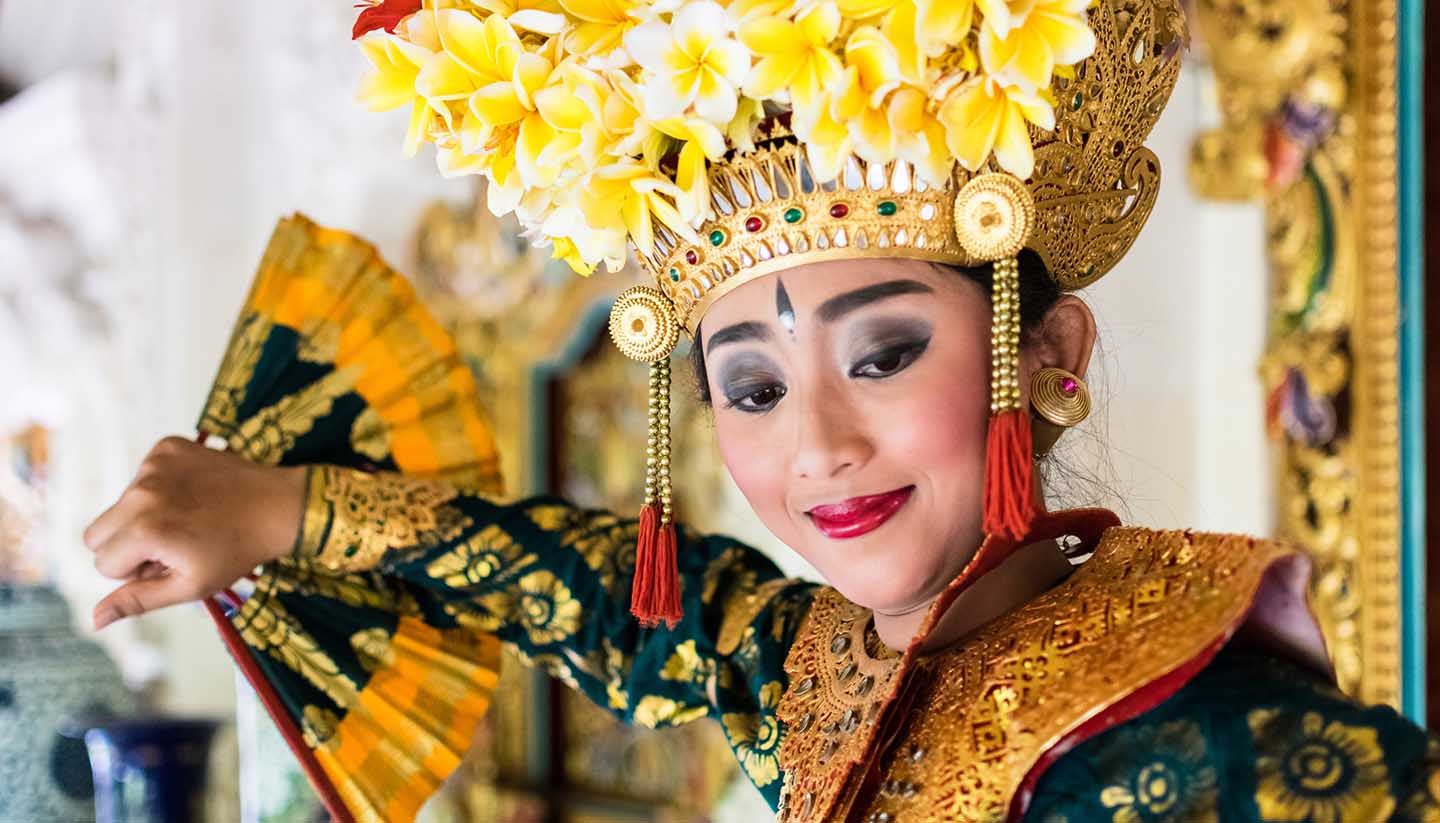
Introducing Indonesia
- About Indonesia
- Images of Indonesia
- History, language & culture
- Weather & geography
- Doing business & staying in touch
Plan your trip
- Travel to Indonesia
- Where to stay
While you’re there
- Things to see & do
- Shopping & nightlife
- Food & drink
- Getting around
Before you go
- Passport & visa
- Public Holidays
- Money & duty free
Book your flights
- Denpasar Ngurah Rai Airport
- Jakarta Soekarno-Hatta International Airport
- Beaches in Bali
Getting Around Indonesia
Indonesia has a good domestic flight network linking most of the larger towns to Jakarta. Domestic operators include Garuda Indonesia ( www.garuda-indonesia.com ), AirAsia ( www.airasia.com ) and Lion Air ( www.lionair.co.id ).
Departure tax
Included in the airfare.
Travelling around the Indonesian islands by car is variable, with much depending on which island you are on. Self-drive is possible, but beware that the standards of driving and road conditions may be different to what you are used to, and foreigners involved in minor accidents may be vulnerable to exploitation. Therefore, it is recommended that you hire a car with a driver.
Side of the road
Road quality.
Indonesia's road network continues to improve. Well-surfaced roads can be found in major islands and resort towns, but smaller islands tend to have roads that require maintenance or even dirt roads, which can be difficult to drive on after a rainstorm. Severe congestion in Jakarta can make driving difficult too.
Car hire companies are readily available in major cities.
Citizens from all ASEAN member states, namely Brunei, Cambodia, Indonesia, Laos, Malaysia, Myanmar, Philippines, Singapore, Thailand and Vietnam can drive in Indonesia without an International Driving Permit. Citizens of other countries must have an International Driving Permit.
The UK foreign office warns that International Driving Permits issued in the UK may need to be endorsed by the Indonesian licensing office in Jakarta.
Metered taxis are widely available in major cities and tourist areas. If the taxi has a meter ( argo ), make sure that it is used properly. In the case that there is no meter, you will need to agree on a fare in advance. At airports, taxis can sometimes operate on a prepaid system, and you can pay for your trip at a relevant booth.
Motorcycle taxis ( ojeks ) are available in cities and towns, and they congregate at road junctions, markets and bus terminals. The driver should provide you with a helmet, and you must agree on the fare before starting the journey.
Go-Jek, a ride-sharing app, is highly popular in Jakarta and other Indonesian cities, providing peer-to-peer motorcycle and car riding services.
Visitors can hire scooters and motorbikes but care should be taken to ensure you hire vehicles from a reputable dealer, have the correct documentation and are aware of the risks - accidents are all too frequent. Helmets are compulsory.
Regulations
Speed limits are usually 50kph (31mph) on inner-city streets, 80kph (50mph) in rural areas, and 100kph (62mph) on highways. Seatbelts must be worn.
Documentation
An International Driving Permit is required unless you are from one of the ASEAN member states.
Urban travel
Jakarta has a well-established bus service and the tickets are affordable. In other cities, buses may not be regular and are being replaced by small minivans ( sudako ). Motorised bajaj , similar to tuk-tuks, are also available in various cities and towns. They usually seat two passengers with the driver in front. Fares should be negotiated in advance. Go-Jek, Uber and Grab are popular ride-sharing apps used in Indonesia.
The train operator in Indonesia is PT Kereta Api ( kai.id ). You can check for routes and book online. Alternatively, you can also visit Tiket.com ( tiket.com ).
There are three classes of travel: • Eksecutif (executive): air-con with mandatory reservations. • Bisnis (business): no air-con but mandatory seas reservations. • Ekonomi (economy): no air-con and unreserved.
Children under three travel free in economy and business, but they don't get their own seat.
In Sumatra, trains run between Medan and Tanjung Balai, Medan and Rantu Prapet in the north, and Palembang and Panjang in the south. An extensive rail network runs throughout Java. The modern, air-conditioned Argo Bromo Anggrek service, which is executive class only with refreshments included, links Jakarta and Surabaya; it departs daily and nightly.
Ferries form the backbone of inter-island travel in Indonesia, with regular ferries connect neighbouring islands like Sumatra and Java, and Bali and Lombok. The state-run Pelni (www.pelni.co.id) is the largest ferry company and has passenger liners serving all main ports across the archipelago. Another company, ASDP (www.indonesiaferry.co.id) runs 180 ferry routes across Indonesia. Passengers can check schedules and purchase tickets online, at the local Pelni or ASDP offices, or via travel agents. Additionally, there are plenty of local services like from Ketapang (East Java) to Gilimanuk in west Bali which is close to West Bali National Park, and from Padang Bai (Bali) to Lembar (Lombok).
Beware of safety standards which vary from one provider to another. In 2017, the Indonesia Search and Rescue Agency recorded 1,687 boat accidents.

Related Articles

Top 5: Ancient Buddhist temples to visit
Buddhism has been one of the most popular religions in Asia for over 2,500 years and here are the five most beautiful and fascinating ancient Buddhist temples to visit
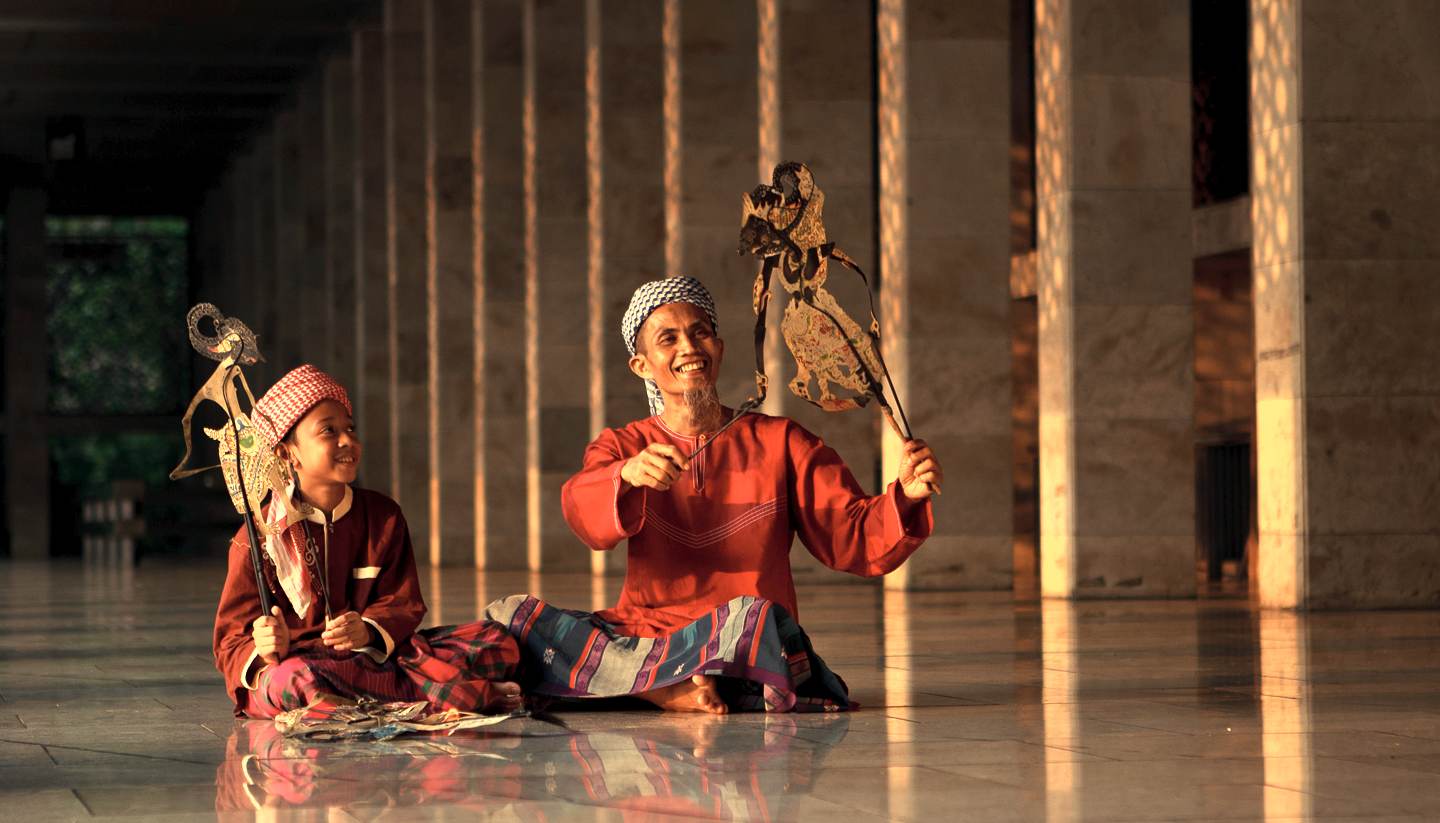
City Highlight: Jakarta
Jakarta is as bold and dynamic as the Java coffee beans it has been exporting to the world since the 17th century. For intrepid foodies, it’s Kopi Luwak that gets all the attention.
Book a Hotel
© Columbus Travel Media Ltd. All rights reserved 2024
- Travel Guides
- Top Destinations
- Inspiration & Ideas
- Booking Tips
- Packing Guide
- Where to stay
- At The Airport
- How-to Guides
- First Times
- Travel Community
- World Flavours
- Travel Products
Travel Wanderlust

Everything you need to know before travelling to Indonesia. Make the most of your trip to Indonesia with expert tips, ideas and recommendations
Indonesia Travel Guide
How to plan your trip to indonesia in 2021.
With 17,000 Indonesian islands scattered between the Asian mainland and Australia, the archipelago has all you need for a stunning vacation of exploration. With natural wonders, curious wildlife, and more, traveling Indonesia should definitely be on your bucket list!
The inexpensive local food and reasonably-priced accommodation means it’s easy to plan a trip to Indonesia on a budget, too.
Our Indonesia travel guide is packed with tips to help you plan your Indonesia trip – so what are you waiting for?
In this Indonesia travel guide:
- Indonesia – Country facts
Where to go on your trip to Indonesia
Top attractions on your indonesia trip, traveling indonesia – getting around, indonesia trip – language, trip to indonesia – money, indonesia food, indonesia – country facts.
- Where is Indonesia? Indonesia is located in Southeast Asia and Oceania, the country is between the Indian Ocean and the Pacific Ocean. It is the largest island country in the world with over 17,000 islands.
- What is the size of Indonesia? Indonesia is 1,904,569 km2 (or 735,358 sq mi), in terms of land area, that makes it the world’s 14th largest country.
- How many people live in Indonesia ? A 2018 population estimation puts the population of Indonesia at around 268 million people, it ranks 4th in the world for its population.
- What is the capital of Indonesia ? The capital of Indonesia is Jakarta, it is located on the Northwest coast of the island of Java. Jakarta is the centre of culture, economy and politics with a population of almost 11 million.
- What language is spoken in Indonesia? The official language of Indonesia is Indonesian, a standardized version of Malay. Although there are also more than 700 regional languages in this huge country.
- What is the main religion in Indonesia ? Indonesia is the the biggest Muslim-majority country in the world, with more than 85% of its population following Islam. The second biggest religion is Christianity with almost 11% of the population.
- What is the currency of Indonesia ? The currency used in Indonesia is the Indonesian Rupiah (IDR).
- What plugs are used in Indonesia? The types of plugs commonly used in Indonesia are type C and type F . Indonesia operates on a 230V supply voltage and 50Hz.
- What is the country code of Indonesia? The country code for calling Indonesia is the prefix +62, website domains from Indonesia usually end with .co.id.
With so many islands to explore, the first step in planning a trip to Indonesia is deciding where you want to go! Here are our top picks:
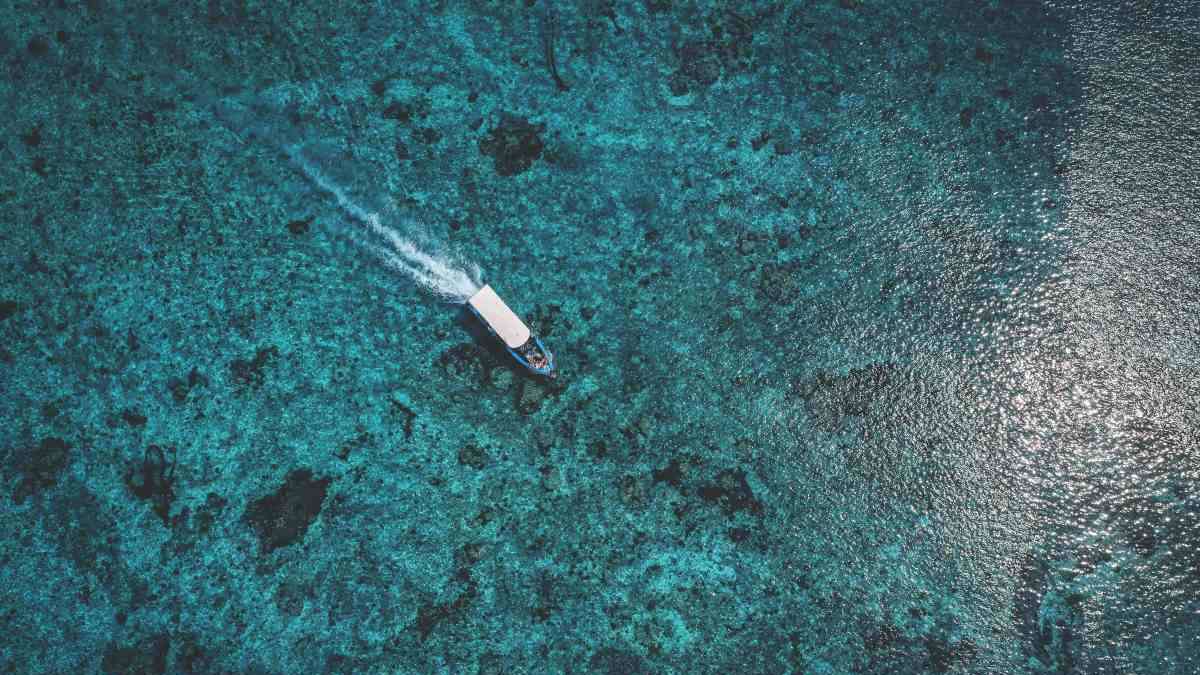
Make sure you know when is the best time to visit Indonesia based on where you want to go before planning your trip to Indonesia

Mount Bromo, Java
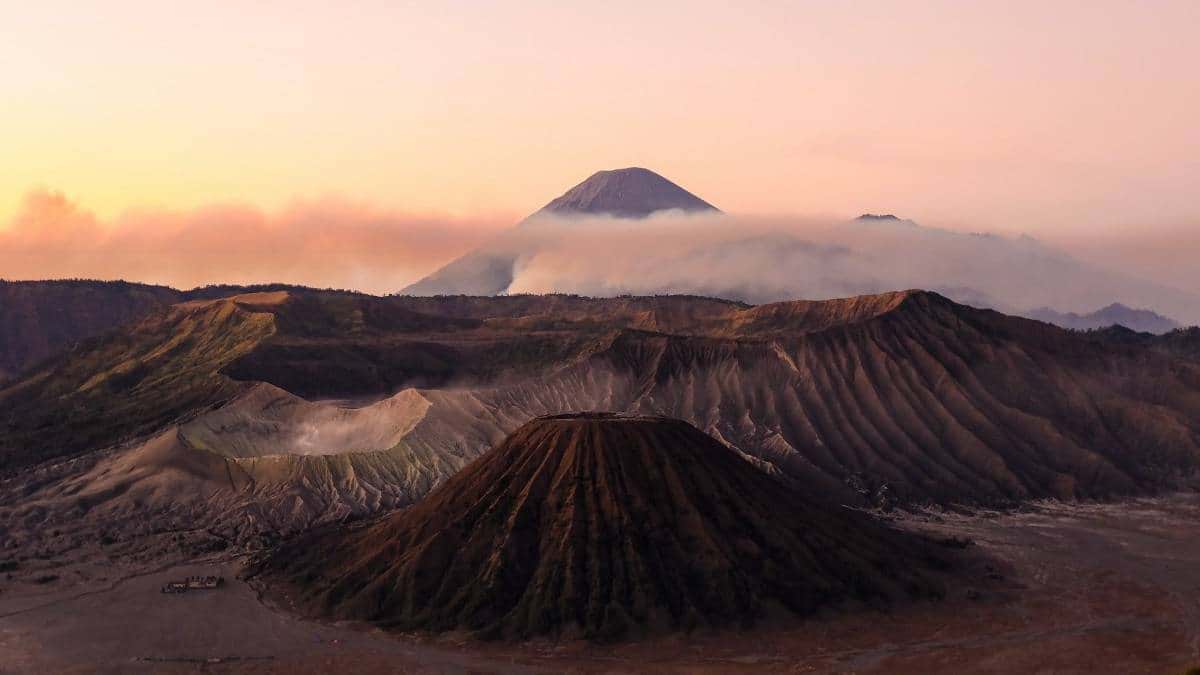
Scuba diving in Batu Batong
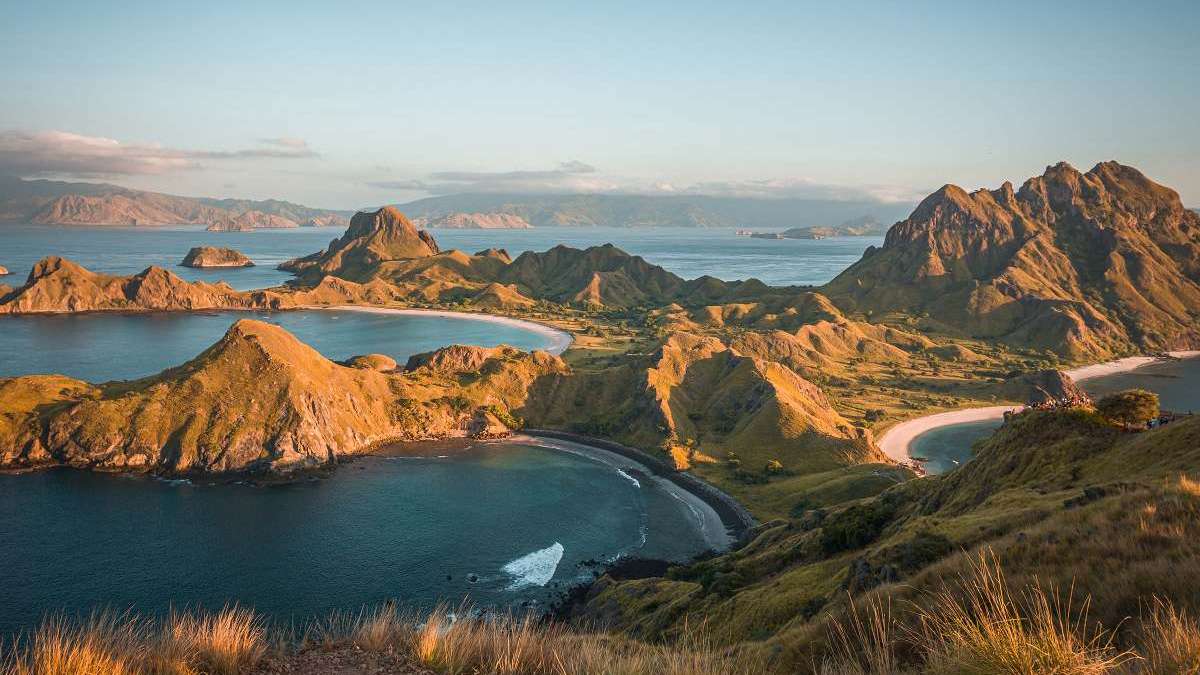
The Gili Islands, Lombok
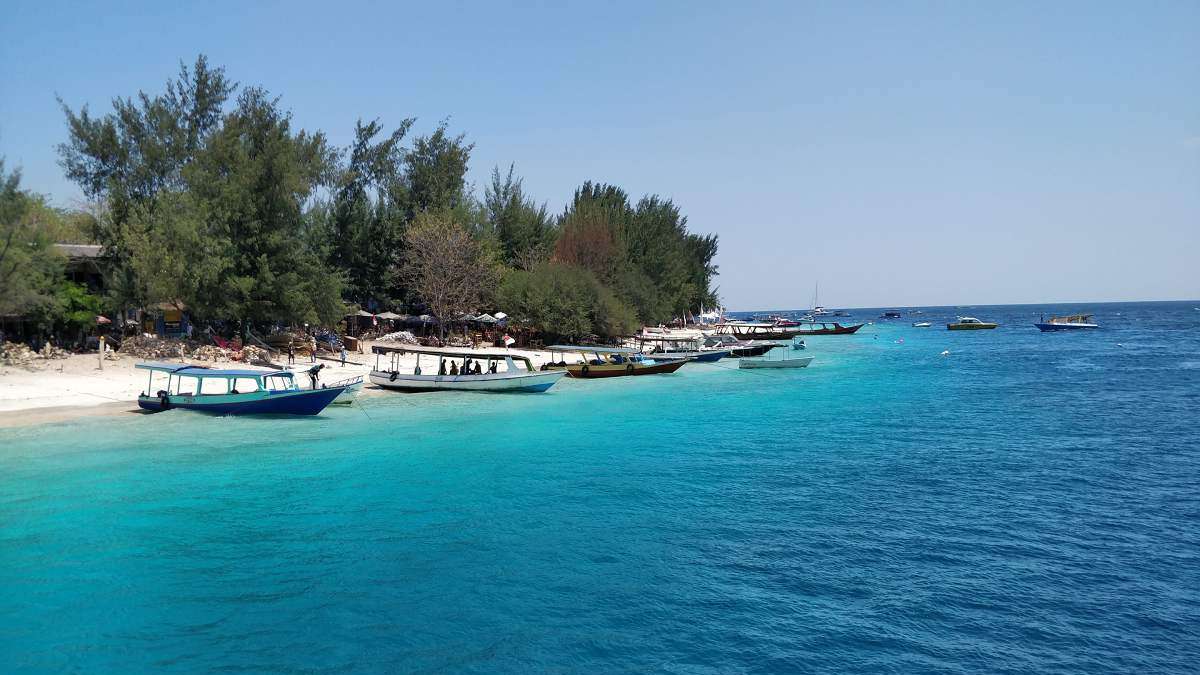
If you love beaches, make sure you read our article where we list the best beaches in Indonesia .
Delays are common to all forms of transport in Indonesia, so bear this in mind when planning your trip – it’s good to stay flexible.
A cheap transport option in Indonesia is the bus, and there are also tourist shuttle buses for longer distances. Alternatively, most people get around by becak – a three-wheeled pedal or motor-powered cart. You should negotiate your fare before you get in, but 5,000 IDR ($0.36 USD) per kilometer is a reasonable rate to ask for.
Taxis are also affordable, and they’re metered in major cities. In Java, there are trains which are likely to be more comfortable and reliable than buses.
Ferry routes can help you get to neighbouring islands with both short and long distance route options. Check up-to-date route information and buy tickets in advance at the local Pelni office.
Domestic flights can be a quicker and cheaper way to travel between the Indonesian islands. State-operated Garuda and AirAsia are the most reputable airlines, offering a range of international and domestic flights. This isn’t the cheapest way to travel, so I’d only recommend if you have limited time.
Indonesia has a whole host of regional dialects and languages, though the official language is Bahasa. You should learn a few basics before your trip, and your new language skills will help you get by throughout much of Singapore and Malaysia too.
The Indonesian currency is the rupiah (Rp). You may struggle to exchange your money outside of Indonesia as few banks carry this currency, but in provincial capitals and bigger cities throughout Indonesia, you’ll find banks capable of handling the foreign exchange. Most towns have at least one or two ATMs, which are also found within most Indomaret and Alfamart convenience stores. These generally accept at least one from Visa, MasterCard or Cirrus-Maestro.
You’ll find a delicious mix of influences in Indonesian cuisine, ranging from Chinese, Middle Eastern, Malay, Indian and Polynesian flavours. Rice is the favoured staple, though noodles are also very popular. Chicken, goat and beef are the main meats in this predominantly Muslim country, but you’ll find plenty of pork options in Christian areas and lots of seafood on coastal menus.
Local food is extremely cheap, and I would encourage you to eat out whenever you can as this affordable cuisine is a great part of traveling Indonesia!
- Privacy Policy
- Terms Of Use
Copyright © 2024 Travel Wanderlust - All Rights Reserved.
Get Daily Travel Tips & Deals!
By proceeding, you agree to our Privacy Policy and Terms of Use .
Getting Around Indonesia: Transportation Tips
Independent Traveler
Travel Smarter! Sign up for our free newsletter.
It’s easy enough to do as most tourists visiting Indonesia do — land on Bali and spend your whole time exploring all the volcanic, coastal and cultural wonders the island has to offer. But if you’re keen to see more of the world’s largest archipelago, Indonesia’s vast transportation network — planes, trains, automobiles, and all manner of two- and four-wheeled local transport — makes it easy enough to venture around.
After arriving at Ngurah Rai International Airport in Bali, you could hop an onward flight on one of Indonesia’s budget airlines to destinations like Sumatra or Flores. On the east side of Bali in Padangbai, public ferries make the short crossing (four to five hours) to Lombok, or you can hop a faster tourist ferry to go directly to the Gili Islands. Ferries also connect Bali to Java, where you can easily access the UNESCO attractions of Yogyakarta by train. And nearly everywhere you travel in Indonesia you’ll hear the zip of scooter engines, the preferred method of transport for most upwardly mobile Indonesians.
Flying to and Around Indonesia
If you’re arriving in Indonesia from North America or Europe, you’ll most likely land at the major international airports in either Jakarta or Bali. There are no nonstop flights to Indonesia from either continent, but major airlines such as KLM, Singapore Airlines, Cathay Pacific, Malaysia Airlines and Thai Airways offer one- or two-hop connections with the option for stopovers in major Asian cities such as Singapore , Bangkok and Hong Kong .
Garuda Indonesia is the state-operated airline, offering connecting service to Indonesia from Amsterdam (as well as various countries in Asia) and also domestic flights within Indonesia. The country’s major cities and remote island locales are well connected via domestic air service from other carriers as well, including Lion Air and AirAsia.
While there are ferries between Indonesia’s main islands, flying is almost always the faster and more reliable way to cover distances of any note. But be aware that as firm as ticketed itineraries may seem, plane schedules — particularly on smaller airlines and to less-visited destinations — can be unreliable and infrequent.
You can buy tickets online, and you’ll also find ticket offices at many airports for purchasing your airfare in person. When flying the budget airlines in particular, it’s a smart idea to call ahead and reconfirm your reservation before departure, as it’s not uncommon for passengers to get bumped. Arriving a full two hours ahead of time at airports for domestic and international flights is another good way to protect yourself.
Resources: AirAsia.com Bali-Airport.com www.Garuda-Indonesia.com LionAir.co.id

Renting a Car in Indonesia
In Bali, Java, Sumatra and many other spots in Indonesia, cars can be rented for around $10 per day — or even less if you bargain and are renting for several weeks at a time. Having your own wheels can be an appealing way to explore all that the particular island you’re on has to offer (note that most rental companies will not allow you to travel between islands with your rental car, even when there are car ferries).
Traffic circulates on the left side of the road, roads are of varying standards and traffic moves at the mercy of the thousands upon thousands of scooters that circulate through it like eddying rivers. If you’re not used to driving in developing countries, you’re far better off hiring a driver to shuttle you around.
If you do decide to rent a car, there are a few things to know. International Driving Permits are officially required in Indonesia, but most car rental companies will gladly rent to you with only your home state or country driving license as testament to your skills behind the wheel. That said, if you’re pulled over by the police (they often see foreigners coming and will wave you over for no clear reason), be prepared to be asked to pay a bribe to avoid being served with a much larger traffic infraction fine. These “spot checks” are a regular occurrence in Bali, where many foreigners drive cars and scooters, making them easy targets for extortion.
We recommend getting an International Driving Permit if you plan to spend more than a few weeks in Indonesia (to avoid police hassle); be sure to make a copy of both it and your main driver’s license in case they get lost.
Renting from a reputable company (Hertz, Avis, Rhino Car) or a local company like Bali Island Car Rental is important since you’ll want to have the right registration papers to present at police stops. Check before driving away that you have these papers and that they are up to date and match your car.
Seatbelts are always required for front-seat passengers, but you’d be wise to wear them at all times and in all cases in Indonesia. Failure to wear them in the front seat can result in a fine. Make sure all seatbelts are working in your rental car before leaving the lot. Check for a spare tire before leaving too, as road conditions can be dicey and flats are a real likelihood.
If you plan to travel between islands with your rental car (from Bali to Lombok by car ferry, for example), check with your rental company in advance to ensure that this is allowed.
Major rental companies will offer you collision damage waiver insurance, well worth paying for, and you should also check with your car insurance company at home or credit card company (if that’s how you’re paying for your rental) before arriving in Indonesia to know the details of your international coverage.
Resources: Avis.com BaliIslandCarRental.com ElephantCarHire.net Hertz.com RhinoCarHire.com
Indonesia by Train
Java and Sumatra are the places to see a bit of Indonesia via the national railway, called Kereta Api. While the rest of Indonesia isn’t serviced by trains at all, these islands are the exception to the rule. Affordable overnight trains operate between Jakarta and Yogyakarta, while a shorter route runs between Surabaya and Yogyakarta. On Sumatra, the railway lines are not as well connected as on Java, but they can get you between major destinations in the south and west, including Padang and Lampung, as well as around Aceh in the north.
Trains offer a couple of key advantages over buses on Java: Their schedules are more reliable, and the stations are more centrally located. You can buy a ticket on the spot at windows called lokets , with varying prices depending on your desired class of travel. For the most comfortable ride, it’s worth paying extra to book in the roomy and air-conditioned executive class, a step up from business and economy classes, neither of which is air-conditioned. Seat reservations are only mandatory in executive class and on a few trains that travel the greatest distances.
Resources: Kereta-Api.co.id (Indonesian only)
Indonesia by Ferry
It’s no surprise that the world’s largest archipelago is serviced by a vast network of ferries that range from simple wooden boats with dubious safety standards and very little in the way of covered seating to 700-passenger steel ferries that cover enormous distances with various cabin options for passenger comfort onboard.
Ferries from Ketapang in east Java depart many times a day, 24 hours a day, to make the 30-minute crossing to Gilimanuk in western Bali (no need to book in advance — you can just arrive at the ferry port and buy a ticket for the next crossing). And from Bali’s Benoa Harbor it’s possible to get all over the archipelago on ferries that leave for such destinations as Gili Meno in Lombok, Surabaya on Java, Bima on Sumbawa, Maumere on Flores and Kupang in Timor.
The most reputable and reliable boats are those run by Pelni, the state-owned and -operated shipping company, with routes that travel across all of Indonesia with many ports of call (you can hop on and off where you want). These boats carry up to 5,000 passengers and have six classes of accommodation onboard, ranging from simple bench-style seating in the open-air top section of the boats to private cabins for the most comfort. It’s best to reserve in advance, especially during holiday times and religious periods (such as Ramadan), when boats run at maximum capacity.
If you’re traveling on other Indonesian ferries, be aware that safety standards and many other factors can vary widely. Gangplanks are often narrow and rickety, and people with mobility issues may have trouble boarding. Ferries are often oversold, so it’s normal to see passengers traveling long distances with no reserved seat on the open deck.
Car ferries also exist between many of the islands, and if you travel long distances this way you’ll most likely be sleeping in your car.
Resources: IndonesiaFerry.co.id Pelni.co.id (Indonesian only)
Indonesia by Scooter
After a few days in Bali watching the locals zip merrily to and fro on two wheels, many tourists feel tempted to rent a scooter of their own for a little island tour. But far too many deaths are attributed each year to scooter accidents in Indonesia, with both locals and tourists as victims. If you’re still tempted, be sure to wear a helmet at all times. We recommend giving it a pass if you’ve never driven a scooter before; Indonesia’s frenetic roads are not the ideal place to learn.
All over Bali and elsewhere in Indonesia you’ll find scooters to rent both from recognizable storefronts and from enterprising locals looking to score a bit of cash on their own rides. Scooters usually rent for around $5 to $6 per day, and you’ll be asked to leave a passport or credit card as a down payment. You can usually bargain down the price if you’re renting the scooter for a week or more.
Resources: Bali4Ride.com BaliBikeRental.com
Buses, Bemos, Becaks and More
Indonesian buses usually leave relatively on time and are very cheap, with options for booking your tickets a day or more in advance. The island of Java offers the most comprehensive bus services from Jakarta to outlying destinations, but standards vary drastically across companies and destinations, and travel times can be painfully long.
For that reason, tourists with more than an absolute shoestring budget often choose either to hire their own car and driver or — in the more touristy areas on Bali, Lombok and Java — to travel by tourist minibus shuttles that operate for reasonable per-person rates between major points of interest.
On the jam-packed communal minibuses called bemos , which have benches rather than seats in most cases, be sure to ask the fare when you board to avoid a possible rip-off situation when it’s time to get off. Essential to locals for short-distance travel in busy metropolitan areas, bemos range far and wide — but with no real map system or website to figure them out, you’re best off asking another person waiting for a bemo to help you figure out how to get where you’re going.
Within cities and towns you’ll often see variations on the rickshaw too. The motorized version is called a bajaj and carries two passengers behind the driver. The bicycle-style rickshaw, called a becak , also has room for two passengers, with the driver pedaling behind them. You’ll want to negotiate the rate with your driver ahead of time to avoid any misunderstandings.
Resources: GoSEAsia.about.com/od/Bali_Transportation/a/How-To-Ride-Bemo-In-Bali-Indonesia.htm TransJakarta.co.id (Indonesian only)
You May Also Like Where to Stay in Indonesia: Lodging Tips 10 Ways to Survive a Long-Haul Flight The Best Uber Alternatives Around the World
–written by Terry Ward
We hand-pick everything we recommend and select items through testing and reviews. Some products are sent to us free of charge with no incentive to offer a favorable review. We offer our unbiased opinions and do not accept compensation to review products. All items are in stock and prices are accurate at the time of publication. If you buy something through our links, we may earn a commission.
Top Fares From

Don't see a fare you like? View all flight deals from your city.
Today's top travel deals.
Brought to you by ShermansTravel
9-Nt Dublin, Cork, Killarney & Galway...
Railbookers

Luxe, 12-Night Spain, France, Monaco &...
Regent Seven Seas Cruises

Ohio: Daily Car Rentals from Cincinnati

Trending on SmarterTravel
Travel Guide Indonesia
Book your individual trip , stress-free with local travel experts
- roughguides.com
- Travel guide
- Itineraries
- Local Experts
- Travel Advice
- Accommodation
Plan your tailor-made trip with a local expert
Book securely with money-back guarantee
Travel stress-free with local assistance and 24/7 support
Matt Mickiewicz
Trip Provider took us far off the beaten tourist path in Bali, and arranged a unique and very special experience far away from the tourist crowds that we w...
With 17,000 Indonesian islands scattered between the Asian mainland and Australia, the archipelago has more than its share of natural wonders and curious wildlife. You’ll discover everything from the scorched landscape of Komodo to the lush volcanic slopes of Flores and the shimmering reefs of the Gili Islands. Spectacular crater lakes change colour before your eyes, while sparring dragons could be straight from a scene of Jurassic Park.
Indonesia travel facts
Where to go in indonesia, best time to go to indonesia.
- How to get to Indonesia
Lombok and Gili Islands
Around 35 kilometres east of Bali, Lombok has more unspoilt beaches than its neighbour, and less traffic and pollution. Visually it’s stunning, with the awesome bulk of Gunung Rinjani rising above turquoise crater lakes. Just off shore, the fabled Gili Islands are ringed by white-sand beaches and pristine coral reefs. Of the three, Gili Trawangan is the party island, while Gili Air and Meno have a mellower vibe.
Java ’s central spine is dominated by volcanoes, their fertile slopes supporting glimmering rice fields dotted with countless villages. To the south is the homeland of the ethnic Javanese and the centre of their traditional arts, culture and language, epitomized by the royal courts of Yogyakarta and Solo. To the east, the volcanic massif of Gunung Bromo offers excellent hikes, particularly at sunrise. Elsewhere are the ancient temples of the Dieng Plateau, the turquoise lake of Kawah Ijen and the palm-fringed beaches around Pangandaran.
An explorer’s paradise, much of Sumatra remains undiscovered. Most of the highlights on the beaten path are clustered to the north of the old Trans-Sumatran highway: the orangutan-filled jungles of Bukit Lawang; Danau Toba, the spiritual heartland of the fascinating Batak tribe; the twin volcanoes of Berastagi; and the diving sites of Pulau Weh. To the west you’ll discover Bukittinggi – the cultural capital of the Minangkabau Highlands – and the jungle-rimmed lake of Danau Maninjau.
Kalimantan, Borneo
Occupying the southern two-thirds of Borneo, Kalimantan remains largely untouched by tourism. With few roads, the interior’s great rivers are its highways and a boat trip along the waterways will offer a taste of traditional Dayak life. More intrepid explorers can spend weeks navigating their way through seldom-ventured tropical jungle, and a visit to one of the national parks could bring you face to face with wild orangutans.
Flores comprises one of the most alluring landscapes in Indonesia. The volcanic spine of the island soars to 2500m, and torrential wet seasons result in a lushness that marks Flores apart from its scorched neighbours. The most arresting sight is Kelimutu: the three craters of this extinct volcano each contain a lake of different, vibrant and gradually changing colours.
Off the west coast of Flores lies Komodo National Park, a group of parched but majestic islands that are home to the endemic Komodo dragon. The largest extant lizard in the world, this fearsome creature weighs up to 150lbs and has a toxic bite, allowing them to hunt far bigger prey. The two most-visited islands in the national park are Komodo and Rinca; received wisdom has it that the dragons on the former are bigger but harder to spot.
Sulawesi ’s unusual “K” shape means nowhere on the island is much more than 100km from the sea. Mountains isolate its four separate peninsulas from one another and from the outside world – invaders were hard-pushed to colonize beyond the coast, and a unique blend of cultures developed. The south is split between the highland Torajans and the lowland Bugis; various isolated tribes occupy the central highlands, and the Filipino-descended Minahasans reside in the far north. The mountainous Tanah Toraja is the island’s chief attraction, thanks to its beautiful scenery, unusual architecture and vibrant festivals.
Jakarta is Indonesia’s unrivalled megalopolis, home to almost 30 million people across its 700-square-kilometre concrete sprawl. Though many travellers don’t give the capital a second glance, there’s nowhere better to experience Indonesia’s pulsing dynamism and heart-rending contrasts. Give the city a chance and you’ll discover everything from fascinating ethnic and historical quarters and interesting museums to heady nightlife and gargantuan new malls.
Discover more places in Indonesia
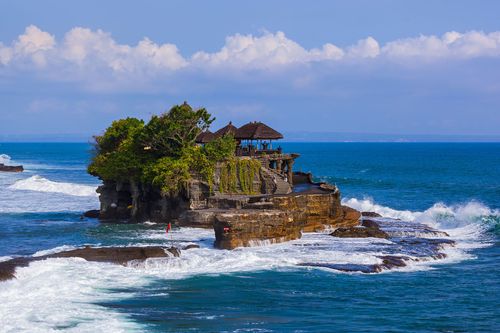
- Komodo, Indonesia
- Lombok, Indonesia
- Sulawesi, Indonesia
- Sumatra, Indonesia
- Sumba, Indonesia
- Sumbawa, Indonesia
- Raja Ampat, Indonesia
- Nusa Penida, Indonesia
- Nusa Lembongan, Indonesia
The whole Indonesian archipelago is tropical, with temperatures always between 21°C and 33°C, although cooler in the mountains. In theory, the best time to travel to Indonesia is dictated by the wet and dry season, though it’s often hard to tell the difference. This is increasingly so with the effects of climate change, which has already altered seasonal patterns, sometimes shortening and concentrating wet seasons.
Very roughly, in much of the country, November to April are the wet months (Jan and Feb the wettest) and May through to October is dry. The most expensive time to visit Indonesia is between mid-June and mid-September and again over Christmas and New Year, when rooms can be fully booked for days on end. Read more about the best time to visit Indonesia .
This part of our Indonesia guide will look at how best to travel to the country and how to get around the islands.
Jakarta’s Sukarno-Hatta Airport and Bali’s Ngurah Rai Airport are the main international air gateways into Indonesia, with direct flights from several Australian cities and destinations throughout Asia.
The archipelago also has international airports at Medan, Makassar, Manado, Padang, Surabaya and Yogyakarta – with connections mainly to other Southeast Asian airports.
For entering by boat, Indonesia has ferry connections with Malaysia and Singapore.
When considering how to get around Indonesia , bear in mind delays are common to all forms of transport, caused by weather, mechanical failure, or simply not enough passengers turning up. The best option is to keep your schedule as flexible as possible to save yourself a good deal of stress.
One of the cheaper ways to get around in Indonesia is by bus. However, you may find that you’re getting what you pay for in terms of comfort and safety. Another option are the tourist shuttle buses for the longer distances.
In Java, you will find trains which are likely to be more comfortable and reliable than buses.
Ferry routes run between the neighbouring islands of Indonesia offering short and long distance route options. Check up-to-date route information and buy tickets in advance at the local Pelni office.
Domestic flights can be a quicker and cheaper way to travel between the Indonesian islands. State-operated Garuda and Air Asia are the most reputable airlines, handling a range of international and domestic flights.
Read more travel advice for getting around Indonesia .
The biggest Buddhist stupa in the world, the ninth-century temple is the greatest single piece of classical architecture in the archipelago. The surroundings are just as spectacular, with looming volcanoes on three sides and jagged limestone cliffs on the fourth.
Tucked away on the easternmost fringes of Gunung Leuser National Park, Bukit Lawang offers some of the world’s best opportunities for seeing orangutans in the wild. To witness these incredible creatures performing gymnastics in the treetops is one of the most memorable experiences in Indonesia.
Ubud is the cultural capital of Bali, known for its talented classical dancers and musicians and for its prolific painters and artisans. Set amid terraced rice paddies, the seductive town brims with art galleries, museums and artisanal shops.
Rinjani, at 3726m, is one of Indonesia’s highest mountains. The climb to its summit is challenging but rewarding, taking in forest, rocky peaks and the magnificent crater lake of Danau Segara Anak.
To the south of Sulawesi, the mountainous highlands of Tanah Toraja is home to one of Indonesia’s most confident and vivid cultures: the Torajans, famed for their ghoulish burial rituals.
Clustered about 150km southeast of Ambon in the remote Banda Sea, the Bandas centre around the perfectly conical peak of Gunung Api. Divers from across the world are lured to these far-flung volcanic isles to swim among sea turtles, black marlins and hammerhead sharks.
The three craters of this extinct volcano each contain a lake of different, vibrant and gradually changing colours. Trek to the lunar-like summit at dawn to see the sun rise hazily over the mountains.
Off the west coast of Flores lies Komodo National Park, a group of barren but majestic islands that are home to the Komodo dragon – the largest extant lizard in the world.
On the borders of Alas Purwo National Park in the far southeastern corner of Java, the fishing village of Grajagan has become famous for its world-class surf. Better known as G-Land, it boasts awesomely long right- and left-handers and many kilometres of pristine beach.
This trio of jungly specks just off the northwest coast of Lombok are strikingly beautiful, with glorious white-sand beaches lapped by brilliant blue waters. Gili Trawangan best fits the image of party island, tiny Gili Meno is a honeymooners’ favourite, and Gili Air offers a mix of the two.
The laid-back town of Bukittinggi appeals with its flamboyant Minangkabau architecture, the beautiful scenery around Danau Maninjau and the rafflesia reserves in the hills.
South of Flores, Sumba is famous for its intricate fabrics, grand funeral ceremonies and its extraordinary annual pageant of horseback spear throwing.
With dense tropical jungle and abundant wildlife, Kalimantan provides opportunities for river travel in undiscovered territory. Cruise past mangroves, jungle and stilt villages along Indonesia's longest river, the Sungai Kapuas.
Yogyakarta ranks as one of the best-preserved and most attractive cities in Java, and is a major centre for the classical Javanese arts of dance, music, poetry and puppet shows.
Tangkoko National Park is the home of the world’s smallest primate, the tarsier. These nocturnal tree-dwelling creatures resemble bush babies or aye-ayes with their large saucer eyes and long, thin fingers.
Read our full guide on things not to miss during your Indonesia trip.
We’ve expanded our Indonesia travel guide to include an example of our Tailor-Made travel itineraries . These Indonesia itineraries can take you to every corner of the archipelago – and you’ll learn plenty about the Indonesian islands no matter where you want to go or what you want to do.
Tailor-made travel itineraries for Indonesia, created by local experts

6 days / from 830 USD
Bali's Beaches and Temples
Experience Bali's brilliant beaches and temples with this stunning trip. Marvel at ancient temples like Tanah Lot and Pura Besakih, soak in stunning sunsets, stroll bare-footed along the best beaches in Bali and haggle at local markets – experience all of this, and much more, with this unique trip!

10 days / from 1600 USD
Rest and Relaxation in Bali and Lombok
This unique trip will take you to some of Bali and Lombok's most traditional places. Look forward to driving through tropical landscapes and spending time in villages nestled in scenic spots of traditional luxury with infinity pools and stunning vistas over the ocean.

10 days / from 2100 USD
Royal Bali - Culture & Beaches
Enjoy a luxurious stay in Bali, with hand-picked 5 Star Hotels. This trip includes privately guided tours as well as leisure time, ideal for families with kids. Highlights include sea temple Tanah Lot, Jatiluwih rice terraces and Uluwatu temple with its famous Kecak dance.
Rich wildlife, smoking volcanoes, pink beaches: the highlights of Indonesia can be covered in a two-week trip.
Two week itinerary : ULTIMATE INDONESIA
- Bukit Lawang, Sumatra. In north Sumatra, the thick, misty jungle of Gunung Leuser National Park shelters wild orangutans, which can be spotted cavorting among the treetops.
- Ubud, Bali. Browse the art galleries and craft stores of Bali’s cultural capital, before watching captivating performances by classical dancers and musicians. Spend another day at your leisure or on a cycling tour of the area.
- Mount Batur, Bali. Rising from a huge volcanic crater, Gunung Batur is a smouldering volcano with wisps of sulphurous smoke drifting across its slopes. Hike to the summit at sunrise for dreamy views.
- Penarungan, Bali. Penarungan is a remote village on the fringes of Ubud, where traditional rural Balinese life continues as it has for years.
- Komodo National Park. Go island-hopping across Kelor and Rinca for the chance to trek among lunar landscapes and spot the Komodo dragon, or ora as it is known locally. You may also spot other unusual wildlife like sulphur-crested cockatoos, brush turkeys and the megapode bird.
- Pantai Merah, Komodo. The candy floss-coloured sands of Pantai Merah are the reason for its apt nickname: Pink Beach. This rose-tinted stretch of sand hugs the coastline of Komodo, and is a great snorkelling spot for its tropical fish and manta rays.
- Kanawa Beach, Komodo. Spend the morning snorkelling in the crystal clear waters before your transfer back to Bali.
- Sanur, Bali. A laid-back beach resort hooking around the southern coast of Bali, this is a chilled spot to unplug on powdery sands.
- Tanah Lot, Bali. Framed by frothing white surf and glistening black sand, this elegant Hindu temple is marooned on a wave-lashed rock just off the Balinese coast.
Whether you have two weeks or a month, our local Indonesia experts can book a trip that gives you the flavour of travel in this extraordinary country.
Travel advice for Indonesia
From travel safety to visa requirements, discover the best tips for traveling to Indonesia
- Culture and Etiquette in Indonesia
- Eating and drinking in Indonesia
- Getting around Indonesia: Transportation Tips
- Travel Tips Indonesia for planning and on the go
- Best time to visit Indonesia
In this section, we will look at Indonesia travel advice and tips to help you enjoy a stress-free trip.
Money and banks
The Indonesian currency is the rupiah (“Rp”). Notes come in denominations of Rp500 (very rare), Rp1000, Rp5000, Rp10,000, Rp20,000, Rp50,000 and Rp100,000. Coins, mainly used for bemos, come in Rp25 (rare), Rp50, Rp100, Rp500 and Rp1000 denominations. Officially, rupiah are available outside Indonesia, but the currency’s volatile value means that few banks carry it.
You’ll find banks capable of handling foreign exchange in provincial capitals and bigger cities throughout Indonesia, and almost every town has at least one or two ATMs, which are also found within most Indomaret and Alfamart convenience stores. These generally accept at least one from Visa, MasterCard or Cirrus-Maestro.
Medical care and emergencies
Pharmacies ( apotek or apotik ) can provide many medicines without prescription, but if you need an English-speaking doctor ( doktor ) or dentist ( doktor gigi ), seek advice at your accommodation or at the local tourist office. You’ll find a public hospital ( rumah sakit ) in major cities and towns, and in some places these are supplemented by private hospitals, many of which operate an accident and emergency department. If you have a serious accident or illness, you will need to be evacuated home or to Singapore, which has Asia’s best medical provision. It is, therefore, vital to arrange health insurance before you visit Indonesia.
Crime and safety
Indonesia has endured a torrid time over the past decade or so, most recently with the January 2016 terror attacks in downtown Jakarta, killing eight including the four assailants. Together with the July 2009 bombings of Jakarta’s Ritz-Carlton and JW Marriott hotels, the 2002 Bali bombings which left more than 200 (mostly foreigners) dead and the violence that surrounded the political and religious upheavals of the past decade, it undermines the idea that Indonesia is a safe place to travel. However, considering the scale of Indonesia and the vast number of international travellers, incidents involving Westerners are rare.
Petty theft, however, is a fact of life, so don’t flash around expensive computer equipment, jewellery or watches. Be aware of pickpockets on ferries, buses or bemos, who usually operate in pairs: one will try to distract you. Have nothing to do with drugs in Indonesia: the penalties are extremely tough, and you won’t get any sympathy from consular officials.
Read more travel advice for Indonesia .
As of 2016, citizens from 169 countries, including all of Europe as well as Australia, New Zealand, Canada and the US, can enter Indonesia visa-free at any official immigration gateways and stay for thirty days. However, travel requirements for Indonesia are notoriously prone to change, so it’s worth checking before you travel. For a full list of official gateways see indonesianembassy.org.uk .
Once you have entered visa-free, you cannot extend your stay so if you’re planning to stay longer than thirty days, you’ll need to either purchase a visa in advance from an Indonesian consulate or buy one on arrival for $35, which can then be extended for another thirty days at an immigration office (for Rp250,000).
Alternatively, you could make a visa run to Singapore or Malaysia before returning to obtain another thirty days in the country. A visa is most easily obtained in Singapore, Penang or Kuala Lumpur. A fee of Rp300,000 per day is incurred if you overstay your visa.
Prices for the simplest double room start at around $5 (more in touristy areas like Bali), and in all categories are at their most expensive from mid-June through to August, and in December and January. The bottom end of Indonesia’s accommodation market is provided by homestays and hostels. Penginapan, or inns, are often simply spare bedrooms in the family home, and there’s often not much difference between these and losmen, pondok and wisma, which are also family-run operations. Rooms vary from whitewashed concrete cubes to artful bamboo structures – some are even set in their own walled gardens. Hard beds and bolsters are the norm, and you may be provided with a light blanket.
In remote, rural Indonesia, you may end up staying in villages without formal lodgings, in a bed in a family house. First ask permission from the local police or the kepala desa (village head). In exchange for accommodation and meals, you should offer cash or useful gifts, such as rice, salt, cigarettes or food, to the value of about $2 at the very least.
At first glance Indonesian food may appear to lack variety, but scratch beneath the surface to discover regional specialities from across the archipelago and beyond. Influences from Chinese, Middle Eastern, Malay, Indian and Polynesian cuisines find their way into kitchens across Indonesia.
While rice is the favoured staple, noodles are also widely popular. Chicken, goat and beef are the main meats in this predominantly Muslim country, though plenty of pork options feature in Christian areas and seafood dominates coastal menus. Many restaurants offer a handful of vegetarian options, including cap cay (fried mixed vegetables), tahu (tofu), and tempe (pressed, fermented soya beans), a Javanese speciality.
Spices are the backbone of all Indonesian cooking, fried to form a paste for curries or rubbed over ingredients prior to frying or grilling. Meals are often served with sambal, a sizzling blend of chillies and spices. Vegetarians should be aware that krecek , a type of sambal, contains cow skin.
Alcohol is often a touchy subject in Indonesia, where public drunkenness may incur serious trouble, though there’s no need to be paranoid about this in cities. The locally produced beers, Anker and Bintang, are widely available. Spirits are less publicly consumed, and may be technically illegal, so indulge with caution. Nonetheless, home-produced brews are often sold openly in villages.
Some of the most popular Indonesian food and drink include:
- Nasi goreng , fried rice with shreds of meat and vegetables and topped with a fried egg.
- Nasi campur , boiled rice served with a small range of side dishes.
- Gado-gado , steamed vegetables dressed in a peanut sauce.
- Sate , small kebabs of barbecued meat or fish, served with spicy peanut sauce.
- Roti , an Indonesian bread made from sweetened dough.
- Indonesian coffee is among the world’s best, sweetened with copious amounts of sugar ( gula ).
- Tuak (“ balok ”) or palm wine, made by tapping a suitable tree for its sap, comes in plain milky white or pale red varieties.
- Rice wine ( arak or brem ) and sopi , a distillation of tuak, either of which can leave you incapacitated after a heavy session.
Read more about the food and drink in Indonesia .
Most people who visit Indonesia come for the sea, either surfing across the breakers or delving beneath the water’s surface on snorkelling and diving excursions. Inland is an abundance of hiking and biking opportunities, from volcano treks to wildlife-spotting in national parks and cycling among the lush countryside.
Indonesia has many of the world’s best diving sites, including Pulau Bunaken off Sulawesi, Pulau Weh off northern Aceh in Sumatra, the Bandas in the Maluku Islands, and Raja Ampat to the west of Papua. Most major beach resorts have dive centres, but once you get further afield you’ll probably have to rely on live-aboard cruises. A day’s diving costs anything from $45 to upwards of $100.
One of the main reasons why people travel to Indonesia is for its pounding surf. The best-known waves are found on Bali, G-Land (Grajagan) on Java and around Krui in southern Sumatra. Further afield, Sumba, the Mentawai Islands, and Lhoknga in Aceh are also increasingly popular. Good websites include baliwaves.com , indosurflife.com , wannasurf.com and wavehunters.com .
There are endless trekking opportunities on the islands. The best places to travel in Indonesia for volcano treks include Gunung Batur on Bali and Gunung Bromo and Gunung Merapi on Java. More taxing favourites include Gunung Rinjani on Lombok and Gunung Sinabung in Sumatra. Also in Sumatra, the Gunung Leuser National Park is Southeast Asia’s largest, and includes the famous Bukit Lawang orangutan sanctuary. Guides are available from local villages and tourist centres, at a cost of about Rp250,000–300,000 per day.
Indonesia is the world’s most populous Muslim country, but the practice of Islam across the archipelago has been shaped by centuries of interaction with Hinduism, Buddhism and other faiths, as well as traditional animist practices. As a result, Islam in Indonesia has historically been buffered against the more austere, exclusivist ideologies of certain Middle Eastern states. The majority of Indonesians remain relatively open and tolerant in line with the state philosophy of Pancasila, which grants followers of all religions equal rights.
Although there are regional variations in accepted social norms, with Aceh among the most conservative provinces and Bali the most liberal, there are also differences within provinces. Outside the main tourist resorts, dress conservatively, especially when visiting religious sites, to avoid giving offence. Often you’ll be required to wear a sarong and a ceremonial sash around your waist (usually provided by the most-visited temples). Be especially sensitive during the Muslim fasting month of Ramadan.
Of the vast range of traditional dance and music across the Indonesian islands, the best known are the highly stylized and mannered classical dance performances in Java and Bali, accompanied by the gamelan orchestra. Every step is minutely orchestrated, and the merest wink of an eye or arch of an eyebrow has significance. Ubud on Bali and Yogyakarta on Java are the centres for these dances.
Although there are also more 250 native languages spoken throughout the archipelago, Indonesia’s national language is Bahasa Indonesia, a form of Bahasa Malay. Because it’s written in Roman script, has no tones and uses a fairly straightforward grammar, it’s relatively easy to learn.
Pronunciation
a as in a cross between father and cup
e sometimes as in along; or as in pay; or as in get; or sometimes omitted ( selamat pronounced “slamat”)
i either as in boutique; or as in pit
o either as in hot; or as in cold
u as in boot
ai as in fine
au as in how
c as in cheap
g always hard as in girl
k hard, as in English, except at the end of the word, when you should stop just short of pronouncing it.
Given the enormous cultural and ethnic mix that makes up Indonesia, it’s hardly surprising that the range of traditional music and dance across the archipelago is so vast.
Best known are the highly stylized and mannered classical dance performances in Java and Bali, accompanied by the gamelan orchestra. Every step is minutely orchestrated, and the merest wink of an eye or arch of an eyebrow has significance. Ubud on Bali and Yogyakarta on Java are the centres for these dances. Yogya is also the main place to catch a performance of wayang kulit , shadow puppet plays.
A gamelan is an ensemble of tuned percussion, consisting mainly of gongs, metallophones and drums, made of bronze, iron, brass, wood or bamboo, with wooden frames, which are often intricately carved and painted. The full ensemble also includes vocalists – a male chorus and female solo singers – and is led by the drummer in the centre. A large gamelan may be played by as many as thirty musicians, and is a communal form of music-making – there are no soloists or virtuosos.
Sundanese (West Javanese) degung is arguably the most accessible gamelan music for Western ears. Its musical structures are clear and well defined, and it is played by a small ensemble, but includes the usual range of gongs and metallophones found in all gamelan.
Top image © Akhmad Dody Firmansyah/Shutterstock
The Rough Guides to Indonesia and related travel guides
In-depth, easy-to-use travel guides filled with expert advice.
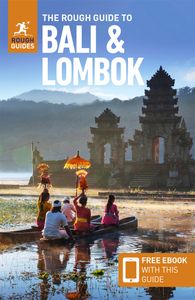
Find even more inspiration here

Planning your own trip? Prepare for your trip
Use Rough Guides' trusted partners for great rates
written by Rough Guides Editors
updated 25.04.2024
Ready to travel and discover Indonesia?
Get support from our local experts for stress-free planning & worry-free travels.
- Where to stay
- Travel advice
- Indonesia Tours
- Indonesia Travel Guide
- Indonesia Travel Advice
15 Best Indonesian Islands to Visit
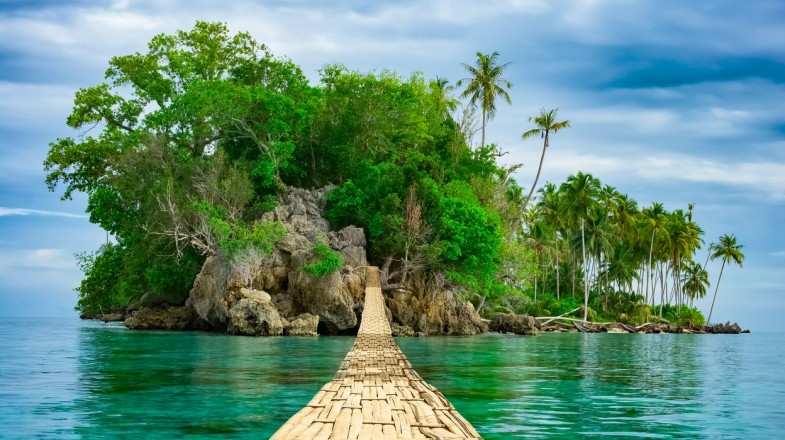
- 5.82K views
- ~ mins read
Made up of more than 17,500 islands that stretch almost 5,000 kilometers along the equator, Indonesia isn’t a country lacking variety. The world’s fourth most populous nation blends diverse cultures, traditions, foods and landscapes that are just ripe for exploration. But with so many potential destinations, which Indonesian islands should you visit?

- Reece Harrison-strati
- From England
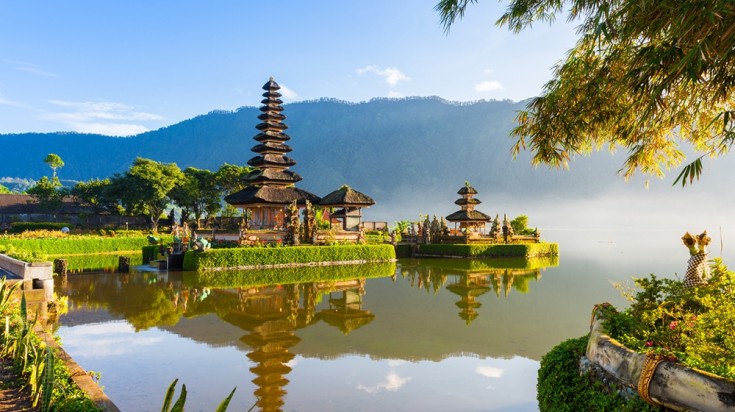
First on any list of the best islands to visit in Indonesia should be Bali , the ‘Island of the Gods’. Undoubtedly the most well-known of any of the islands, Bali offers visitors an Indonesia in miniature , with a varied landscape that ranges from traditional rice terraces to the active volcano Mount Batur , breath-taking beaches , an intriguing Hindu culture, and a famed nightlife. Nor can we fail to mention the world-class surfing and scuba diving on offer.
Check out our travel guide on Best time to visit Bali .
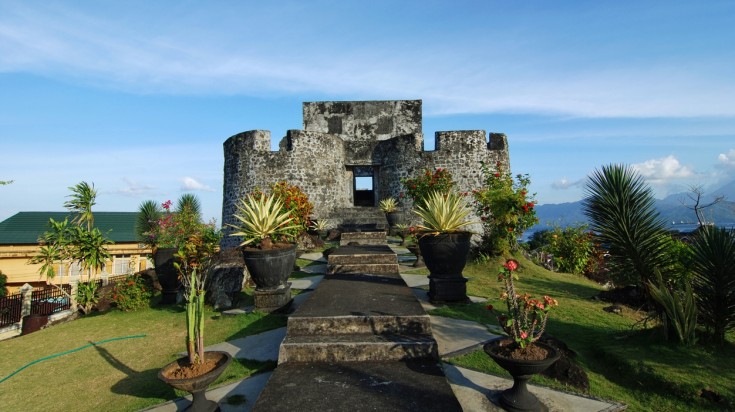
More rarely visited, Ternate is the provincial capital of the Maluku Islands (perhaps better known as the Moluccas), west of New Guinea. Since the trade in valuable spices such as nutmeg began here, Ternate was fiercely defended, and boasts an impressive collection of colonial-era fortifications. Above all you won’t want to miss Fort Oranje, the Dutch East India Company’s local headquarters for many years.
3. Gili Trawangan

A relaxing boat ride away from Bali, Gili Trawangan is one of the trio of the Gili Islands small enough to be explored by bicycle in a few hours. Adding to the overall ambience of slow-paced tropical idyll is the ban on motor vehicles, making it one of the quietest Indonesian island escapes for those seeking some head space. An island of two halves, it’s possible to explore the serene inland villages by day before heading to the thriving bohemian bar scene by night.

Home to Bunaken National Marine Park, this island off the north-eastern tip of Sulawesi is a magnet for snorkelers and divers since it harbors 70% of all the regions fish species and boasts underwater visibility of up to 35 meters in the summer months. While more experienced divers will be eager to take on the trickier and deeper spots, corals in the shallows close to shore mean even first-time snorkelers can have amazing underwater encounters.
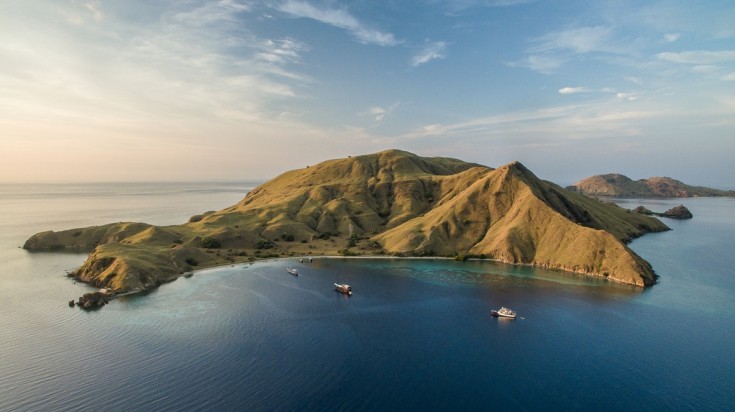
There’s only one island in the world where you can find Komodo dragons, the world’s largest lizard, and that’s Komodo . The main attraction are the dragons, which can be admired with a ranger escort from a series of paths that take in the best of the island, but you should also be sure to visit Pink Beach, Pantai Merah. It’s one of only seven pink sand beaches in the world (the result of microscopic pieces of coral mixing with the sand), and a popular spot with snorkelers because of the hundreds of species of coral found there.
Planning a trip to Komodo island? Make sure to check out our Top tips for visiting Komodo Island .
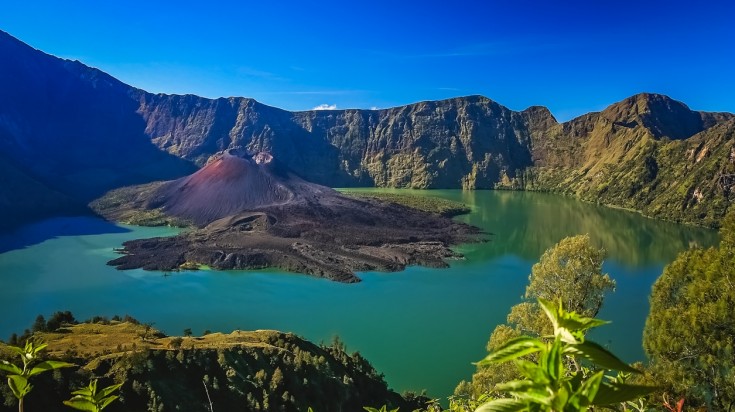
Considered one of the best Indonesian islands to visit alongside Bali, neighboring Lombok is popular with backpackers, who cluster around the surfing beaches of Kuta due to its laid-back vibe. There are lots of experiences to be had here . The island’s largest city, Mataram, hails some significant sights, including a stunning eighteenth-century water palace, and a ‘fountain of youth’ in Narmada Park that promises a long life for anyone who drinks from it, while Indonesia’s second-highest volcano, Gunung Rinjani , is a huge lure for hikers.
7. Wakatobi Islands

Nature lovers will adore the four Wakatobi Islands, south of Sulawesi . Part of Wakatobi Marine Reserve, the few who make the journey from Bali can explore the islands’ untouched earthly habitats before disappearing beneath the waves with either snorkel or scuba apparatus into what is thought of by many as one of Indonesia’s best dive spots. For the local touch, head to one of the homestays on Kaledupa island.

Part of the larger Raja Ampat island group in West Papua, Wai is possibly the most difficult of any Indonesian island to reach due to its geographical isolation. The reward for doing so is an island formed from a coral atoll peeking through the waves, covered in white sand beaches and completely encircled by crystal clear waters that abound with corals and colorful fish. And having made it this far, it would be foolish not to explore Raja Ampat further. Head to Piaynemo for extensive views of the 1,500 islands that make up the group, or the jungles of Arborek and Salawati for the chance to catch sight of the majestic birds of paradise.
9. Bangka-Belitung

To the east of Sumatra, the seven Bangka-Belitung islands are well known to Indonesians but rarely visited by foreign tourists. Encompassing a mixture of local flora and fauna and mesmerizing granite rock formations, it’s relatively straightforward to visit the islands, with boat tours allowing you to hop between the islands’ perfect beaches as your whim dictates. What’s more, head inland and you’ll discover a world of well-preserved colonial buildings from the Dutch period of rule.
10. Kakaban

One of the Derawan islands, off the east coast of Indonesian Borneo, Kakaban is rapidly becoming a must see because of its quirky wildlife. Home to giant clams and coconut crabs, the main draw is the chance to swim with stingless jellyfish. Growing as large as an adult’s hand, four species of these delicate creatures while away their lives in a large lake at the center of the island, surrounded by lush rainforest and stunning limestone rock formations.
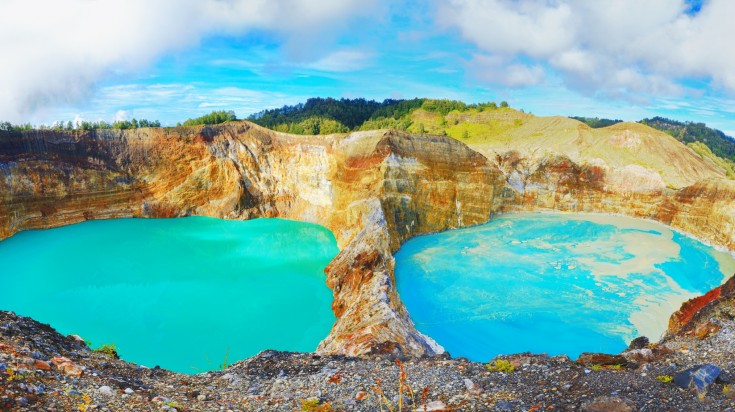
Close to Komodo and named after the Portuguese word for flowers, it’s no surprise that the beauty of Flores ’ flora and fauna has been on the tourist radar some time. But away from the mountains, lakes, and beaches that create its wondrous landscapes, the island is home to a number of different ethnic groups each with its own customs and traditions, making it an intriguing cultural destination too.
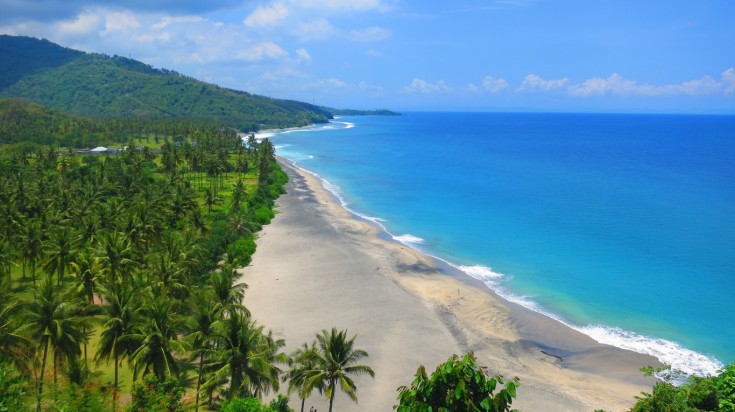
One of the ‘Thousand Islands’ in the Bay of Jakarta, the popularity of Seribu is largely due to its proximity to the capital, making it a great weekend getaway if you’re short of time. Surely one of the best islands in Indonesia for this reason alone, its closeness to Jakarta does nothing to take away from the island’s allure, with swimming, diving, sunbathing and snorkeling all on offer for those seeking out some much needed rest and relaxation.
13. Sumatra

It may be the largest of the Indonesian islands, but Sumatra has never received huge numbers of visitors. Now opening up to tourism, you can see the immense landscapes of tropical rainforest and protruding peaks for yourself by hiking in the jungles of Bukit Lawang and Tangkahan, while the volcanic lakes of Maninjau and Toba are also not to be missed, but for many, it’s the hunt for Sumatran orangutan that brings them to the island.

If hiking is your bag, you can do far worse than making for the Banda Islands, too. Popular treks include that to Gunung Api, around which the crescents of the two main islands, Neira and Banda Besar, miraculously curve. The highest peak in the archipelago is Banda Api that stands at an ominous 666 meters, it’s also an active volcano. At the top you can walk a loop of the rim in search of the steaming vents that dot the crater edge before returning to picture-perfect shore.
15. Mentawai

Reminding many who visit of Bali, the Mentawais are a group of more than 70 islands off the coast of Sumatra with a well-developed surf scene attracting those in the know from around the globe. A range of surf tournaments are held throughout the year, on what are regularly regarded as the best waves in South East Asia, while the island’s forests are home to a rare black and yellow monkey found nowhere else.
Those with culture in mind will love Bali and Flores, while if it’s adventure you’re after, look no further than Lombok, Sumatra or Banda. Sun-seekers will be happy to lounge on the beaches of Gili Trawangan or Seribu, and nature-lovers will fall head over heels for Komodo, Wai, Kakaban and Mentawai. For history, it has to be Ternate or Bangka-Belitung, while snorkelers should head to Bunaken or Wakatobi in particular. There’s perhaps nowhere quite as varied as the Indonesian islands, and our list of the best 15 is sure to inspire you whatever you look for in a holiday destination.
If you are looking for a guided tour on Indonesian Islands, check out this 22-day tour around the Islands of Indonesia .
Related Articles
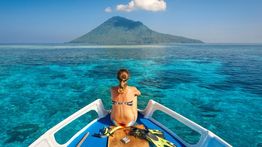
10 Indonesian Beaches That Are Amazing Year-Round
Indonesia is known for its beautiful scenery,... read more

12 Indonesian Foods You Must Try
Indonesia is a foodie heaven — yes, we’ve sai... read more
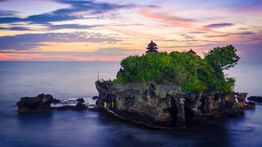
Best Places to Visit in Indonesia
Indonesia is a truly vast country. With an ar... read more

Top Tips for Visiting Komodo Island in 2021
Komodo Island in Indonesia is probably best k... read more
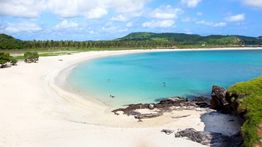
6 Breathtaking Beaches in Lombok
Walk into any crowd and mention Indonesia and... read more

10 Most Beautiful Waterfalls in Indonesia
Indonesia contains some of the world's most s... read more

10 Ways Travel can Improve Your Health and Happiness
You can share the above image on your site vi... read more
Related Categories
- Bali Travel Tips
- How Long To Stay In Indonesia
- Islands In Indonesia
- Treks And Hikes In Indonesia
- What To Do In Indonesia
- When To Visit Indonesia
- Where To Go To Indonesia
- Previous Post

- S Sofie Bookmundi Staff Feb 04 2019 Hi Nicole, I'm Sofie, thank you for reaching out to Bookmundi! If you are looking for a group tour in Indonesia, you can check out our Indonesia Tour Page to find a tour that suits you: https://www.bookmundi.com/indonesia Or, if you would like to plan a customized trip to Indonesia, please follow the link below to send a trip planner request and our Indonesia Travel Experts will get back to you! https://www.bookmundi.com/trip-planner?country=Indonesia#/grouptype
- V Virina Vinoth Jan 20 2019 REPLY Got my head spinning even more in deciding after reading this post - thanks for all the input!
Popular Destinations
- Europe Tours
- Everest Base Camp Trek
- Italy Tours
- Spain Tours
- Argentina Tours
- Canada Tours
- Sri Lanka Tours
- Chile Tours
- Antarctica Tours

Nomadic Matt's Travel Site
Travel Better, Cheaper, Longer
Gili Islands Travel Guide
Last Updated: August 23, 2023
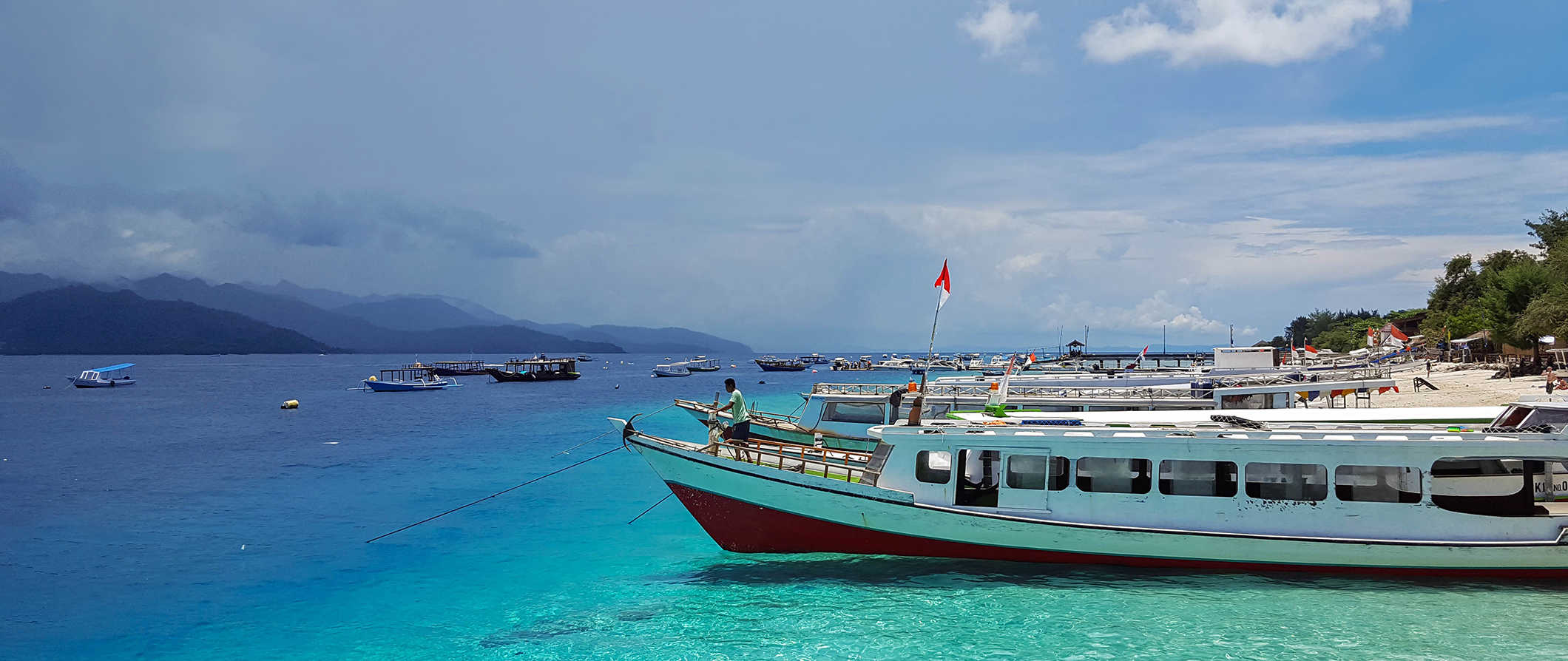
Though they are not as tranquil and cheap as they used to be, if you’re looking for a quiet alternative to Bali — with even better beaches and seafood — head to the Gilis. They offer incredible diving, stunning beaches, and plenty of opportunities for rest and relaxation. Not a lot happens here so if you’re looking for a chill beach spot away from the chaos of Bali, this is the place for you!
This guide to the Gilis can help you plan your visit, save money, and make the most of your time here.
Table of Contents
- Things to See and Do
- Typical Costs
- Suggested Budget
- Money-Saving Tips
- Where To Stay
- How to Get Around
- How to Stay Safe
- Best Places to Book Your Trip
- Related Blogs on the Gili Islands
Top 5 Things to See and Do in the Gili Islands

1. Lounge on the beaches
The Gili Islands have postcard-perfect beaches with white sand and clear, warm waters in a brilliant shade of turquoise. It’s really a beach paradise here. Some of the beaches, particularly on Gili T, have sun loungers for use by customers of the bar, restaurant, hotel, or dive shop or you can just rock up with a towel. Grab a book, pour a drink, and sit back and enjoy the view.
2. Go scuba diving
Lionfish, scorpion fish, cuttlefish, octopus, and different types of rays fill the waters around the islands. All three islands have lots of scuba diving training centers and, in my opinion, the diving here is better than Bali (it’s cheaper to learn here too). An Open Water certification costs around 5,900,000 IDR. A single tank dive with Trawangan Dive on Gili T costs 540,000 IDR but discounts are available for three dives or more and group bookings. All divers are required to pay a 100,000 IDR Marine Park fee and a Gili Eco Trust donation of 50,000 IDR.
3. Learn to surf
The southern tip of Gili T has the best surfing in the area, offering good waves all year round. If you want to stay at a surf camp, expect to pay around 5,000,000 IDR for a 6-day camp (this includes lessons, accommodation, breakfast, snorkeling, and other activities). A single surf lesson costs around 300,000 IDR.
4. Visit the sea turtles
Gili Trawangan and Gili Meno have hatcheries that lie right on the island’s big beaches, but you can also go snorkeling to see the turtles in their natural habitat. Take a tour or rent some snorkeling gear and ask your hotel/hostel staff for the best spots to see them. Remember never to touch the turtles you see, stay at least two meters away, and never use flash photography around them. In nesting season, Gili Eco Trust goes out before dawn each morning to mark the nests so they aren’t disturbed. Watch out for their flags and keep clear!
5. Bike the islands
These islands are so small, that it won’t take you long to tour each one by bike (Gili T is the largest and is still only 7 kilometers all the way around). Pack some snacks and beach gear and make an afternoon of it! If you have snorkeling gear you can jump in the sea at any time to see the beautiful island reefs that are just offshore. Bike rentals start at 40,000 IDR per day.
Other Things to See and Do in the Gili Islands
1. go snorkeling.
There are tons of places to snorkel around the islands. You can take a private boat if you are with a large enough group, rent snorkeling gear, or do an organized boat trip. A 4-hour snorkeling tour (with pickup) costs around 300,000 IDR per person. Renting the gear is quite cheap, usually costing just 25,000 IDR. Approach any of the little stalls on the beach as most of them have masks and fins just under the counter.
2. Party on Trawangan
Out of all the islands, Gili Trawangan is the party island (Gili Meno is the quietest). Party nights are regular and are rotated between the bars, which usually stay open until 4am. The famous Full Moon parties are held on the beach on the southern part of Trawangan with a DJ playing until sunrise. If your visit means you miss the full moon, Mad Monkey hostel has a foam party in the pool every Friday.
3. Try some water sports
There are tons of water sports to enjoy on the islands, such as parasailing, water-skiing, and wakeboarding (which all cost between 600,000-900,000 IDR. For something more relaxed, you can rent a paddleboard for 100,000 IDR.
4. Go kayaking
On the northern side of Trawangan, you can rent kayaks or take a guided tour of the island. On your trip, expect to encounter rays, turtles, and other wildlife. Karma Kayaks is a reputable place to rent them from. A guided day trip costs around 300,000 IDR per person. You can also rent clear bottom kayaks at Fly Gili Parasailing on Gili T.
6. Watch the sunset
Watching the sunset in Gili Trawangan is an unmissable experience. To enjoy the Gili T sunset, the most popular spots are to the southwest of Gili Trawangan, around Sunset Paradise Bar or Exile Gili Trawangan. But really you can get a great view anywhere along the west coast from the Mad Monkey hostel down. Many people head to these popular places to watch the sunset so get there early to find a good spot.
7. Eat at the night market
The Gili T night market opens every day at 6pm. Located in front of the main pier, there are stalls selling meat skewers, rice, vegetables, seafood, noodles, tofu, sate, grilled corn on the cob, and more. You can get a huge plate with meat skewers, rice, vegetables, and a dessert for as little as 30,000 IDR.
8. Enjoy live reggae music at Sama Sama
The Sama Sama Reggae Bar offers live reggae music every night. The vibe is relaxed, and dozens of budget travelers head there to chill out, get something to eat, chat with other travelers, and have a beer. (“Sama Sama” means “you’re welcome” in Indonesian.)
9. Attend an Indonesian cooking class
Attending an Indonesian cooking class is a fun way to learn something new during your time on the Gili Islands. The cooking classes teach you how to make classic Indonesian meals like Nasi Goreng (a fried rice dish) and Mie Goreng (a spicy noodle dish). They cost around 300,000-400,000 IDR per class and make for the perfect souvenir.
11. Go fishing
Spending a full day fishing is a relaxed way to enjoy the scenery around the islands while also catching your dinner. The locals teach you how to use worms as bait for luring fish and, if you’re lucky, you will actually catch your dinner. Your guide can show you how to prepare your catch at the end of the trip too. Expect to pay 1,200,000 IDR for two people for a fishing charter.
12. Attend a yoga class
There are daily yoga classes on all three islands (especially Gili Meno). It’s possible to attend a yoga class by yourself with a teacher or with a group class. A one-hour group class costs around 120,000 IDR. For an in-depth yoga experience, book a yoga multi-day retreat. Four-day passes start from 2,500,000 IDR.
12. Go horseback riding
There are several stables on all three islands offering horseback riding. You can opt for anything from a short beach ride to a full round-the-island ride. STUD Horse Riding and Rescue is the oldest on the island and one of the few places with a focus on animal welfare. Prices start at 300,000 IDR for a half-hour ride or 650,000 IDR for a round-the-island tour.
13. Join a beach clean-up
The amount of trash that washes up on the shores of Gili every day isn’t as bad as in Bali but it’s still significant. There are several organizations that run beach clean-ups including some hotels, hostels, and dive operators. Gili Eco Trust runs a one-hour beach clean-up called Debris Free Friday every week at 5pm on Gili T, followed by a free Bintang beer. Check their website or Facebook page for meet-up details.
For more information on other destinations in Indonesia, check out these guides:
- Bali Travel Guide
The Gili Islands Travel Costs
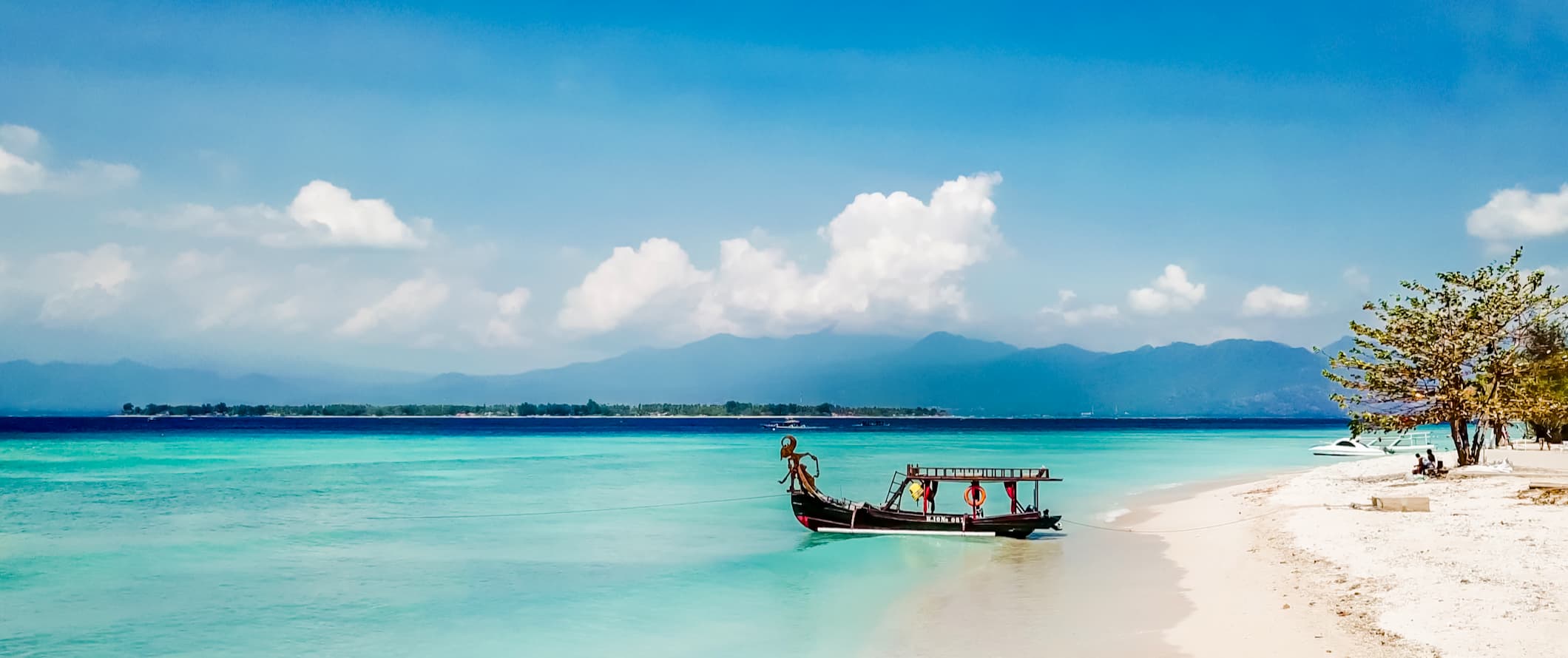
Hostel prices – A bed in a dorm room with 3-6 beds starts at around 65,000 IDR per night, though more commonly they cost 100,000 IDR or more. A private room costs 150,000-300,000 IDR. Most hostels have Wi-Fi, hot water for showers, and AC — but not all do so be sure to check before you book.
Budget hotel prices – For a double room with a private bathroom, AC, Wi-Fi, and free breakfast expect to pay at least 300,000-500,000 IDR per night.
Airbnb is available throughout the islands. Private rooms start at around 400,000 IDR per night while you can expect to pay at least 600,000 IDR for an entire home or apartment, although prices can be as high as 2,000,000 IDR. Book early to find the best deals.
Food – Food in Indonesia is heavily influenced by a number of cultures, most notably Chinese, Indian and Malay cultures. Lots of dishes have a rice (nasi) or noodle (mie) base and, in some cases, that’s the whole dish, such as with nasi ayam (chicken rice). Be sure to try the Balinese take on satay (where the meat is minced and wrapped on skewers) and babi guling , a delicious suckling pig that is roasted for hours. Another popular choice is oxtail soup. Be mindful that the food here can be a little spicy.
Most meals cost between 30,000-75,000 IDR. This includes local favorites like nasi goreng (stir-fried rice with chicken, egg, and vegetables) and mie goreng (spicy fried noodle dish with garlic, onion, meat, egg, and vegetables). For the cheapest food, shop at the markets like the night market mentioned above.
Meals at mid-range restaurants cost around 175,000 IDR. A seafood dinner costs around 135,000 IDR.
In mid-range restaurants, you can often find Western food (pasta, pizza, salad, etc.) but it’s usually not great. Avoid it and save your money by eating Indonesian food and fresh caught seafood.
If you eat at any more luxurious hotels or restaurants, keep your eyes open for hidden taxes. They are usually between 5-25% and are not explicitly mentioned before the bill comes.
A beer costs around 45,000 IDR. Expect to pay 17,000 IDR for a bottle of water.
A week’s worth of groceries costs between 500,000-700,000 IDR for things like veggies, fruit, bread, and other staples. Where possible, stick to local food items, as imported foods like wine, cheese, chicken, and beef are super expensive and buying them often ruins your budget.
The Gili Islands Suggested Budgets
If you’re backpacking the Gili Islands, my suggested budget is 400,000 IDR per day. This assumes you’re staying in a hostel dorm, eating cheap street food, walking everywhere, limiting your drinking, and doing mostly free activities like swimming and enjoying the beaches.
On a mid-range budget of 1,500,000 IDR per day, you can stay in an Airbnb, eat out all your meals, rent a bicycle, enjoy a few drinks, and do a few paid activities like kayaking or diving.
On a “luxury” budget of about 2,350,000 IDR or more per day, you can stay in a hotel, get any food you want, and enjoy all the attractions the islands have to offer, including private tours and diving classes/excursions. This is just the ground floor dor luxury though. The sky’s the limit!
You can use the chart below to get some idea of how much you need to budget daily, depending on your travel style. Keep in mind these are daily averages — some days you’ll spend more, some days you’ll spend less (you might spend less every day). We just want to give you a general idea of how to make your budget. Prices are in IDR.
The Gili Islands Travel Guide: Money-Saving Tips
The Gili Islands are a lot cheaper than other parts of Indonesia. You won’t spend too much simply because there’s not a lot to do (unless you scuba dive which will be expensive). If you’re looking to save money while visiting, here are some tips and tricks that help:
- Rent a bike – Rent a bike for as little as 40,000 IDR per day. It’s is a budget-friendly way to get around.
- Eat at street stalls – There’s a wealth of stalls selling delicious food for around 13,000-21,000 IDR. Eat here instead of the more expensive western restaurants and really get a sense of the local culture.
- Bargain hard – Nothing is ever at face value in Indonesia. Bargain with sellers as most of the time the price they’ve quoted isn’t the price you pay if you haggle!
- Bring a filtered water bottle – Indonesia has a waste problem, and much of it gets burned. You’ll see (and smell) it during your visit. Bring a reusable water bottle with a filter to save money — and the environment. I like Lifestraw as it has a built-in filter to ensure your water is always clean and safe.
Where to Stay in the Gili Islands
To help you find a fun and affordable place to stay, here are my recommended hostels in the Gili Islands:
- M Box (Gili Trawangan)
- My Mate’s Place (Gili Trawangan)
- The Rabbit Tree Hostel (Gili Meno)
- Begadang (Gili Air)
How to Get Around the Gili Islands
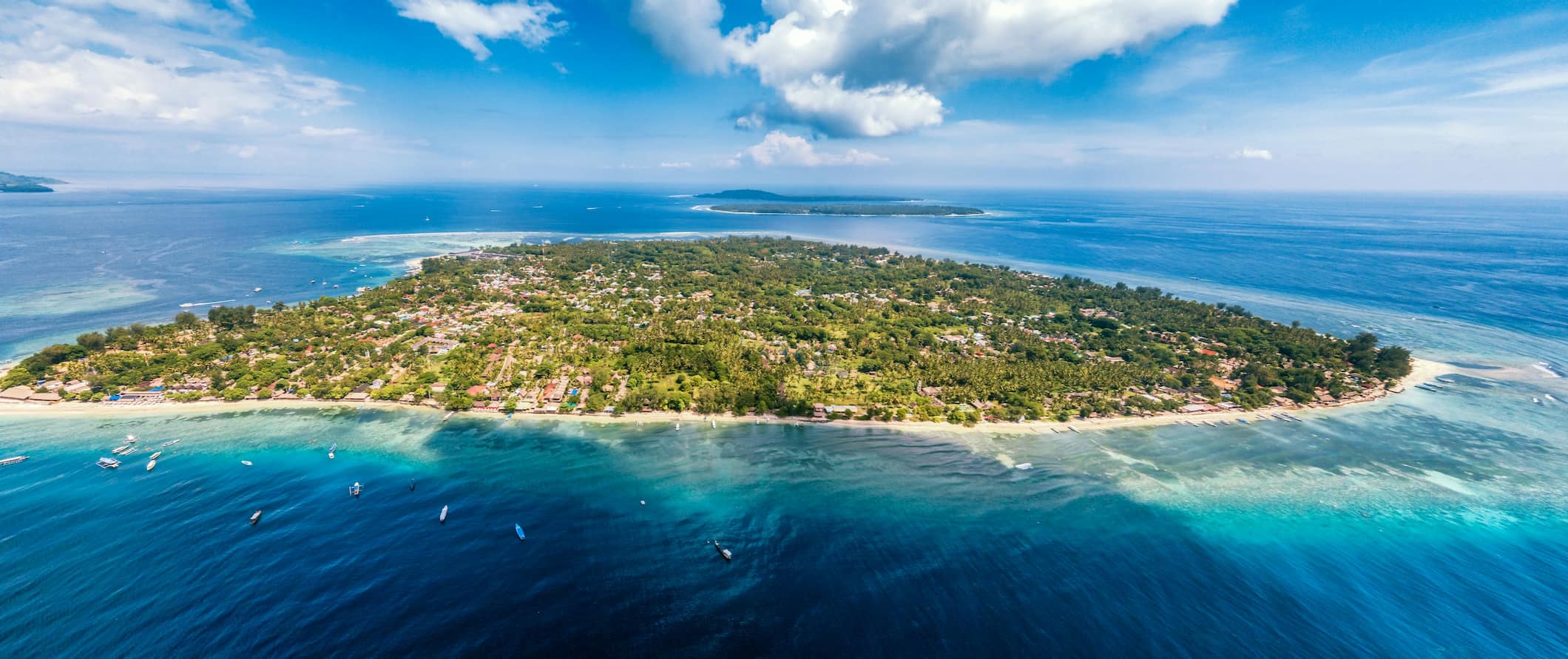
On foot – The Gili Islands are quite small and you can easily get around by foot. In fact, it only takes about two hours to walk around each island.
Bicycle – Like walking, cycling is an easy way to get around each island. Bike rentals start at 40,000 IDR per day.
Horse carts – There are numerous horse carts ( cidomos ) providing transport around the island. Historically, using them has been controversial as the horses have been treated poorly. These days improvements have been made thanks to educational work done by organizations such as Horses of Gili, Gili Eco Trust, Dental Vet, Animal Aid Abroad, and Jakarta Animal Aid Network — but the situation is still far from ideal.
If you can avoid using them, do so. If you must ride them, limit the load to two people plus baggage, check the condition of the horse before agreeing to the ride, and offer to give the driver fresh water for the horse.
Ferry – To get between islands, the boat leaves Gili Trawangan twice per day, at 9:30am and 4pm. It first stops at Gili Meno, then Gili Air, before heading back to Gili Trawangan. The one-way ride is about 50,000 IDR. It’s also possible to charter a private boat, which costs about 200,000 IDR one-way.
For the ferry back to Bali or Lombok, you need to use your negotiation skills and prices have increased recently. You can expect to pay anything from 300,000-600,000 IDR (one-way). When paying, the seller is going to ask where you want to go: either Lombok, Kuta, Ubud or the Bali airport. If you arrive to the Gili Islands from Bali, it’s possible to pay a return trip. It’s an open return ticket, meaning you can go back to Bali from the Gili Islands when you want to.
All boats returning to Bali have to call through Lombok and many don’t (or can’t) pick up passengers in Gili meaning you have to get a small boat to Bangsal and then transfer on to the bigger boat.
When to Go to the Gili Islands
The peak seasons for visiting the Gili Islands are between July-August and December-January. This is when the Gili Islands experience a huge influx of visitors. Prices can increase significantly during this time and you won’t get to enjoy crowd-free beaches. If you’re visiting during this time, book your accommodation in advance.
For fewer crowds, visit between September-November. It won’t rain much since it’s the shoulder season.
The dry season lasts from May-October, while the monsoon season starts in November and goes until April. During the dry season, temperatures range from 22-34°C (71-93°F). Expect regular rains during the monsoon season, though they are usually short (but heavy). The rainy season is the least-busy time of year as well. The days are still sunny though the nights are a bit cooler.
How to Stay Safe in the Gili Islands
The Gili Islands are a relatively safe place to visit. You won’t face constant scams or pick-pocketing here. That said, it’s always a good idea to keep your wits about you and make sure your valuables are secure and out of reach at all times.
There are a lot of drugs on the islands, particularly on Gili Trawangan. Keep in mind Indonesia is a very strict country when it comes to selling, possessing, and consuming drugs. I don’t recommend doing them because if you get caught you’re going to end up in jail.
Doing water sports is fun and relaxing, but at times there are strong currents between the islands — especially in the northeast. Don’t underestimate their power. If you’re not a great swimmer, avoid snorkeling alone, check all your gear to make sure it’s in good condition, and ask about the currents before you get in the water.
Solo female travelers should generally feel safe here, however, the standard precautions apply (never leave your drink unattended at the bar, never walk home alone intoxicated, etc.). Specific solo female travel blogs on the islands can give you more specific tips.
If you experience an emergency, dial 112 for assistance.
The most important piece of advice I can offer is to purchase good travel insurance. Travel insurance protects you against illness, injury, theft, and cancellations. It’s comprehensive protection in case anything goes wrong. I never go on a trip without it as I’ve had to use it many times in the past. You can use the widget below to find the policy right for you:
Gili Islands Travel Guide: The Best Booking Resources
These are my favorite companies to use when I travel. They consistently have the best deals, offer world-class customer service and great value, and overall, are better than their competitors. They are the companies I use the most and are always the starting point in my search for travel deals.
- Skyscanner – Skyscanner is my favorite flight search engine. They search small websites and budget airlines that larger search sites tend to miss. They are hands down the number one place to start.
- Hostelworld – This is the best hostel accommodation site out there with the largest inventory, best search interface, and widest availability.
- Agoda – Other than Hostelworld, Agoda is the best hotel accommodation site for Asia.
- Booking.com – The best all around booking site that constantly provides the cheapest and lowest rates. They have the widest selection of budget accommodation. In all my tests, they’ve always had the cheapest rates out of all the booking websites.
- Get Your Guide – Get Your Guide is a huge online marketplace for tours and excursions. They have tons of tour options available in cities all around the world, including everything from cooking classes, walking tours, street art lessons, and more!
- SafetyWing – Safety Wing offers convenient and affordable plans tailored to digital nomads and long-term travelers. They have cheap monthly plans, great customer service, and an easy-to-use claims process that makes it perfect for those on the road.
- LifeStraw – My go-to company for reusable water bottles with built-in filters so you can ensure your drinking water is always clean and safe.
- Unbound Merino – They make lightweight, durable, easy-to-clean travel clothing.
Gili Islands Travel Guide: Related Articles
Want more info? Check out all the articles I’ve written on Indonesia and the Gili Islands travel and continue planning your trip:
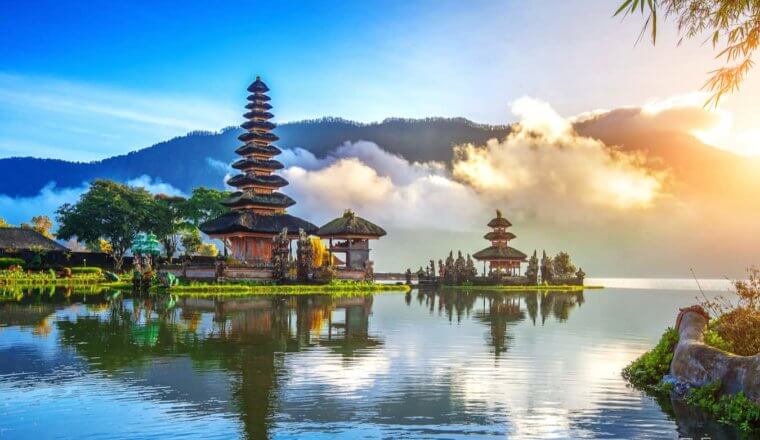
The 6 Best Hostels in Bali

Is Southeast Asia Safe for Travelers?
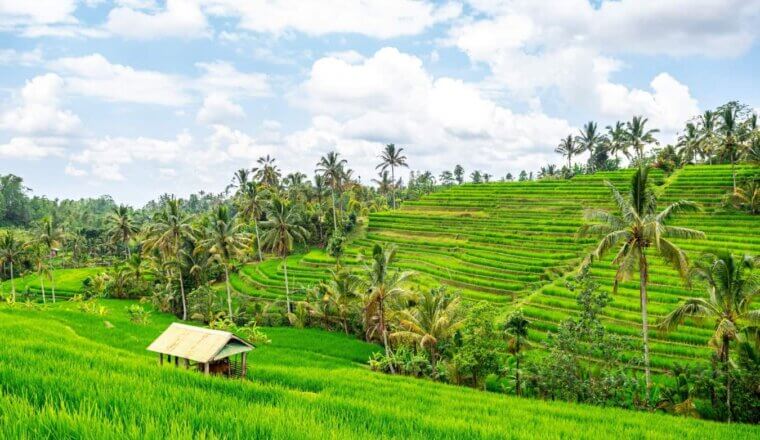
A Visitor’s Guide to the Jatiluwih Rice Terraces
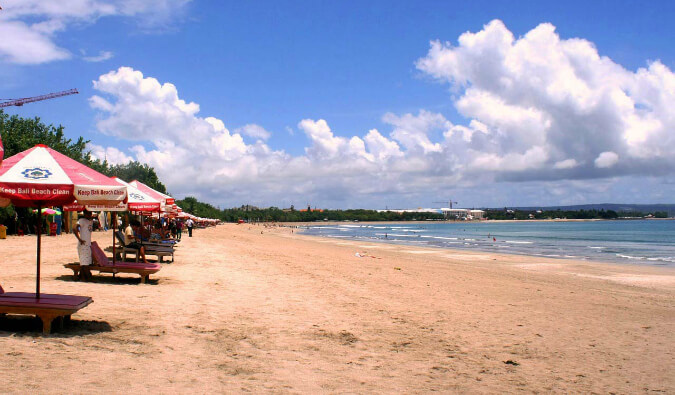
Kuta Beach: The Worst Place in Bali

How to Visit Borobudur in Indonesia
Get my best stuff sent straight to you, pin it on pinterest.
- Transportation
- Booking Resources
- Related Blogs
- The Ultimate Travel Guide To...
The Ultimate Travel Guide to Indonesia's Gili Islands

“The turtle capital of the world”, “party islands” and even the “Maldives of Southeast Asia” – these are just some of the honorary names travellers use to describe Indonesia’s Gili Islands. Here is Culture Trip’s ultimate travel guide to this exceptional slice of paradise.
The Gili Islands — Gili Trawangan, Gili Meno, and Gili Air — have many things in common: idyllic beaches, exotic marine species roaming the crystal clear water, and a laid-back beach vibe that makes you want to drink a cocktail out of a coconut. Each island has its own unique characteristics that give travellers a well-rounded experience, involving everything from partying on a boat to a mindful afternoon doing aqua yoga. This ultimate travel guide to the Gili Islands will reveal everything you need to know to get the best out of this amazing archipelago.
Know your Gili
In local Sasak language, Gili means “small islands”. There are other gilis around mainland Lombok, but the Gili Islands usually refer to these three sister islands: Gili Trawangan, Gili Meno and Gili Air.
Once a popular destination for partying backpackers, the Gili Islands are still a much-beloved part of the famed Banana Pancake Trail . Throughout the years however, a wide range of new experiences have entered the mixture previously saturated by budget homestays and cheap bars. Stretches of sand are now dotted with romantic luxury villas, while in other places you’ll find rugged jungly trails home to thriving wildlife.
Gili Trawangan The biggest and most developed of the Gili Islands, Gili Trawangan (or Gili T), is both a vibrant party island and laid-back tropical getaway, alluring an exciting mix of crowds to its shores. This island knows how to throw parties that rave on well until early morning, when the baton is passed on to dive instructors, market vendors and café owners.
Gili Meno Sandwiched between two other islands, Gili Meno is the smallest and least developed of the trio. This makes it a favourite destination for honeymooning, conservation and wildlife spotting, where you can trail along the white-sand beaches with hardly another soul in sight. Gili Meno also houses the turtle sanctuary that in turn has bestowed a thriving population of sea turtles to keep divers company.

Gili Air Decades before this small island emerged as a hip tourist destination, Gili Air used to be the main attraction of the Gilis, with impressive natural features described like legends in many a backpacker bar. Until now, a large population of locals still reside on this island, while Gili Trawangan is mostly bustling with foreign tourists. This is where you’ll find the most authentic villages and traditional huts, which also sell locally produced goods and crafts. Gili Air is also for the adventurous at heart, offering avant-garde attractions like subwinging, kitesurfing, aqua yoga, SUP yoga and more.
How to get there
Getting to the Gili Islands is easy from either Bali or Lombok. From Bali, travellers can catch a fast boat at Sanur Beach or Serangan Harbour. The trip takes less than one hour from either point and return tickets cost about $105 USD per person. A cheaper route would involve a ferry transfer to Lombok (costs about $5 USD per person) followed by a road trip to one of the harbours at the northwestern tip of the island.

There are three main departure points from Lombok: Teluk Kodek and Teluk Nare offer premium services like private speed boats, while Bangsal provides a much cheaper alternative with public traditional boats that charge less than $2 USD for one trip to the Gili of your choice.
What to pack
Don’t forget to pack the essentials for an island getaway: swimwear, light breathable clothes, flip-flops, sunscreen, sun hat and sunglasses. A simple sarong is your best friend ladies (and gents) and can do many tricks during your travels to Gili Islands: you can spread the fabric on the sand as a layer for sunbathing, then use it later to cover up when walking through local villages.
Make sure to pack personal medicine or shop for it in Bali, as there is not a single hospital in the Gili Islands; just a few small clinics. Some smaller, cheaper accommodations in the Gili Islands use salt water for sinks and showers, so feel free to bring dry shampoo or shop for brands you trust in Bali for skincare and other personal hygiene needs.
Getting around
There is not one single motor vehicle in the entire Gili Islands – trust us, it’s a good thing. Most tourists rent their own bicycle to get around the small islands or simply hail a horse cart (or cidomo, as locals call it). It takes less than two hours to walk around Gili Trawangan, the biggest of the three Gilis.

Travelling between the three islands is also very convenient. There is a fixed schedule for public boats, charging less than $2 USD to get from one island to another. Chartered boats are also available for a more expensive fee.
Where to go
Ocean swings The Gili ocean swings have become a big craze on social media, and you don’t want to go home without a snap. It’s a remarkable experience too: toes-dipped, bodies swaying playfully, all the while overlooking the clear blue ocean. You may stumble upon several of these contraptions when circling the islands, but be sure to stop by Ombak Sunset Resort in Gili Trawangan for the original swings that started the trend. Other spots also include a gorgeous ocean hammock along with the swings.
1. Gili Meno Turtle Sanctuary
Natural Feature

The renowned ‘turtle capital of the world’ owes much of its thriving sea turtle population to this conservation centre. Gili Meno turtle sanctuary works to help hatch turtle eggs in a safe environment and nurture newborns before releasing them into the ocean. Tourists are welcome to observe and learn about these adorable little creatures, and even get involved with their care.
2. Sama-Sama Reggae Bar Gili Trawangan
Bar, South American, American, European, Indonesian
Reggae and summertime vibes are a sublime combo you can expect from this bar in Gili Trawangan. Factor in some of their invigorating cocktails or beers and you’ve got yourself a truly remarkable island getaway. Needless to say, this bar is one of the island’s must-visits for travellers looking to taste Gili Trawangan’s notorious nightlife.
Boat Parties If you’re here for the party you might as well push the boat out – quite literally. Most Gili party boats set sail in the afternoon, giving partyheads ample time to kick back, mingle, or go ‘man overboard’ before the rave starts well into the night.
3. Shark Point

The name of this popular diving spot is pretty self-explanatory, but sharks are certainly not the only intriguing marine creatures to await divers in the deep. Colourful corals, ribbon eels and manta rays are among the denizens of this spot off the north coast of Gili Trawangan.
Deep Turbo More seasoned divers can try their luck spotting glorious stingrays and barracudas at Deep Turbo. The sandy seafloor is home to thousands of garden eels, and divers can explore the little caves scattered around the area.
4. Trawangan Night Market

It’s not an island getaway without a seafood feast. Trawangan Night Market serves various fresh seafood dishes with a local touch. This beachside local food fest is an excellent spot to enjoy grilled fish with spicy local sambal or seafood satay, best washed down with Bintang beer or young coconut water.
5. Gili Meno Salt Lake

Located on the peaceful western side of Gili Meno, the salt lake is arguably one of the busiest areas on the entire island and not with tourists. The remarkable ecosystem in this spot includes anything from monitor lizards to glorious migratory birds. It’s certainly a pleasant change of scenery after days on the beach.
Things to note:
Unlike anywhere else in Indonesia, drugs are readily available and sold like it’s no big deal, especially in Gili Trawangan. Be advised that consumption, possession and distribution of drugs are serious criminal offences in this country. Police raids are a rare occasion, but they do happen. There have been cases of methanol poisoning from locally-made alcohol beverages. To stay on the safe side, stick to the brands you already know when it comes to alcohol. Unlike the Hindu-majority Bali, the locals in Gilis and Lombok are predominantly Muslim. That means the most devout of them don’t drink alcohol, eat pork, nor appreciate when ladies sunbathe topless.
Keep all of this in mind, travel responsibly and enjoy the tropical paradise that is the Gili Islands.
Since you are here, we would like to share our vision for the future of travel - and the direction Culture Trip is moving in.
Culture Trip launched in 2011 with a simple yet passionate mission: to inspire people to go beyond their boundaries and experience what makes a place, its people and its culture special and meaningful — and this is still in our DNA today. We are proud that, for more than a decade, millions like you have trusted our award-winning recommendations by people who deeply understand what makes certain places and communities so special.
Increasingly we believe the world needs more meaningful, real-life connections between curious travellers keen to explore the world in a more responsible way. That is why we have intensively curated a collection of premium small-group trips as an invitation to meet and connect with new, like-minded people for once-in-a-lifetime experiences in three categories: Culture Trips, Rail Trips and Private Trips. Our Trips are suitable for both solo travelers, couples and friends who want to explore the world together.
Culture Trips are deeply immersive 5 to 16 days itineraries, that combine authentic local experiences, exciting activities and 4-5* accommodation to look forward to at the end of each day. Our Rail Trips are our most planet-friendly itineraries that invite you to take the scenic route, relax whilst getting under the skin of a destination. Our Private Trips are fully tailored itineraries, curated by our Travel Experts specifically for you, your friends or your family.
We know that many of you worry about the environmental impact of travel and are looking for ways of expanding horizons in ways that do minimal harm - and may even bring benefits. We are committed to go as far as possible in curating our trips with care for the planet. That is why all of our trips are flightless in destination, fully carbon offset - and we have ambitious plans to be net zero in the very near future.

See & Do
15 must-visit attractions on the gili islands, indonesia.

Places to Stay
The best hotels in the gili islands, indonesia.

The Top 15 Things to Do in Indonesia's Gili Islands
Culture trip spring sale, save up to $1,100 on our unique small-group trips limited spots..

- Post ID: 1000360541
- Sponsored? No
- View Payload

ULTIMATE INDONESIA TRAVEL GUIDE: STEP-BY-STEP ITINERARY PLAN
WHAT TO SEE IN INDONESIA? BEST ISLANDS TO VISIT IN INDONESIA? BEST TRAVEL PLAN FOR INDONESIA?
Indonesia is home to more than 18,000 islands and 270 millions people. It’s no surprise that it’s a popular destination among tourists due to the cheap local food and affordable accommodation.
Planning a trip to Indonesia is already challenging enough since you have to choose which islands to visit, how to get there, when is the best time to visit it, etc.
To help you prepare for the journey of your lifetime, we’ve put together a brief travel guide that highlights all you need to know to travel to Indonesia.
1. Determine Your Itinerary
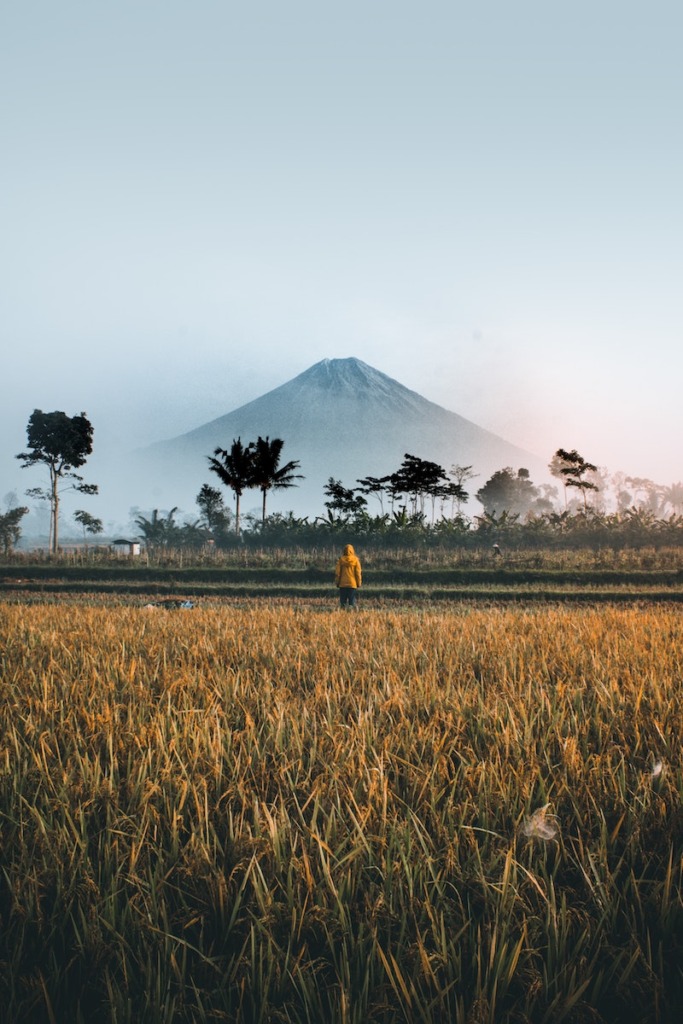
To start with, you can find unique itineraries here and explore Indonesia at its finest by booking an Indonesia cruise. This kind of cruise is best for anyone who wants to explore distant destinations and enjoy the diversity of cultures, traditions, and customs.
Plus, you will have the itinerary planned from day one. If you are visiting Indonesia for the first time, this could best way to start! It will avoid the headache of all the planning and preparations.
2. Choose Which Islands To Visit
Carefully select what you want to see during your trip to Indonesia. It’s important to determine in advance which islands you will visit and how you will get there. Here are several suggestions from our side:

Bali is best known for its beautiful Hindu temples , rice terraces, and traditional arts. It’s a popular destination among tourists due to the breathtaking beaches and authentic temple art. If you want to experience Bali at its best, we recommend visiting Lovina, an area filled with small fishing villages and green rice terraces.
READ: 10 MOST INCREDIBLE HOTELS IN BALI
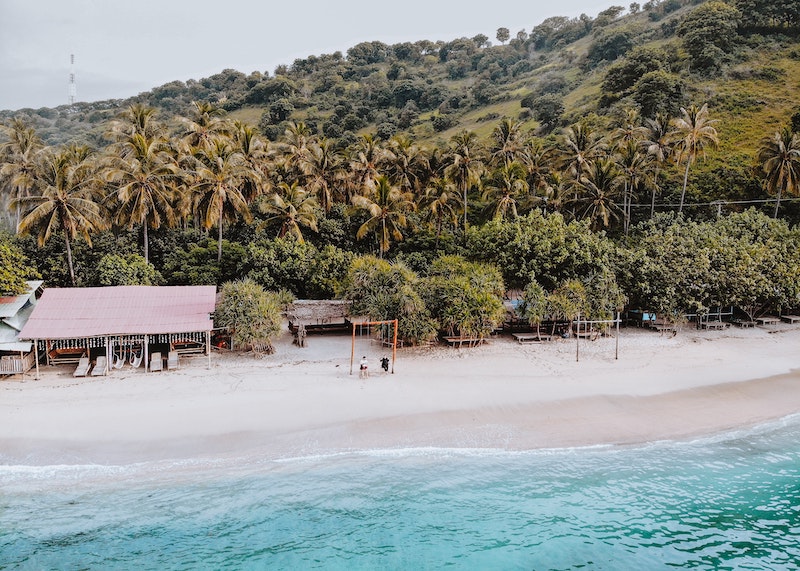
Lombok is an island located close to Bali in Indonesia. This island is ideal for those looking to escape the crowds and immerse themselves in the local culture while enjoying the beautiful beaches. Indeed the island attracts less tourists than Bali, so you will have more chances to have some beautiful places all for yourself!
READ: 18 INCREDIBLE THINGS TO SEE IN LOMBOK

Sumatra is one of the less-visited islands in Indonesia and undoubtedly one of the best. It’s known for its volcanic lakes, wild jungles, and orang-utans. In Sumatra you will witness the beauty of the exotic wildlife and untamed jungle life.
Along the shores of Toba and Mininjau, you can take a short hike or visit the neighboring island of Java.
Komodo Islands

Komodo Islands are the home of the legendary K omodo Dragons , incredible creatures that are direct descendants of the dinosaurs and the closest visually similar to them.
These islands are also known for their snorkeling and scuba diving spots, as well for their marine biodiversity.
3. Consider Options That Fit Your Budget

The next step is to determine your budget and check whether the options you had in mind will fit your budget.
First of all, you need to search for the most affordable flight options and have in mind the average price. We recommend to check the cheapest options here .
4. Learn More About Indonesia

Since you will be visiting an exotic and distant country, it’s recommended that you learn more about their customs and have an idea of the closest cities, bus lines, currency, food, and visa requirements.
To make your experience more enjoyable, you can even learn some Indonesian phrases.
And regarding the health requirements, always carry wet wipes and antibacterial hand washes with you, use sun protection regularly, drink plenty of water and take insect repellent with you.
5. Check The Safety Measures

Indonesia is relatively safe, so you can travel freely without worrying about your safety and whereabouts.
However, be aware of pickpocketing and street crime , especially in busy areas.
6. Travel Essentials

Before you embark on an Indonesian adventure, there are a few things to know.
First of all, you might need a visa to visit Indonesia, so make sure you check the requirements.
Take enough cash with you because some places might not accept cards. Bring pocket wifi or buy an eSim card since you might not always have a reliable internet connection in public spaces. You can buy very cheap eSim card here .
Make sure to pack plug types C and F adapters, or consider a universal travel adapter as a substitute.
Last but not least, purchase travel insurance to ensure your belongings are safe.
Are You Ready?
Now the main question is – Are you ready to make your trip the adventure of a lifetime?
Hopefully, we’ve helped you plan your trip a bit better. And if you are still not sure whether you want to visit Indonesia, keep researching all the amazing things you can see in this wonderful country. The above video will give you a glimpse of what to expect during a trip to Indonesia.
We are Hammer and Guillaume, a fun couple traveling the world. We will take you to some of the most amazing places on earth. Hammer is a yoga instructor and Guillaume a true water baby, enjoying all kinds of water sports. Follow-us to get the latest update about our travels.
Similar Posts

CAMELLIA HILL IN JEJU – COMPLETE GUIDE
Camellia Hill located in Jeju, is a gorgeous park spread over 199,000m². Camellia Hill is home to 6,000 camellias. A must-see in Jeju!
![travel between indonesian islands DISCOVER THE CLAN JETTIES IN PENANG [MALAYSIA GUIDE]](https://afuncouple.com/wp-content/uploads/2023/05/Clan-Jetties-in-Penang_Malaysia-2-768x512.webp)
DISCOVER THE CLAN JETTIES IN PENANG [MALAYSIA GUIDE]
The Clan Jetties are one of the best things to see in George Town, Penang (Malaysia)! Here is a full guide to help you prepare your visit!
![travel between indonesian islands 25 BEST BEACHES IN SOUTH KOREA [FULL GUIDE]](https://afuncouple.com/wp-content/uploads/2021/07/Best-beaches-in-South-Korea-768x508.jpg)
25 BEST BEACHES IN SOUTH KOREA [FULL GUIDE]
Discover the 25 best beaches in South Korea from Busan to the south, Yangyang to the East, and Taean to the East!

FULL GUIDE TO UDAWALAWE IN SRI LANKA
Udawalawe National Park, is one of the best places to go on a safari in Sri Lanka! You are guaranteed to see many elephants! Full guide here.

10 MOST INCREDIBLE HOTELS IN BALI YOU SHOULD CHECK!
Bali is one of the best destinations in the world full of incredible hotels! In this post we curated the 10 best and most unique hotels in Bali
![travel between indonesian islands VISIT KLCC PARK, THE BEST PARK IN KUALA LUMPUR [MALAYSIA GUIDE]](https://afuncouple.com/wp-content/uploads/2023/05/KLCC-Park-in-Kuala-Lumpur_Malaysia-4-768x576.webp)
VISIT KLCC PARK, THE BEST PARK IN KUALA LUMPUR [MALAYSIA GUIDE]
KLCC park boasts a beautifully designed landscape that seamlessly blends lush greenery, water features, and modern architecture.
Leave a Reply Cancel reply
Your email address will not be published. Required fields are marked *
24 Best Things To Do In Indonesia
Indonesia is a wild and wonderful country of 17,000 islands, and many of the best things to do in Indonesia are off the beaten path.
Everyone goes to Bali , which is an amazing island (don’t get me wrong!), but it’s been suffering from overtourism and overdevelopment for years.
If you branch out to the other islands in Indonesia , you can see smoking volcanoes, sulfur lakes, pink sand beaches , tropical rainforests, exotic wildlife, and so much more.
Since Indonesia is my second home (and my wife’s actual home!), we’ve been privileged to do a bunch of exploring in this beautiful country, including some of the most far flung Indonesian islands.
Without further ado, here is our list of some of the best things to do in Indonesia!
Table of Contents show Best Things To Do In Indonesia 1. Get In Nature 2. Climb The Volcanoes 3. Visit The Waterfalls 4. Watch The Wildlife 5. See The Volcanic Lakes 6. Explore A Cave 7. Go Diving & Snorkeling 8. Relax On The Beaches 9. Visit A Lighthouse 10. Stroll The Terraces 11. Trek A Rainforest 12. Go Island Hopping 13. Walk On A Sandbar 14. Get Lost In Paradise 15. Meet The Locals 16. Experience The Cultures 17. Visit The Landmarks 18. Tour The Temples 19. Enjoy Indonesian Food 20. Shop For Souvenirs 21. Wear The Local Dress 22. Watch The Sunrise 23. Watch The Sunset 24. Find The Hidden Gems More Things To Do In Indonesia When Is The Best Time To Visit?
Best Things To Do In Indonesia
1. get in nature.
Indonesia is one of those countries where if you’re not exploring the outdoors, you’re doing it wrong.
Don’t waste any time in the cities, just get in nature as soon as possible! Of course you have the islands and beaches, but there are also all kinds of other scenery in Indonesia too.
From Sumatra to Papua, you can find a wide variety of lakes, mountains, rainforests, giant boulders, sand dunes, and more.
Indonesia has some colorful blue lakes that are absolutely stunning. These include the Paisu Pok Lake in Banggai Sulawesi, Labuan Cermin in Kalimantan, and the smaller Danau Kaco in Sumatra.

Lake Toba is the biggest volcanic lake in the world

The giant granite boulders of Belitung
2. Climb The Volcanoes
Indonesia has 400 volcanoes, and up to 130 of them are active — more than any other country in the world.
Most of the volcanoes in Indonesia are open to tourists for hiking, and at some of them (like Mount Bromo in Java) you can even walk up to the edge of the smoking crater!
This is hands down one of the best things to do in Indonesia! In Bali, the most popular volcano to hike is Mount Batur for sunrise, or if you really want a challenge you can climb Mount Agung .
Two other amazing volcano hikes elsewhere in Indonesia are Mount Rinjani in Lombok and Mount Dukono in Maluku, although both of these can be pretty challenging.
Read More: Best Hikes In Indonesia

Mount Bromo in Java

The smoking Bromo crater
3. Visit The Waterfalls
Pretty much every island in Indonesia has at least a few stunning waterfalls if you do a bit of exploring.
A lot of the best waterfalls in Indonesia are located in Sumatra and Java, but even the smaller islands like Bali and Lombok have some great ones too.
A great place to chase waterfalls in Indonesia is at the Ciletuh Geopark in West Java, which is a UNESCO-designated geopark loaded with nice waterfalls. It’s reachable by driving a half day from Jakarta, and there are some nice places to stay near the waterfalls.
One of the tallest falls in Indonesia is the Ponot Waterfall in North Sumatra, which is a giant 3-step waterfall near the famous Lake Toba, and it has a height of more than 250 meters (820 feet)!
Read More: Best Waterfalls In Indonesia

Curug Cimarinjung Waterfall in West Java

Sipiso Piso Waterfall is one of the most famous in Sumatra
4. Watch The Wildlife
Indonesia has almost 20 percent of the world’s animal species, so there’s a lot of endemic wildlife to see here that can’t be found anywhere else.
You can watch the world’s biggest lizards on Komodo Island , bug-eyed tarsiers at the Tangkoko Reserve in Sulawesi, wild orangutans at Bukit Lawang in Sumatra, and of course the famous macaques at the Ubud Monkey Forest in Bali.
Wildlife watching is definitely one of the best things to do in Indonesia!

The Komodo island is the only place in the world where you can see wild Komodo dragons

A little bug eyed Tarsier in Siau Island , Sulawesi

Orangutan viewing at Bukit Lawang is a highlight of Sumatra
5. See The Volcanic Lakes
Where you have volcanoes, you also have plenty of volcanic lakes and hot springs!
Some of the hot springs are suitable for swimming, and others make for fantastic photos. The most famous volcanic lake in Indonesia is probably the Kawah Ijen crater in East Java, which is pretty close to Bali.
Two other great spots to check out are Kawah Putih in West Java, and the three lakes of Mount Kelimutu in Flores.

Kawah Putih is a surreal and exotic looking lake in West Java

Masked up at the Kawah Ijen crater lake in East Java.

Kelimutu National Park in Flores has no less than three volcanic lakes!
6. Explore A Cave
Limestone mountains are common in many parts of Indonesia, so that means there are lots of spectacular caves too.
You can explore a sparkling limestone cave at Rammang Rammang in Sulawesi, or swim in a blue pool at the Rangko Cave in Flores. Meanwhile in Tana Toraja , caves of this sort are still being used as ceremonial tombs today.
One of the prehistoric caves in Sulawesi even has the world’s oldest known cave art made by humans, which we found completely fascinating!

Goa Rangko Cave in Flores

Fireflies Cave in Sulawesi
7. Go Diving & Snorkeling
Indonesia is part of the Coral Triangle, a tropical ocean wonderland with most of the world’s coral and fish species.
Needless to say, it’s a great place to go diving or snorkeling, and you can see all kinds of rare fish, colorful corals, sea turtles, manta rays, and if you’re lucky you may even get to swim with a whale shark!
We’ve had great success snorkeling in pretty much every part of Indonesia, but our top pick would probably be Belitung island in south Sumatra.

Snorkeling in Belitung

Fish and coral in Indonesia are some of the best
8. Relax On The Beaches
When people think of nice beaches in Asia, they think Maldives or Thailand , not Indonesia.
Indonesia beaches are fantastic, but they tend to be underrated because a lot of the really good ones are hiding in remote places without easy access. On the bright side, that means you’re more likely to have them to yourself!
With some exploring, what you’ll find are the most amazing white sand beaches, dazzling pink beaches , and black volcanic beaches, along with top quality surf spots, and occasionally some very photogenic cliffs, boulders, and shipwrecks.
Read More: Best Beaches In Indonesia

Red Sand Beach at Labengki Island

Komodo has several pink beaches with bright pink sand and turquoise water

Tanjung Tinggi Beach in Belitung
9. Visit A Lighthouse
Lighthouses are probably the last thing that comes to mind when you think of Indonesia, but it does have a few nice ones.
Two great examples are the colonial Dutch lighthouse on Lengkuas Island in Belitung , and the local built lighthouse on Pulau Karang in Sumatra.

Lengkuas island lighthouse in Belitung

Drone pic of the Lengkuas lighthouse
10. Stroll The Terraces
Bali is famous for its green rice terraces , but you can also see scenic crop terraces all over Java, Lombok, and many other islands.
Check out the Dieng Plateau in central Java, or the steep Majalengka terraces in West Java!

Endless green terraces of Majalengka in West Java

Dieng Plateau in central Java
11. Trek A Rainforest
Indonesia has some of the world’s most important rainforests, and sadly a lot of them are critically endangered because of rampant deforestation to make way for palm oil plantations.
Rainforest tourism is one way to give the locals more financial incentive to protect these places. Aside from the animals, which are amazing, you can also see giant banyan trees and the world’s biggest flowers .
The most popular place to do rainforest trekking in Indonesia is at the Gunung Leuser National Park in Sumatra, and there are a bunch of other good spots scattered across Sumatra and Kalimantan (Borneo).

Tangkoko Nature Reserve in Sulawesi
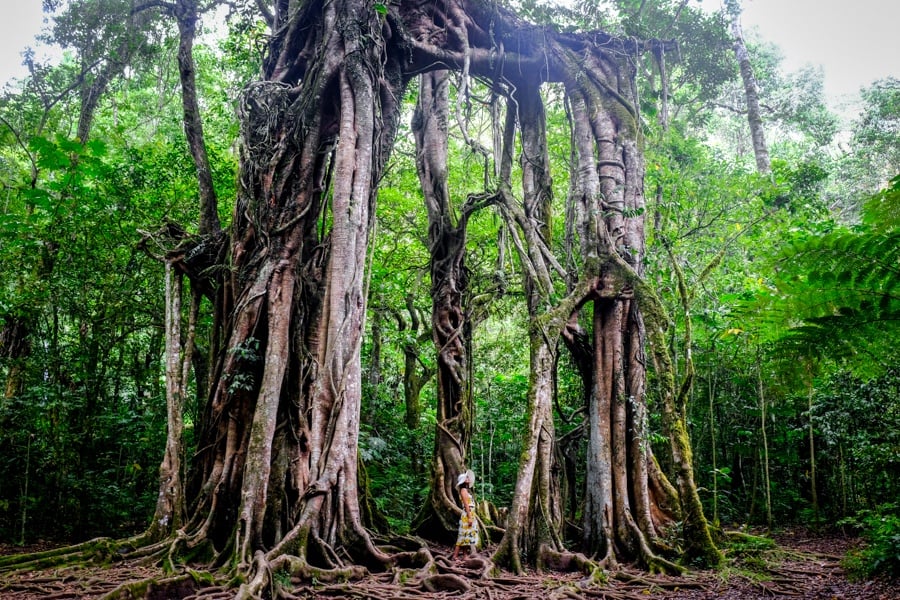
Giant banyan tree in Bali
12. Go Island Hopping
Indonesia has more than 17,000 islands, so get to hopping!
Some of our favorite places to get on a boat and go island hopping are Komodo , Belitung , Bali, and Lombok, but really you can do this pretty much anywhere in Indonesia.
In Komodo or Raja Ampat, you can even stay on a comfy liveaboard boat and spend several days roaming the seas to your heart’s content.
Read More: Best Islands In Indonesia

Batu Berlayar island in Belitung

The famous Padar Island view in Komodo National Park
13. Walk On A Sandbar
Another neat experience you can enjoy in island countries like Indonesia is to walk on a sandbar at low tide.
These are like little islands of white sand suspended in the middle of the ocean, and you can usually only walk on them for a few hours before they slowly disappear into the ocean as the tide goes up again.
You can find sandbars all over Indonesia, but two well known ones are Gili Pasir in Lombok, and Taka Makassar in Komodo.

Sandbar in Belitung

Perfect white sand
14. Get Lost In Paradise
If you’ve ever dreamed of having a remote tropical island all to yourself, with a primitive bungalow and crystal clear water as far as the eye can see, Indonesia’s got what you seek!
The best places to unwind, disconnect from WiFi, and live the Robinson Crusoe lifestyle are found in some of the small paradise islands near Sumatra, Sulawesi, and Raja Ampat. Check out Mentawai or the Banyak Islands , for example.
On Nusa Penida island (near Bali), you can even stay the night in a treehouse !

The Banyak Islands are full of paradise beaches like this one

Nusa Penida treehouse in Bali
15. Meet The Locals
Indonesian people are the nicest! I even married one !
The country has one of the lowest violent crime rates in the world, and we’ve stayed in homestays all over Indonesia without any worry. The people are really friendly and welcoming.
If you travel outside of Bali, especially in remote parts of Java or Sulawesi, you’ll probably get lots of funny photo requests from the locals excited to see a rare ‘bule’ (foreigner).

Friendly beach seller in Sanur Bali . This guy paints wooden eggs with amazing detail.

Toraja kids
16. Experience The Cultures
For every island and province in Indonesia, there’s a unique culture to go with it.
Some of the top cultural destinations in the country are Sumba, Tana Toraja (one of the world’s most unusual cultures), Wae Rebo (a remote mountain village in Flores), and of course Bali.
Bali may be touristy, but it still has a lot of great culture to soak up. The Balinese language, dress, traditions, and architecture are still very intact and haven’t changed too much since Bali became popular with foreigners.

Tanah Toraja traditional dress

Stone dragon bridge in Bali
17. Visit The Landmarks
Two of the best landmarks to see are Borobudur Temple, which is the biggest Buddhist temple in the world, and Prambanan Temple , which looks kind of like the Angkor Wat in Cambodia .
They’re both located in Yogyakarta city in central Java, and Borobudur is a popular spot for sunrise.
For natural landmarks, check out Bali’s famous Kelingking Cliff , or the iconic Padar Island viewpoint in Komodo.

Prambanan is one of Indonesia’s best landmarks

The famous Kelingking Cliff in Nusa Penida island
18. Tour The Temples
Most of Indonesia’s photogenic temples are located in Bali.
A few iconic Balinese temples you should check out are Uluwatu , Tanah Lot , and Ulun Danu Beratan .
In Java, the temples have been reconstructed from their old ruins (like Angkor Wat ), but they’re still pretty fascinating. The best Hindu temples in Java are located in the Yogyakarta area.

This pagoda on the lake is one of Bali’s most iconic temples
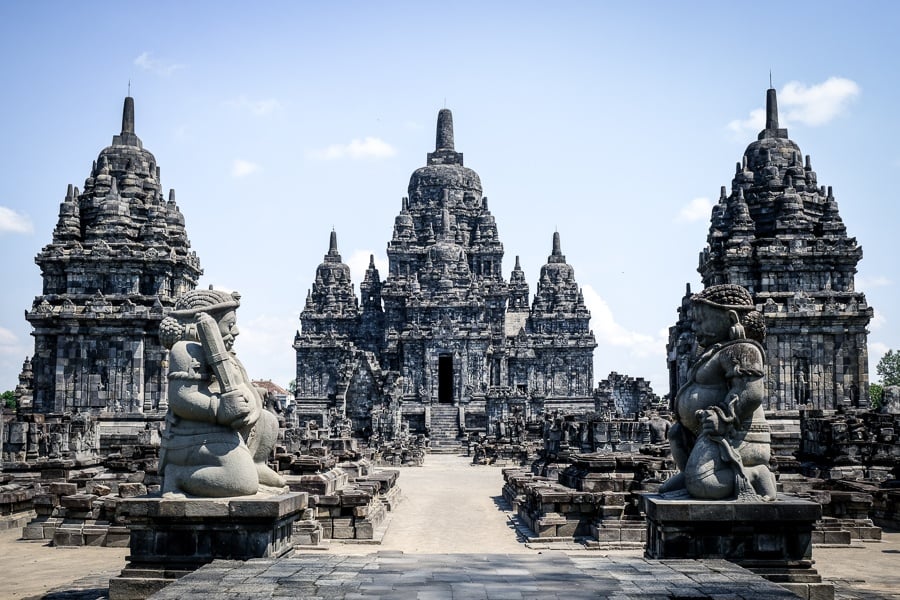
Sewu Temple in Java
19. Enjoy Indonesian Food
Indonesia has a lot of great food, and the dishes are similar to what you might find in Malaysia and Singapore .
Some good things to try are Satay Ayam (chicken skewers), Rendang Sapi (spicy beef curry), Nasi Goreng (fried rice), Martabak (omelette pancake), and for dessert Pisang Goreng (fried bananas).
Don’t expect to find hardly any Western food outside of Bali (except for the occasional Pizza Hut or KFC in big cities), but that’s okay. You’ll probably fall in love with the local food, and it’s cheap!

Indonesian food is one of the great things about visiting (© Adobe)
20. Shop For Souvenirs
Bali is the best place to do your souvenir shopping in Indonesia.
There’s a wide variety of nice handmade crafts like wood carvings, paintings, and rattan bags, and you can find the usual souvenirs like keychains and fridge magnets. Bali is also known for coffee beans, spices, oils, lace, ceramics, and silverworks.
Souvenir shopping is not really a thing in other parts of Indonesia since there’s not as much of a market for it, although we picked up some neat shirts in the Komodo National Park .

Ubud Art Market in Bali

Balinese Wood Carvings
21. Wear The Local Dress
For a really fun and unique photo op, you can wear the traditional dress in Bali and do a photoshoot at a palace or villa. The locals don’t mind this at all, and actually enjoy seeing foreigners appreciate their culture.
In Bali, it’s normal for the local Balinese couples to wear these elaborate costumes for their prewedding photos and such. Foreigners (including tourists) are also welcome to do the same, if they like! Just be respectful, of course.
My wife Intan is Balinese, so when we got married we wore a simple Balinese outfit for our prewedding ceremony, and then did a more elaborate dress-up and photo shoot at a later date, complete with fancy gold crowns and a big flowing dress for Intan. It was fun to look like the king and queen of Bali for a day.
Our costumes and makeup were done by Cahya Dewi Salon , and our pictures were done by Wikanka Photography . The pricing was very reasonable! They let us choose two great locations for the photoshoot, and then helped us strike the right poses for the camera. Overall, it was one of the most enjoyable things we’ve done in Indonesia.
In the other Indonesian islands, wearing the local dress like this isn’t common, and you’re not likely to ever have that opportunity unless you marry a local, in which case you’d be expected to dress up in the local style for your wedding ceremony. Every tribe in Indonesia has its own unique traditional dress, and all of the designs are nice.

22. Watch The Sunrise
A tropical sunrise is hard to beat, and there are a lot of great sunrise watching spots scattered across the Indonesian islands.
My first sunrise in Indonesia was at Sanur Beach in Bali , where the combination of a cool morning breeze, birds chirping, fishermen wading out on the reef, and the Mount Agung volcano in the distance was just plain magic.
In Indonesia, hiking a volcano for sunrise is popular too. Usually this means hiking during the night so you can reach the summit just in time to see a spectacular sunrise display at the top of the mountain.

Sanur Beach is one of the most popular sunrise spots in Bali

Sikunir sunrise in Java, with the Sundoro volcano in the background.
23. Watch The Sunset
For every sunrise there’s a sunset, and Indonesia has lots of great places to see it.
Our favorite sunset spot in Bali is Amed Beach , but we’ve also seen some amazing sunsets in Java, Sulawesi, and other places.
Pick an island, head west for the evening, and enjoy the photo ops!

Yeh Leh beach sunset

Crazy colors at Kastela Beach in Ternate
24. Find The Hidden Gems
We’ve spent years exploring the Indonesian islands , and still barely scratched the surface.
There are so many hidden gems waiting to be discovered in this wild and wonderful country of 17,000 islands. Many of the best things to do in Indonesia are off the beaten path.
If you want a hint, start looking in Maluku, Sulawesi, and Sumatra. All of these islands have many, many spectacular scenic places that have never been seen by foreigners yet.

Sombori Island
More Things To Do In Indonesia
Thanks for looking! I hope you enjoyed this list of some of the best things to do in Indonesia!
I’ve barely scratched the surface here, and the list is always growing as we experience more of what to do in Indonesia and its many wonderful islands.
In the meantime, don’t forget to check out my complete Indonesia Travel Guide for more tips, info, and photos of what to do in Indonesia!
When Is The Best Time To Visit?
The best time to visit Indonesia depends on what you’re looking for:
☁ Rainy season runs from November to April. The weather during the day can be hot and humid, at 32 to 35 °C (90 to 95 °F), but it’s less crowded during this time, and the rain is mostly at night. Waterfalls come alive, and the landscapes are bright green.
☀ Dry season runs from May to August. The temperatures are milder and cooler, and it’s more breezy and sunny. This is the nicest weather, and it’s perfect for hiking, island hopping, and some of the best things to do in Indonesia. It’s also the high season, so it’s generally more crowded with tourists.
Happy travels! Regardless of when you decide to visit Wonderful Indonesia, you’re sure to see some spectacular sights!
- Most Beautiful Indonesian Islands – Best Places To Visit In Indonesia
- Best Hikes In Indonesia – Volcanoes, Jungles, & Waterfalls
- Indonesia Waterfall Guide – Best Waterfalls In Indonesia
- Indonesia Beach Guide – Best Beaches In Indonesia
- Indonesia Travel Guide – Tips, Info, & Photos
You may also like
Fulidhoo island guide: shark & stingray beach in maldives, how to visit dhigurah island: budget paradise in maldives, how to visit tanjung puting national park in indonesia, sanur bali travel guide: 23 best things to do, coron vs el nido: which is better all differences explained, banggai islands travel guide & itinerary for sulawesi.
Very Informative Article Thanks a lot
Fantastic. I like your post and I shared it to my social Networks!
Fantastic guide on Indonesia’s hidden gems! Thanks for sharing these insights and encouraging a deeper exploration of this amazing country!
Leave a Comment Cancel Reply
Save my name, email, and website in this browser for the next time I comment.
Subscribe Now! Get features like

- Latest News
- Entertainment
- Real Estate
- TN 12th Result 2024 Live
- ICSE Result 2024 Live
- Lok Sabha Election 2024
- Election Schedule 2024
- IPL 2024 Schedule
- IPL Points Table
- IPL Purple Cap
- IPL Orange Cap
- The Interview
- Web Stories
- Virat Kohli
- Mumbai News
- Bengaluru News
- Daily Digest

Indonesia to relocate entire island population amid volcanic eruption threat
Mount ruang, in indonesia, erupted spectacularly last month and has been spewing ash that forced nearby airports to close and flights to be cancelled..
Indonesia will permanently relocate the entire population of an island in North Sulawesi province because a volcano is threatening their safety.

Mount Ruang erupted spectacularly last month and has been spewing ash that forced nearby airports to close and flights to be cancelled.
Ruang Island’s population of around 10,000 people is being moved to Bolaang Mongondow on the island of North Sulawesi about 40 kilometers away, Tempo newspaper reported, citing Minister of Public Works and Housing Basuki Hadimuljono. This was agreed upon following a Cabinet meeting with President Joko Widodo.
Simple, permanent homes will be built in the Bolaang Mongondow area for the resettled people, said Coordinating Human Development Minister Muhadjir Effendy on Friday as reported by Tempo.
After the evacuation the government intends to designate Ruang island as a conservation site.
Authorities have issued a state of emergency until May 14, warning of a potential tsunami should parts of the volcano collapse due to the eruptions.
Indonesia, with a population of over 270 million people, sits on the “Ring of Fire” — a series of seismic fault lines around the Pacific Ocean — and has more than 100 active volcanoes spread out across thousands of islands including popular tourist destinations.
In 2017 some 40,000 people were evacuated from villages around Mount Agung in Bali when the volcano erupted, causing a temporary slump in tourism and around $1 billion in losses.
- Tourist Spot
Join Hindustan Times
Create free account and unlock exciting features like.

- Terms of use
- Privacy policy
- Weather Today
- HT Newsletters
- Subscription
- Print Ad Rates
- Code of Ethics
- IPL Live Score
- T20 World Cup Schedule
- IPL 2024 Auctions
- T20 World Cup 2024
- Cricket Teams
- Cricket Players
- ICC Rankings
- Cricket Schedule
- T20 World Cup Points Table
- Other Cities
- Income Tax Calculator
- Budget 2024
- Petrol Prices
- Diesel Prices
- Silver Rate
- Relationships
- Art and Culture
- Taylor Swift: A Primer
- Telugu Cinema
- Tamil Cinema
- Board Exams
- Exam Results
- Competitive Exams
- BBA Colleges
- Engineering Colleges
- Medical Colleges
- BCA Colleges
- Medical Exams
- Engineering Exams
- Horoscope 2024
- Festive Calendar 2024
- Compatibility Calculator
- The Economist Articles
- Lok Sabha States
- Lok Sabha Parties
- Lok Sabha Candidates
- Explainer Video
- On The Record
- Vikram Chandra Daily Wrap
- EPL 2023-24
- ISL 2023-24
- Asian Games 2023
- Public Health
- Economic Policy
- International Affairs
- Climate Change
- Gender Equality
- future tech
- Daily Sudoku
- Daily Crossword
- Daily Word Jumble
- HT Friday Finance
- Explore Hindustan Times
- Privacy Policy
- Terms of Use
- Subscription - Terms of Use
We've detected unusual activity from your computer network
To continue, please click the box below to let us know you're not a robot.
Why did this happen?
Please make sure your browser supports JavaScript and cookies and that you are not blocking them from loading. For more information you can review our Terms of Service and Cookie Policy .
For inquiries related to this message please contact our support team and provide the reference ID below.
Thousands evacuated amid tsunami threat as Indonesian volcano erupts again
Eruptions at a remote Indonesian volcano have forced more than half a dozen airports to close with ash spreading as far as Malaysia, officials said.
Indonesian rescuers are racing to evacuate thousands due to tsunami fears.
Indonesia's Ruang volcano spewed lava again on Tuesday, less than two weeks since it first erupted.
The Center for Volcanology and Geological Hazard Mitigation had warned the residents of Tagulandang island that a tsunami could be triggered by volcanic material collapsing into the ocean.
The warning, issued on Tuesday morning local time, remained in placed as of the afternoon.
The agency raised the alert status of Ruang to the highest level following the early morning eruption, urging residents not to go near the volcano.
Indonesia's disaster mitigation agency (BNPB) said that all 843 residents living in Ruang island, where the volcano is located, have been moved to Manado, the capital of North Sulawesi province.
Residents of Tagulandang island are being relocated to Siau island to the north.
BNPB spokesman Abdul Muhari said a rescue ship and a war ship had been dispatched to help with the relocation of an estimated 11,000-12,000 people from near the volcano's crater.
"Currently local disaster mitigation agency … military and police are evacuating residents," he said.
The eruption follows a series of eruptions earlier this month that forced hundreds to evacuate, and the airport in the provincial capital of Manado to close. That eruption also caused damage to some homes.
At the time a warning about the potential for a tsunami was also issued.
Footage shared by Indonesia's disaster agency showed strikes of lightning flashing above Ruang's crater, as fiery red clouds of lava and rocks were projected into the air and rained down around the island.
The volcanology agency said the eruption column reached 5km high, and urged any remaining residents within a 7km radius to immediately evacuate, warning of possible further "explosive eruptions".
Ruang island is about 100 kilometres from Manado, the capital of North Sulawesi province in the north-central region of the sprawling Indonesian archipelago.
The eruption corresponded with a spike in seismic activity and deep volcanic earthquakes, the disaster agency said.
Authorities closed Manado's Sam Ratulangi airport again on Tuesday, citing the possible spread of volcanic ash. The transport ministry said the airport will remain closed until noon on Wednesday local time.
Authorities downgraded the status level to level three last week before bumping it up again to level four on Tuesday.
Indonesia straddles the so-called "Pacific Ring of Fire," an area of high seismic activity where multiple tectonic plates meet.
ABC/Reuters/AFP
- X (formerly Twitter)
Related Stories
Indonesia issues tsunami alert as volcano erupts.
Foul-smelling sulphur and the risk of death won't stop tourists from climbing Indonesia's active volcanoes
Climbers killed, survivors found after Indonesian volcano erupts
Indonesia's Mount Merapi volcano spews rock, lava and gas 7km high
- Disasters and Hazards
- Disasters, Accidents and Emergency Incidents

COMMENTS
With tens of thousands of islands scattered some 5000km (3100mi) from east to west, Indonesia looks like anything but a single country. Vast seas, impenetrable jungles, rugged mountains and rough roads require extra patience for those who want to explore this fascinating archipelago. But the good news is, traveling has been easier in recent years.
It was hot and muggy but bug-free. Borneo is Asia's largest island and the third-largest island in the world. It is divided into Indonesia, Malaysia, and Brunei, with Tanjung Punting located in Indonesia. Tanjung Punting National Park contains 1,174 square miles of swamplands and rivers which connect to the Java Sea.
Mastering Indonesian currency dynamics will make transactions smooth, prevent overpayment, and keep your money secure. Understanding the rupiah allows you to focus on the adventure, not the accounting. 14. Download Offline Maps. Navigating between Indonesia's 6000+ islands can be challenging, so utilizing offline maps is a must.
There are a number of options for traveling between Bali and Lombok. The cheapest and easiest way to travel between the two islands is by ferry, costing around $4 dollars one way. The trip takes between 5 and 6 hours, with ferries leaving every hour. The journey is very scenic, with lovely ocean views.
The islands in this Indonesia Route, Bali, Java, and Komodo National Park, are all well connected. Travel easily with a backpack or suitcase via trains, planes, or car. In populated areas, you can also use transport services like Go-Jek. You can easily arrange transport from your current location in Indonesia.
Flights can be a quicker and cheaper way to travel between the Indonesian islands, especially if you take into account en-route costs aboard long-haul buses and boats. As airlines have competed fiercely for booming business, safety standards have lagged behind. However, in August 2016, foreign air safety regulators upgraded the country's ...
2. Komodo National Park. The UNESCO-listed Komodo National Park is a captivating destination situated in the Lesser Sunda Islands of the East Nusa Tenggara province. The park includes several islands, with the main ones being Komodo, Rinca, and Padar, along with several smaller islands and islets.
Indonesia is a nation made up of islands, so boats are an essential way to hop between the islands. There are two main types of boats that you'll be using for inter-island travel; fast boats and ferries. Fast boats are used mainly by tourists. As the name suggests, they are faster than ferries and are usually similar to speedboats.
The trip combines travel by rail to Banyuwangi with a bus and RORO ferry ride across the strait to Bali, terminating at the island capital Denpasar (Bali's main transportation hub). Booking a train trip: The government rail line's website offers booking services, though English speakers will find the Indonesian-only interface difficult to navigate.
Indonesia is an island archipelago nation, a conglomerate of over 17,500 islands, only 6000 of which are inhabited. It's a country of immense natural beauty, stunning diversity, ancient history, fascinating traditional cultures and some of the friendliest people you will ever meet. From the terraced rice fields of Bali and the jungles of ...
Ferries form the backbone of inter-island travel in Indonesia, with regular ferries connect neighbouring islands like Sumatra and Java, and Bali and Lombok. The state-run Pelni (www.pelni.co.id) is the largest ferry company and has passenger liners serving all main ports across the archipelago. Another company, ASDP (www.indonesiaferry.co.id ...
With 17,000 Indonesian islands scattered between the Asian mainland and Australia, the archipelago has all you need for a stunning vacation of exploration. With natural wonders, curious wildlife, and more, traveling Indonesia should definitely be on your bucket list! ... Domestic flights can be a quicker and cheaper way to travel between the ...
With 17,508 islands, of which more than 6,000 are inhabited, there is plenty of choice when it comes to a holiday on one of the islands of Indonesia. The best known or most visited Indonesian islands are Java, Kalimantan, Sumatra, Bali, Lombok, Sulawesi, Flores and the Gili Islands, but there are a lot more.
Car ferries also exist between many of the islands, and if you travel long distances this way you'll most likely be sleeping in your car. Resources: IndonesiaFerry.co.id Pelni.co.id (Indonesian ...
Read our Indonesia travel guide for everything you need to know before you go. Indonesia travel facts; Size: The Indonesian archipelago covers a lot of ground, with 17,000-plus islands spread over 5200km between Asia and Australia. Population: 255 million - and the world's largest Muslim population.
The Pura UlunDanu Bratan temple at Bali. First on any list of the best islands to visit in Indonesia should be Bali, the 'Island of the Gods'.Undoubtedly the most well-known of any of the islands, Bali offers visitors an Indonesia in miniature, with a varied landscape that ranges from traditional rice terraces to the active volcano Mount Batur, breath-taking beaches, an intriguing Hindu ...
Ferry - To get between islands, the boat leaves Gili Trawangan twice per day, at 9:30am and 4pm. It first stops at Gili Meno, then Gili Air, before heading back to Gili Trawangan. The one-way ride is about 50,000 IDR. It's also possible to charter a private boat, which costs about 200,000 IDR one-way.
Here's a 4K drone video I filmed during our many travels across Indonesia. This video includes some of the best places to visit in Indonesia, including Bali, Nusa Penida, Java, Flores, Maluku, Sumatra, Belitung, Sulawesi, Labengki, Sombori, and other islands. Indonesia 4K Drone - Java, Sulawesi, & Sumatra - Islands, Volcanoes, & Waterfalls.
Here is Culture Trip's ultimate travel guide to this exceptional slice of paradise. The Gili Islands — Gili Trawangan, Gili Meno, and Gili Air — have many things in common: idyllic beaches, exotic marine species roaming the crystal clear water, and a laid-back beach vibe that makes you want to drink a cocktail out of a coconut.
To help you prepare for the journey of your lifetime, we've put together a brief travel guide that highlights all you need to know to travel to Indonesia. 1. Determine Your Itinerary. To start with, you can find unique itineraries here and explore Indonesia at its finest by booking an Indonesia cruise. This kind of cruise is best for anyone ...
3. Visit The Waterfalls. Pretty much every island in Indonesia has at least a few stunning waterfalls if you do a bit of exploring. A lot of the best waterfalls in Indonesia are located in Sumatra and Java, but even the smaller islands like Bali and Lombok have some great ones too.. A great place to chase waterfalls in Indonesia is at the Ciletuh Geopark in West Java, which is a UNESCO ...
Indonesia, with a population of over 270 million people, sits on the "Ring of Fire" — a series of seismic fault lines around the Pacific Ocean — and has more than 100 active volcanoes ...
Indonesia will permanently relocate the entire population of an island in North Sulawesi province because a volcano is threatening their safety. Mount Ruang erupted spectacularly last month and ...
Indonesia's disaster mitigation agency (BNPB) said that all 843 residents living in Ruang island, where the volcano is located, have been moved to Manado, the capital of North Sulawesi province.